here



“ I wanted to go to a tight-knit art school, and PrattMWP had one of the best campus communities that I saw when visiting schools.






“ I wanted to go to a tight-knit art school, and PrattMWP had one of the best campus communities that I saw when visiting schools.




I am honored to join PrattMWP as the Dean of the School of Art. PrattMWP is an exceptional school that embraces the rigorous and acclaimed Pratt Institute curriculum in a small and nurturing environment, emphasizing individual attention with mentorship by a distinguished faculty of practicing artists and academics. All students enrolled at PrattMWP are part of Pratt Institute’s four-year BFA degree program and after completing the first two years in Utica, PrattMWP students seamlessly relocate to Pratt Institute’s main campus in Brooklyn, New York ready to thrive during their junior and senior years.
PrattMWP is committed to fostering a community that is multi-faceted and inclusive, with a lens on equity. PrattMWP celebrates diverse perspectives and welcomes students to upstate New York from over 44 states and from nearly 40 countries around the globe. Coursework builds valuable skills, methods, and vocabulary in tandem with conceptual investigations and challenges students to become effective creative problem solvers and strong critical thinkers.
MWPAI is your studio. Uniquely situated within the Munson-Williams-Proctor Arts Institute, PrattMWP students are immersed in a rich cultural experience with exhibitions, concerts, and films only steps away at the world-renowned Museum of Art, which boasts a collection of over 25,000 works of art by famed artists.
Students also take advantage of the variety of inspiring events offered by the Performing Arts series, such as live performances and cinematic arts.
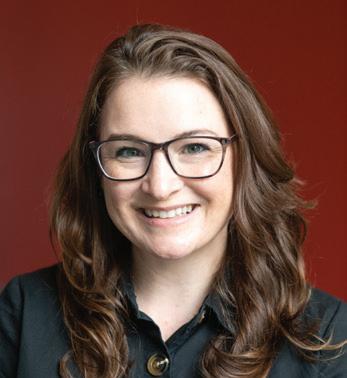
A top art school in the world prepares you for a successful creative career. The vibrant, creative community paired with the rigorous curriculum at PrattMWP and Pratt Institute are continuously recognized in the top 10 rankings for art, design, and architecture. Our students become successful artists, designers, illustrators, curators, educators, journalists, and filmmakers, among many others, shaping their communities in creative careers around the world.
Please visit us. I extend an open invitation to visit PrattMWP’s stunning campus, witness the extraordinary student work, and meet the dedicated faculty and staff. You will undoubtedly understand why completing your foundation years at PrattMWP is a superb choice for an education at one of the top art and design institutions in the world.
PrattMWP supports you. I hope that you will always be curious, ask questions, and follow your passions, while knowing that faculty and staff at PrattMWP are here to support you along your journey. You are the cultural producers of now and of the future. Welcome!
Dean of the School of Art

PrattMWP College of Art and Design, ranked among the top design schools by Graphic Design USA, is Pratt Institute’s upstate New York extension center in Utica, New York, located approximately four and a half hours northwest of New York City and conveniently located near Albany, Rochester, and Syracuse, New York.
PrattMWP offers the first two years (same classes) of Pratt Institute’s renowned four-year Bachelor of Fine Arts Degree (B.F.A.) in:

Communications Design (Graphic Design, Illustration)
(Animation Career Review ranked Pratt the number one graphic design school in New York in 2020)
Fine Arts (Painting, Drawing, Sculpture and Integrated Practices, Jewelry, Printmaking)
(Ranked among the top programs by College Factual)
(Ranked fifth of 127 colleges nationwide (top five percent) offering film, video and photographic arts by College Factual)
PrattMWP is home to 200 residential students who relocate to Utica from around the world to attend the art and design college. Approximately 25 percent of enrolled students are from outside the United States, creating a rich and diverse community.
Modern, fully equipped studios and a distinguished faculty of professional artists and designers ensure the highest quality education, and our 10-to-1 student-to-faculty ratio enables individualized attention in every class. PrattMWP provides an intimate and nurturing environment, allowing students to develop as creative individuals.
After completing the curriculum at PrattMWP, you automatically relocate to Pratt Institute’s main campus in Brooklyn to complete the final years of your bachelor’s degree. While most PrattMWP students (about 98 percent) decide to relocate to the main campus in their junior year to finish their B.F.A., you also have the option of applying to any other art and design school as a transfer student.
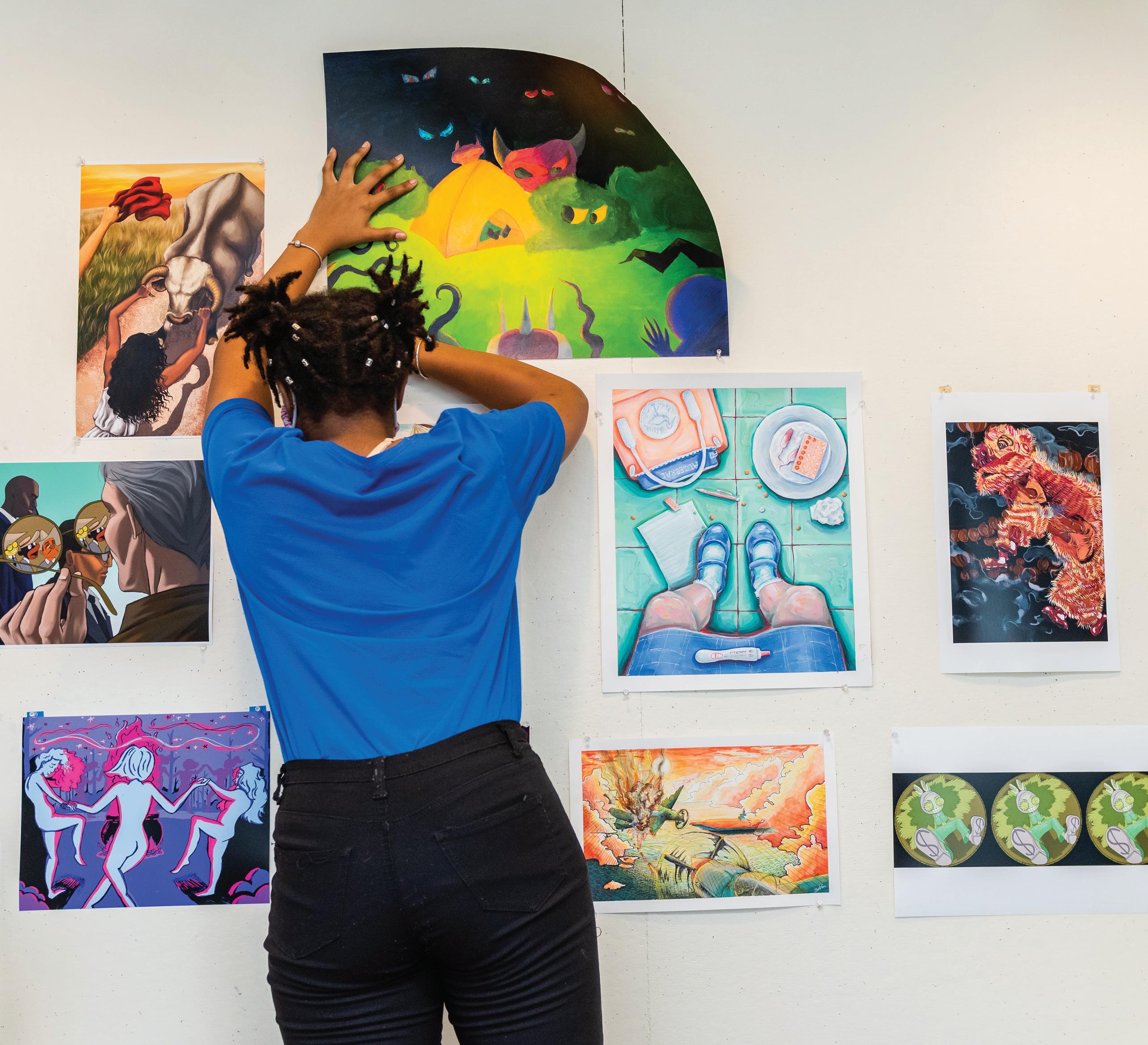
I came to PrattMWP looking for a place that would challenge me artistically. I picked the right place.
“
PrattMWP’s charming campus is located in downtown Utica, New York, a relatively small city of prominent architectural landmarks and beautiful Victorian homes. The campus features a mix of historic and contemporary architecture, as well as state-of-art facilities and generous on-campus housing. It is also home to the Munson-Williams Museum of Art, featuring an active changing exhibition program and a celebrated collection of more than 15,000 works of art including works by modern masters Salvador Dali, Pablo Picasso, Andy Warhol, and Jackson Pollock.
Once you finish your first two years at PrattMWP, you relocate to Pratt’s main campus in Brooklyn, New York, as a junior to complete the last two years of your B.F.A. program. Home to more artists and designers than any other city, New York City provides you with an exceptional learning environment that extends beyond the Pratt
campus. From design firms and art galleries where you can intern, to museums and concert halls where you can enjoy all of the city’s cultural offerings, Pratt’s New York City location is unparalleled.
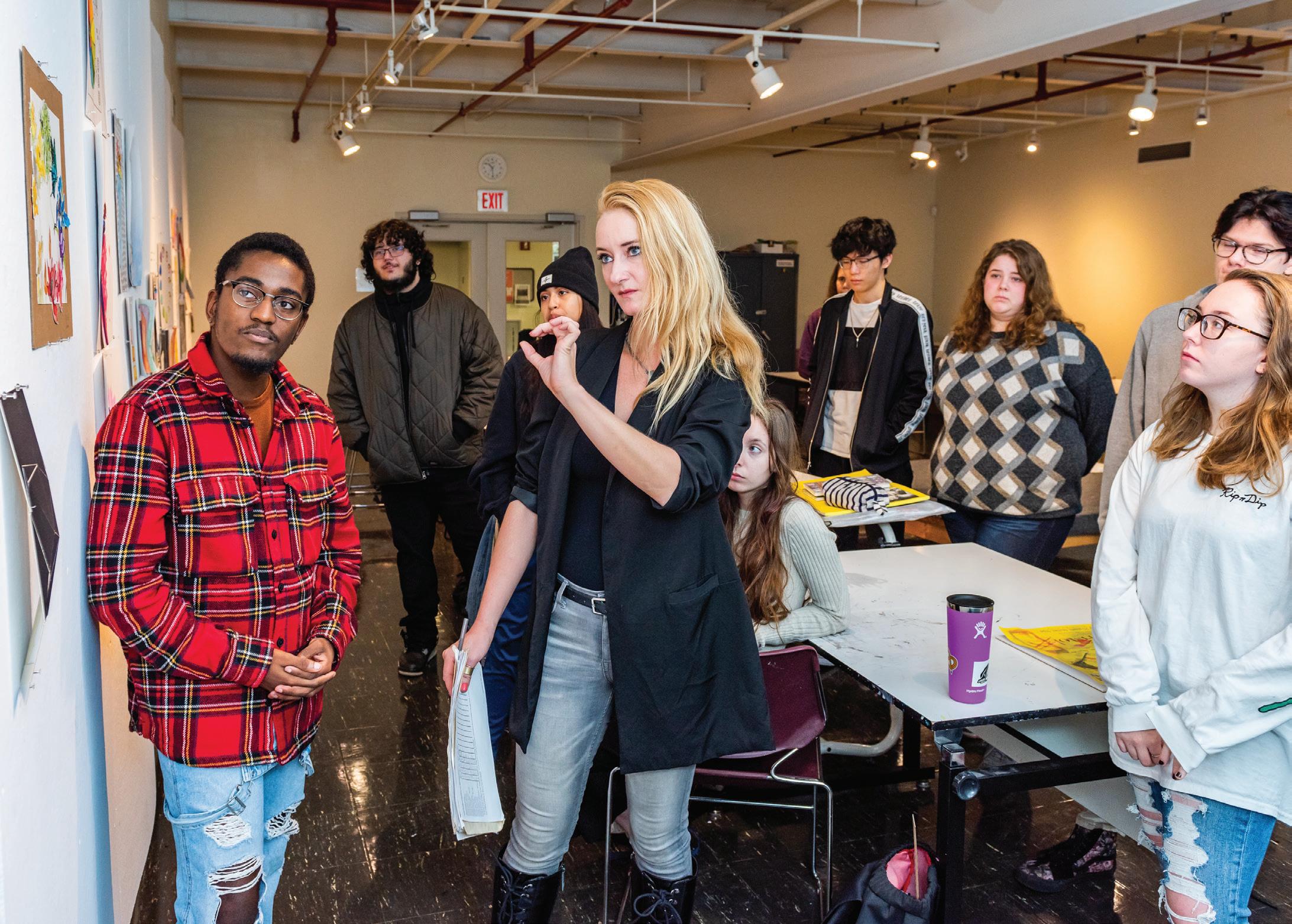
PrattMWP was ranked among the top US design schools in Graphic Design USA. Pratt Institute, one of the world’s most prestigious colleges of art, design, and architecture, was ranked among the top design schools of the past half-century in Graphic Design USA, among top design schools by BusinessWeek, first in New York and second in the United States by College Factual, 2019, and among the top seven in the world in QS World University Rankings by Subject.
The transition to Brooklyn is automatic. No separate application is required to relocate. Students must complete the program at PrattMWP before relocating to Pratt Institute in year three.
Note: Transfer students are evaluated for transfer credit and may complete the program at PrattMWP in fewer than two years. They will be evaluated for advanced standing based on their portfolio and the similarity of studio courses taken at any previous college.
Once you complete your final years at Pratt’s main campus, you receive your B.F.A. from Pratt Institute and become part of a prestigious community of talented alumni from both Pratt Institute and PrattMWP College of Art and Design. PrattMWP’s curricula are virtually identical to Pratt’s, ensuring a world-class education and a seamless transition.
Read more about the transition to the Brooklyn campus on page 15
Pratt’s distinguished faculty and its Center for Career and Professional Development help students obtain both internships and jobs. In fact, in Pratt Institute’s 2020 survey, 99 percent of its undergraduates were employed within one year of graduation.
PrattMWP’s professors are all practicing artists and designers who mentor students and help them reach their full potential as creative individuals. Class sizes are small, ensuring that you work closely with your professors and receive individualized attention.
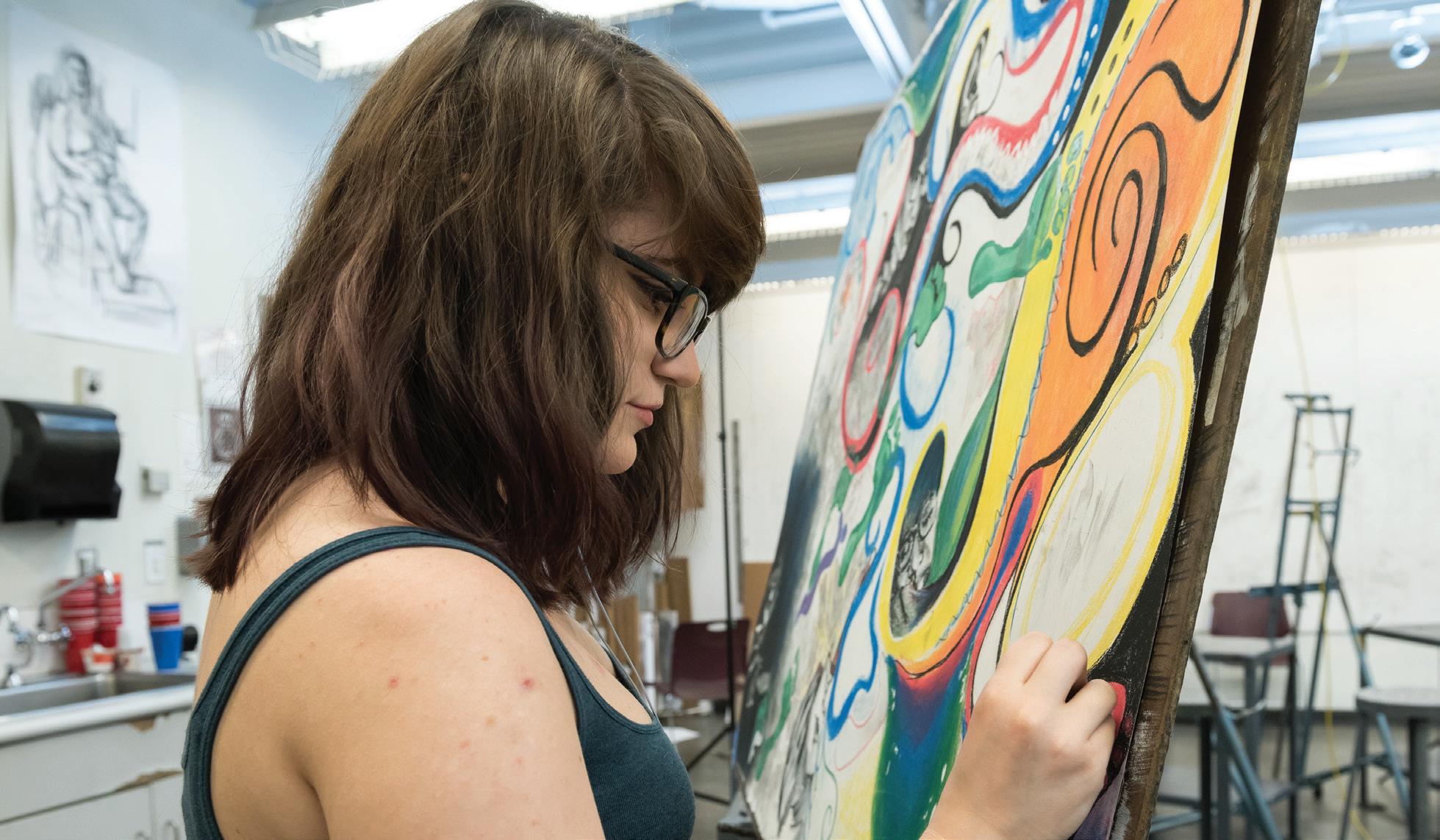
PrattMWP’s tuition is substantially less than Pratt’s main campus and most other top art and design schools for the first two years, and PrattMWP automatically considers all accepted incoming first-year and transfer students (US citizens, permanent residents and international students) for generous merit-based scholarships, up to approximately half tuition, with no separate application required. PrattMWP students are also considered for generous scholarships when relocating to Pratt Institute in year three based on their cumulative GPA at the end of the first semester of their sophomore year at PrattMWP.
PrattMWP students receive scholarships not only to Pratt Institute in Brooklyn but also to some of the best art and design schools in the country. Beginning your education at PrattMWP could be the most affordable choice for obtaining your BFA.

In 1999, Pratt Institute joined forces with MunsonWilliams-Proctor Arts Institute (MWPAI) to give students the option of starting their Pratt education at a smaller, more intimate campus where they could develop their skills and focus on their work. The combination of MunsonWilliams distinguished arts community and Pratt’s strong reputation and curriculum developed into a focused, passionate, and supportive learning environment that attracts young artists and designers from around the world.

Founded in 1941, the Munson-Williams School of Art focused on creating an art program that instilled the principles of a strong visual arts foundation. Established with the intention of providing an exceptional preparatory program in art, Munson-Williams students, after completing the two-year program, would continue their education at top schools throughout the country, including Pratt Institute. The School was granted the authority to confer the Bachelor of Fine Arts degree by the State of New York in 1948.
As Munson-Williams continued to receive monumental acclaim, Pratt Institute and Munson-Williams saw an op portunity to combine their strengths. Pratt Institute, interested in the consistently high-quality students coming out of Utica, formed an affiliation with Munson-Williams and created PrattMWP. The upstate institution welcomed the alliance since Pratt could offer an outstanding benefit to the students: a clear path to their B.F.A. degree at one of the world’s preeminent art colleges through a seamless relocation to Pratt’s Brooklyn campus in their junior year.
Since the union, PrattMWP has added new studio buildings and classroom spaces, state-of-the-art computer labs, and new residence halls.
Munson-Williams was established in 1919 to serve as “an artistic, musical and social center.” The Institute was named for three generations of one Utica family whose philanthropic generosity supported the fundamental belief in the prominent role the arts play in a vibrant community. Munson-Williams creates transformational arts experiences that cultivate curiosity and creativity, enlighten, educate, and inspire.
In 1936, Munson-Williams opened to the public, displaying the vast collection of fine and decorative arts objects amassed by the family and organized concerts of highly acclaimed classical musicians. The MunsonWilliams Museum of Art houses a collection of more than 15,000 works of art. The renowned American modern and contemporary collection is noteworthy for its works by Charles Burchfield, Susan Rothenberg, Edward Hopper, Jackson Pollock, and Louise Bourgeois to name a few. In addition, the Museum has a distinguished group of paintings and sculptures by leading European Modernists, including Salvador Dali, Wassily Kandinsky, and Pablo Picasso. The Performing Arts division at Munson-Williams offers live stage performances, children’s concerts, and a superb film series throughout the year, all of which are free to PrattMWP students.

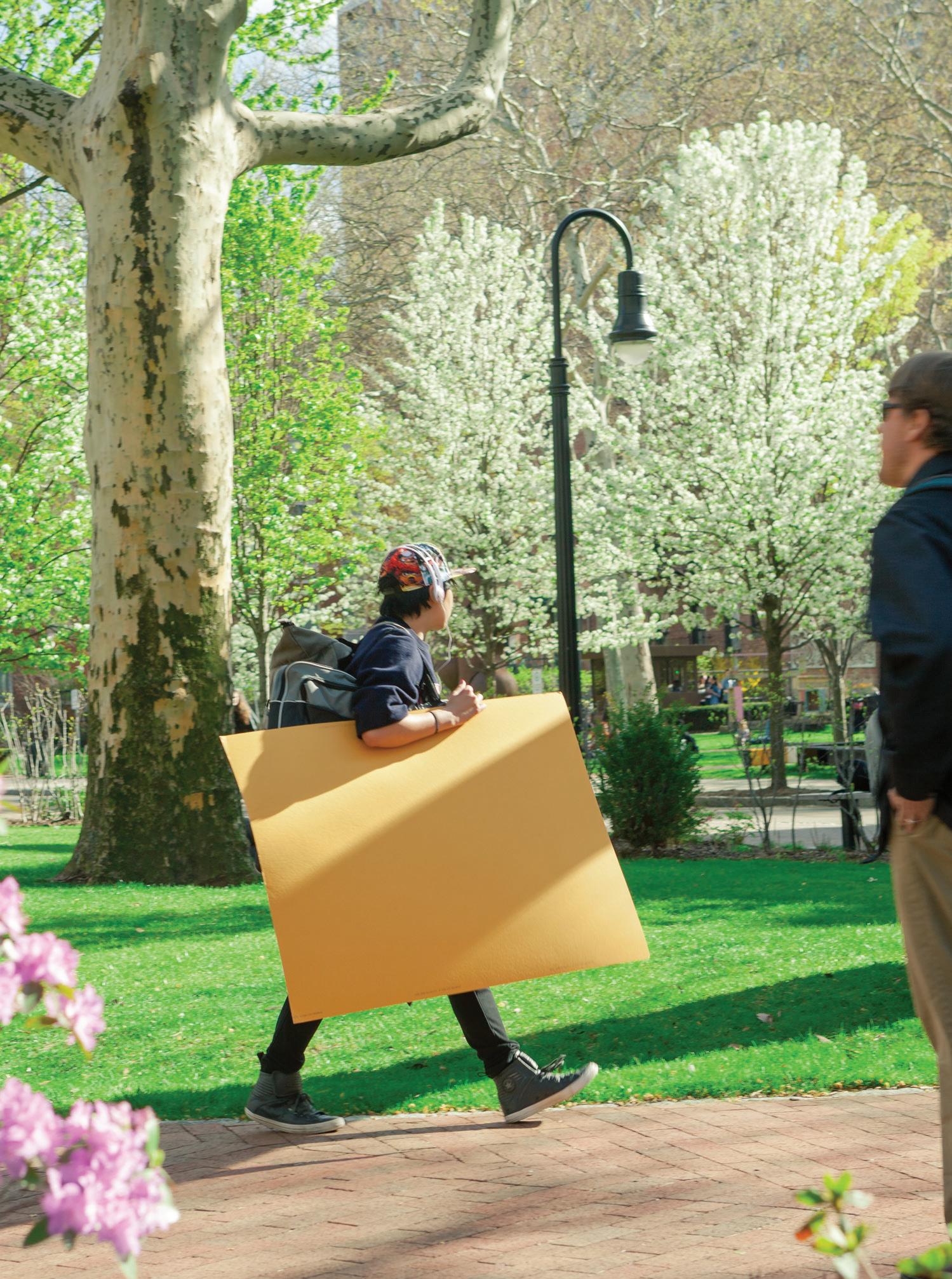
Students who relocate to Pratt Institute are considered continuing Pratt students and not transfer students. Note: PrattMWP students are required to complete the full curriculum on the Utica campus with at least a 2.0 cumulative GPA (and at least 54 credits with all studio courses completed) before they relocate to the Brooklyn campus. Once completed, students need only indicate their interest in continuing their education at Pratt’s main campus in Brooklyn, New York. No application is required to relocate, and the transition is seamless as long as you are in good academic standing.
PrattMWP organizes a yearly relocation trip for its students to visit the Brooklyn campus in their sophomore year. Students become acquainted with Pratt by touring the campus and meeting with faculty, administration, and current students. Many students reacquaint themselves with their former classmates from PrattMWP and hear first-hand about the transition. The trip also enables students to spend time in their specific departments and learn what to expect throughout their junior and senior years at Pratt.
During a student’s last semester at PrattMWP, financial aid, registrar, and advising offices from both Pratt Institute and PrattMWP work together to ensure that students are prepared for the start of their junior year in Brooklyn, New York. Students will secure housing, financial aid, and register for classes.
Students are evaluated for scholarships to Pratt Institute’s Brooklyn campus based on their cumulative GPA at the end of the first semester of their sophomore year at PrattMWP. When relocating to Brooklyn, students must have at least a 2.5 GPA to be eligible for a relocation scholarship, and must maintain a 2.5 cumulative GPA to retain the scholarship while at PrattMWP.
Students who complete the first two years at PrattMWP but decide they want to change their major when they relocate to Pratt must submit a request to the PrattMWP Registrar. Acceptance to a different program at Pratt is not guaranteed, although every effort is made to accommodate students. Students accepted to a different program at Pratt may need to take an additional year to complete their B.F.A. degree. Students interested in switching to fashion or architecture will require an additional two to three years. Note: Architecture is a five-year program.
Living in Brooklyn and being able to explore the city is something I really look forward to, and also being in an area that has so much opportunity for me after graduation.
“
PrattMWP students come from all over the world— more than 40 states in the US and over 40 different countries—making our campus a diverse and exciting place to study and meet new friends with similar interests.
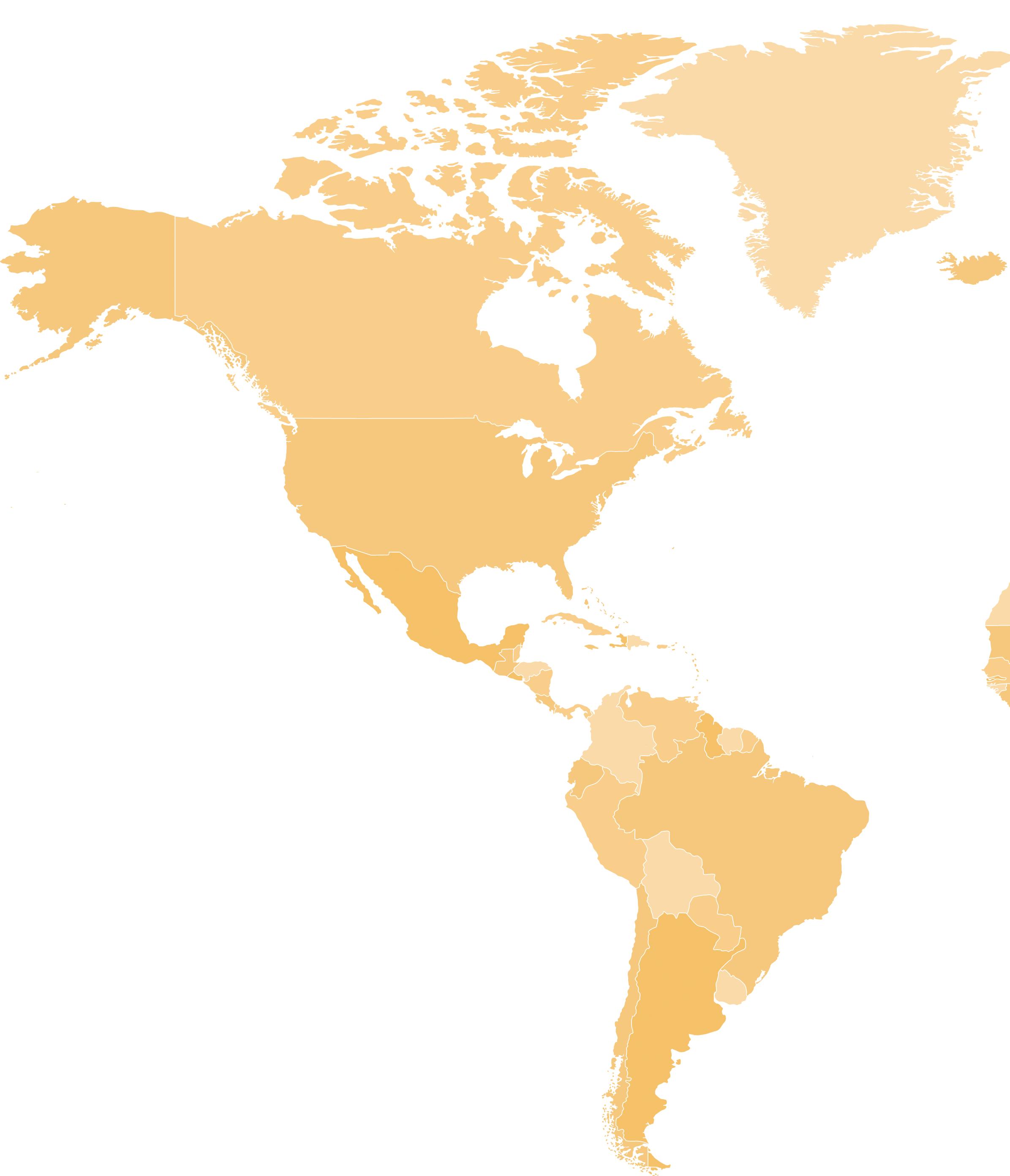
THE BAHAMAS JAMAICA
ARUBA
DOMINICAN REPUBLIC BARBADOS PUERTO RICO
VENEZUELABRAZIL
UNITED KINGDOM
SWITZERLAND
PAKISTAN
UNITED ARAB EMIRATES

INDIA
CHINA SOUTH KOREA
THAILAND
CAMBODIA
MALAYSIA
SINGAPORE
PHILIPPINES
PrattMWP is very diverse. It’s refreshing to make friends that live halfway across the world!
“
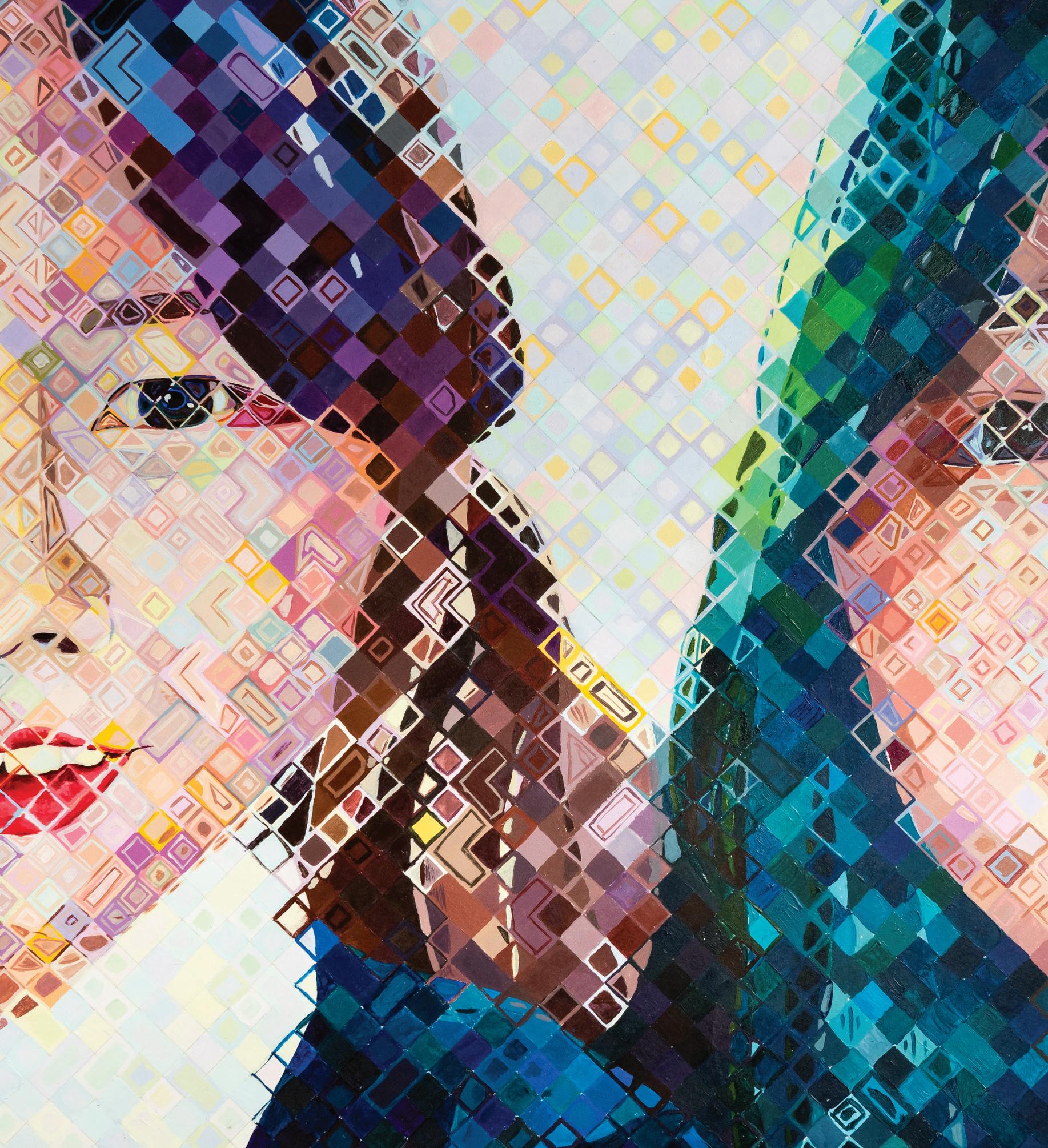
PrattMWP and Pratt Institute’s first-year core, the foundation year, is a prerequisite to all the professional programs in the Schools of Art and Design. Pratt’s faculty throughout the Institute have worked together to carefully craft a comprehensive year-long course of study that prepares you for future study in the School of Art or the School of Design.
The curriculum was designed with two major outcomes in mind: (1) you will be introduced to concepts, materials, and modes of working common to all art and design practice, and (2) you will become a confident practitioner of the design and creative process. You will leave the first year with the confidence and conviction necessary to continue studies in your chosen field.
The primary objective of the first-year foundation core is to develop and expand your visual thinking through a critical practice of methods and processes of creativity. To accomplish this, you participate in a series of studio experiences that deal with the analysis of problems in perception, conception and imagination. The studio work encompasses both 2- and 3-dimensional forms in their optical, technical, and symbolic natures. In addition, you receive an introduction to 4-dimensional (time-based) arts through the use of computers and other media. At one point, you may deal with specifically designed structural problems, and at another point, you may examine these problems from expressive, social and historical perspectives. Through this process, individual imagination, skill, ambition and preferences are examined.
The foundation core helps you evaluate your previous art experience in light of new ideas and techniques. This grounding in underlying concepts and principles of the visual arts puts professional aims in an historical perspective. Before specialization in the sophomore year,

the core curriculum encourages flexibility, adaptability and the experience of design and art as wide ranging enterprises.

Transfer students will be evaluated for advanced standing based on their portfolio and the similarity of studio courses taken at any previous college.
View the foundation-year courses in the Curriculum Section on page 65.
Space, Form, Process, Class Project Right: Lindy CallahanIt’s very rewarding to see how far I’ve come in skill and knowledge that I’ve gained from each of my professors.
“


 Katana Groce-Thompson
Katana Groce-Thompson

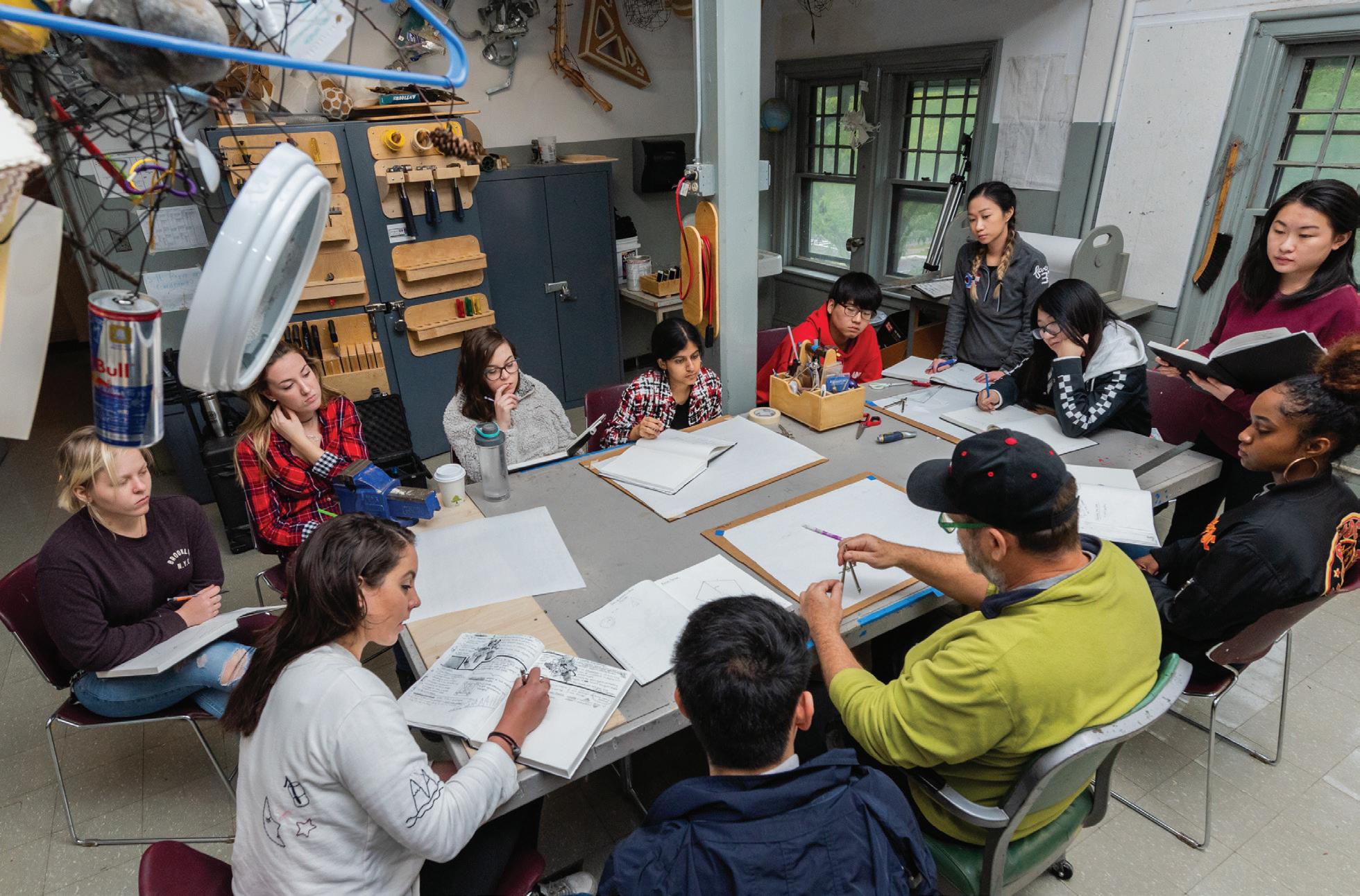 right: Skylar Schmitt
Hailey Henrikson
right: Skylar Schmitt
Hailey Henrikson

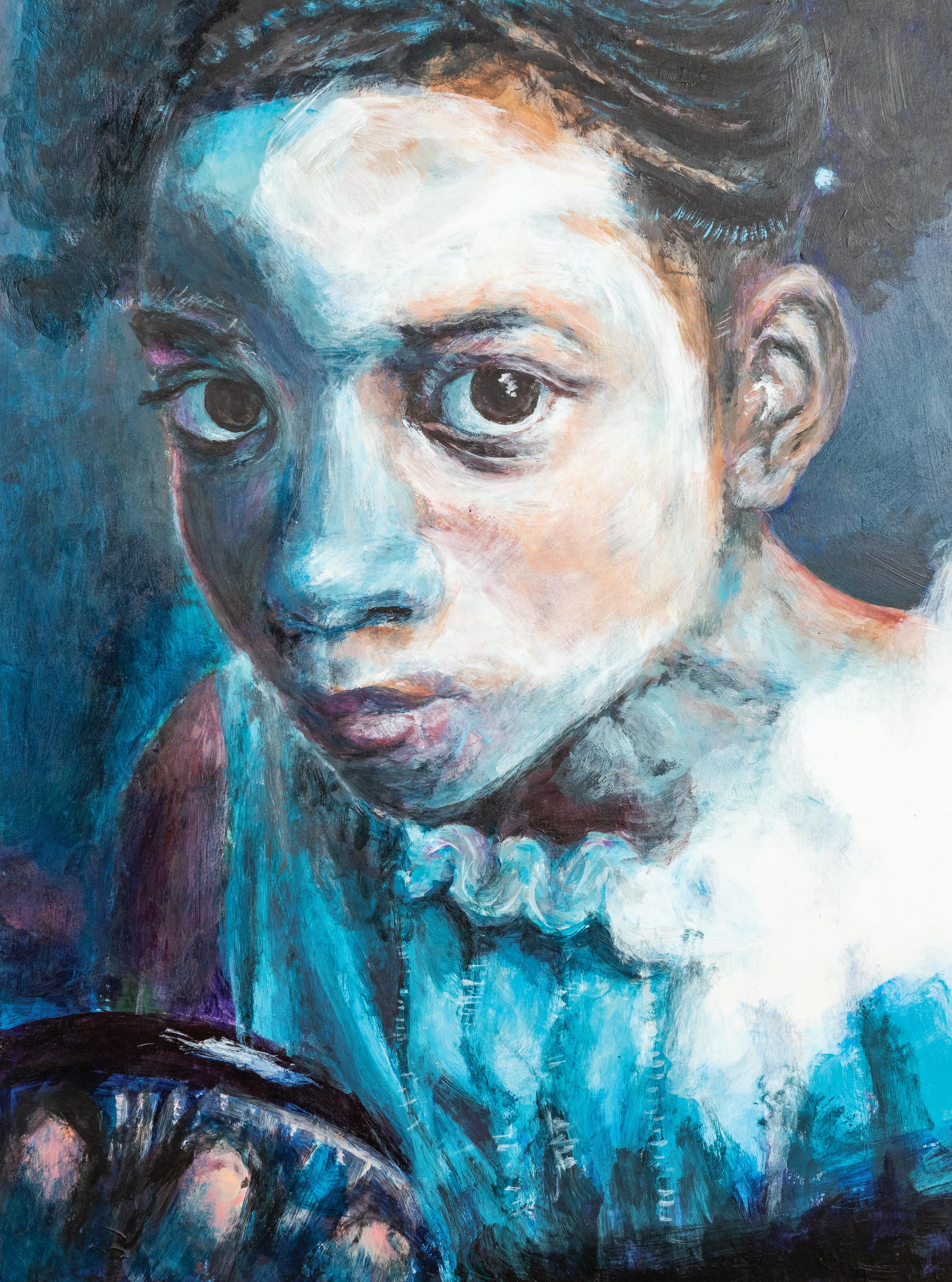
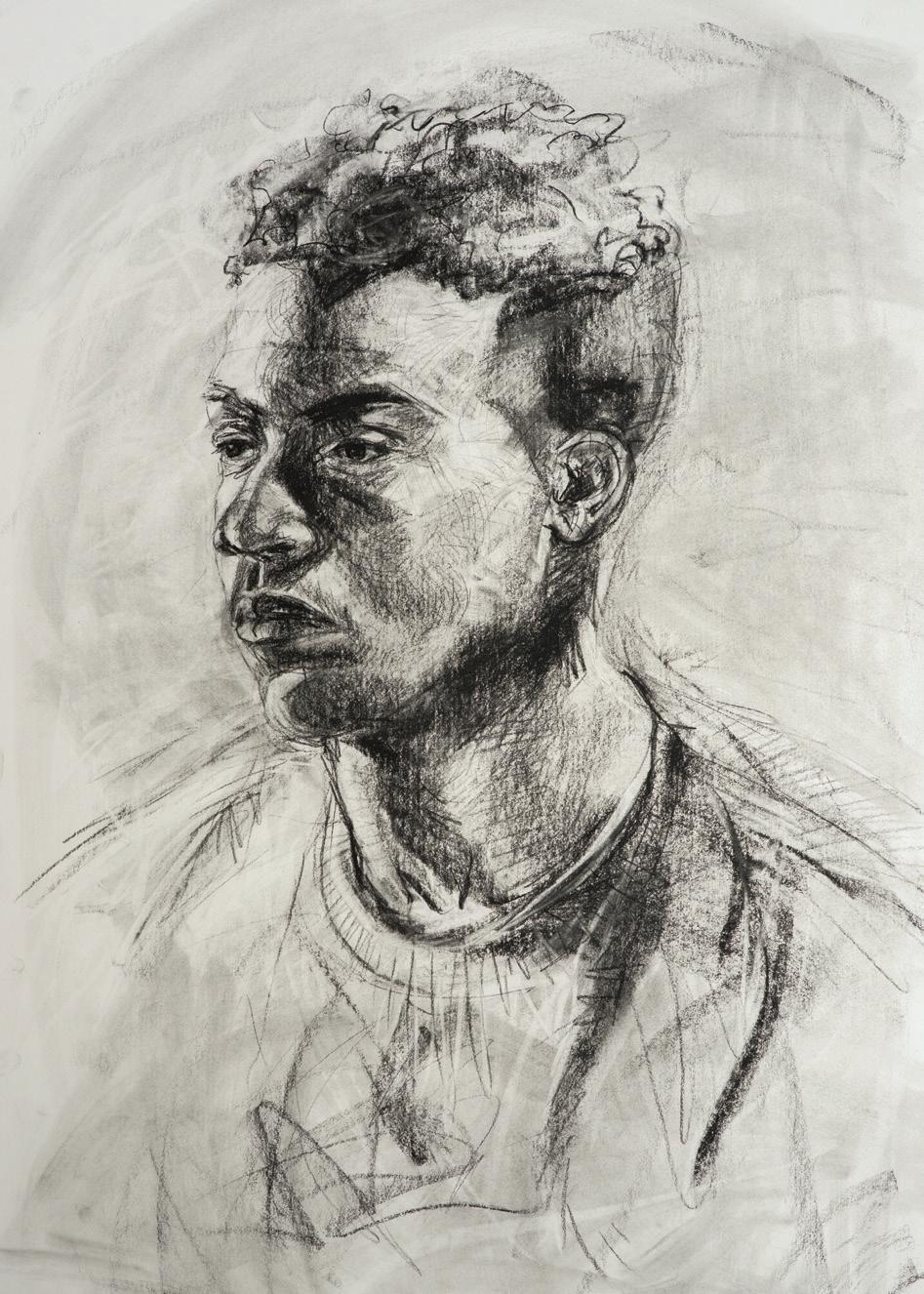
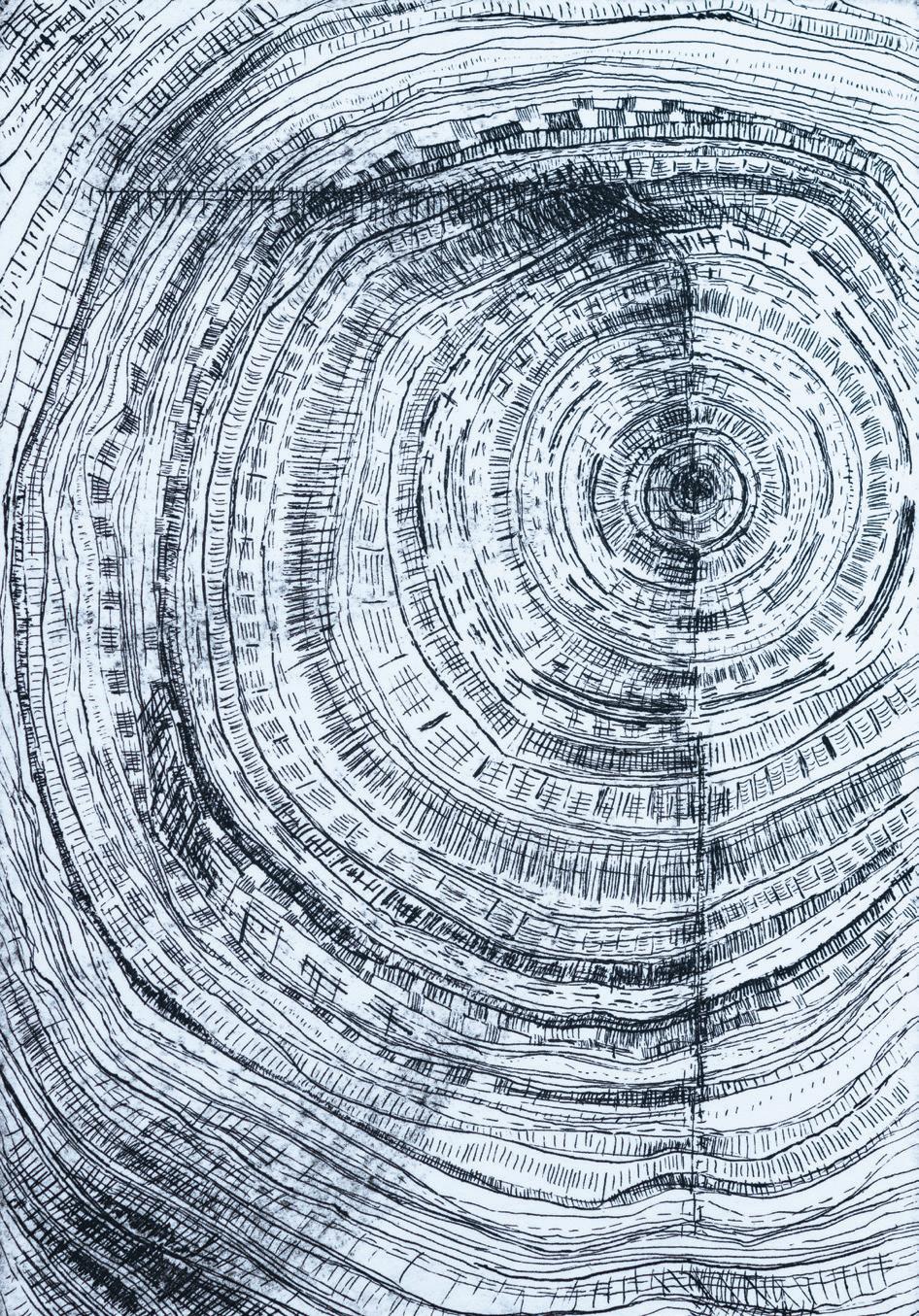

 Kristina Selinski
Betsy Bamford
Sojin Kim
Ellie Farr
Kristina Selinski
Betsy Bamford
Sojin Kim
Ellie Farr
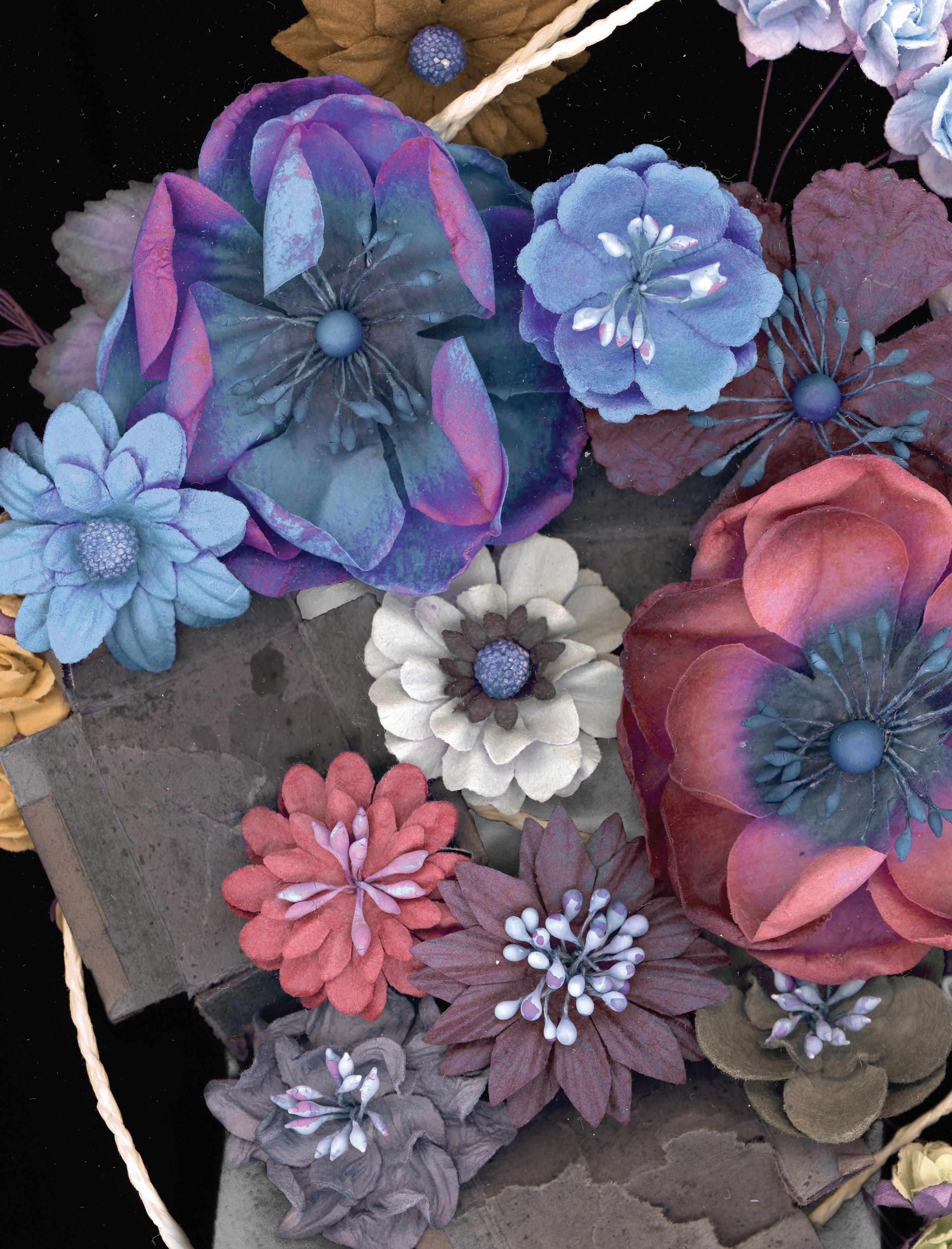
Teaching is a creative process. To direct, train and educate artists requires more than knowledge of art. An effective teacher must communicate visual ideas, facilitate creative growth and engender a desire for learning to prepare artists for professional challenges. You prepare for your Bachelor of Fine Arts degree with a major in Art and Design Education by completing the foundation art courses in your freshman year and then developing both your visual and communication skills during your sophomore year.
You will engage in a variety of fieldwork experiences in which personal connections between studio, education theory, and classroom practice can be made. Making art and teaching art become complementary activities. Students who major in art and design education may then go on to earn a New York State Initial

Certification in teaching fine arts in grades Pre-K through 12.
View the Art and Design Education curriculum in the Curriculum Section on page 66.
 left: Austin Pilars
left: Austin Pilars

Ranked third of the top 20 best visual communications degree pro grams by graphicdesigndegreehub.com, the Communications Design program at Pratt and PrattMWP builds on the relationships between Graphic Design and Illustration as the key modes for visually expressing an idea. Words, images, motion and sound— whether on a page, wall, television, laptop or phone—are the tools you need to communicate a message across all platforms.
The curriculum provides instruction in a broad base of skills relevant to all three areas in the sophomore year and offers studio courses that are increasingly specific to each in the junior and senior years.
Courses emphasize the history of design, sustainability, and social awareness in addition to technical process to teach you to be a creative problem-solver and masterful visual architect.
In Communications Design, all studio techniques and tools are taught to be useful in the design process. You enter the junior year with an excellent foundation in all media, including painting, drawing, and 2- and 3-dimensional design, confidently utilizing critical thinking, problem solving, typography, photography, and current computer software.
With the guidance of our faculty, you discover the practical appli cation of your in-class assignments by designing logos, corporate identities, and ad campaigns for local and national organizations.
View the Communications Design curriculum in the Curriculum Section on page 67.

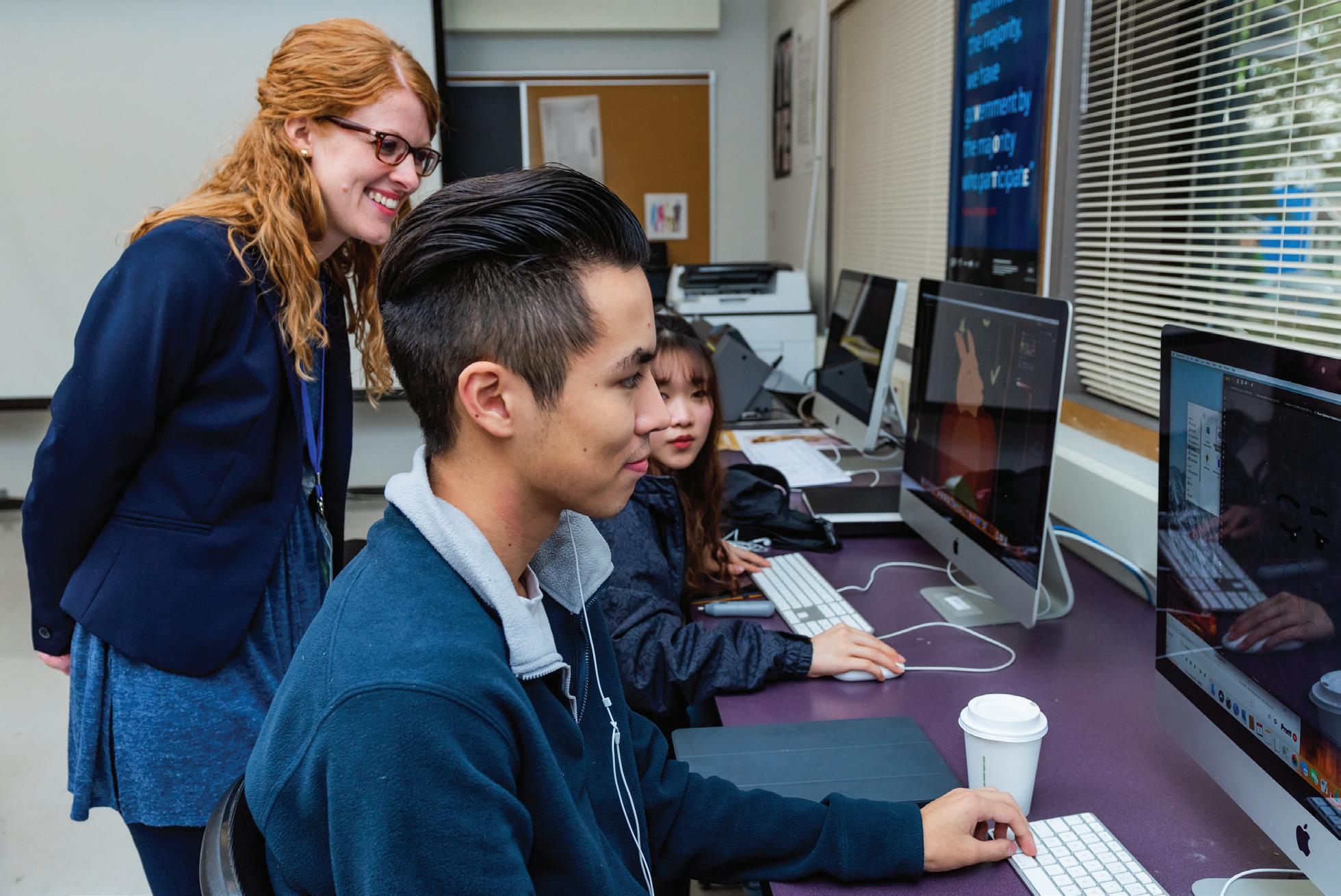
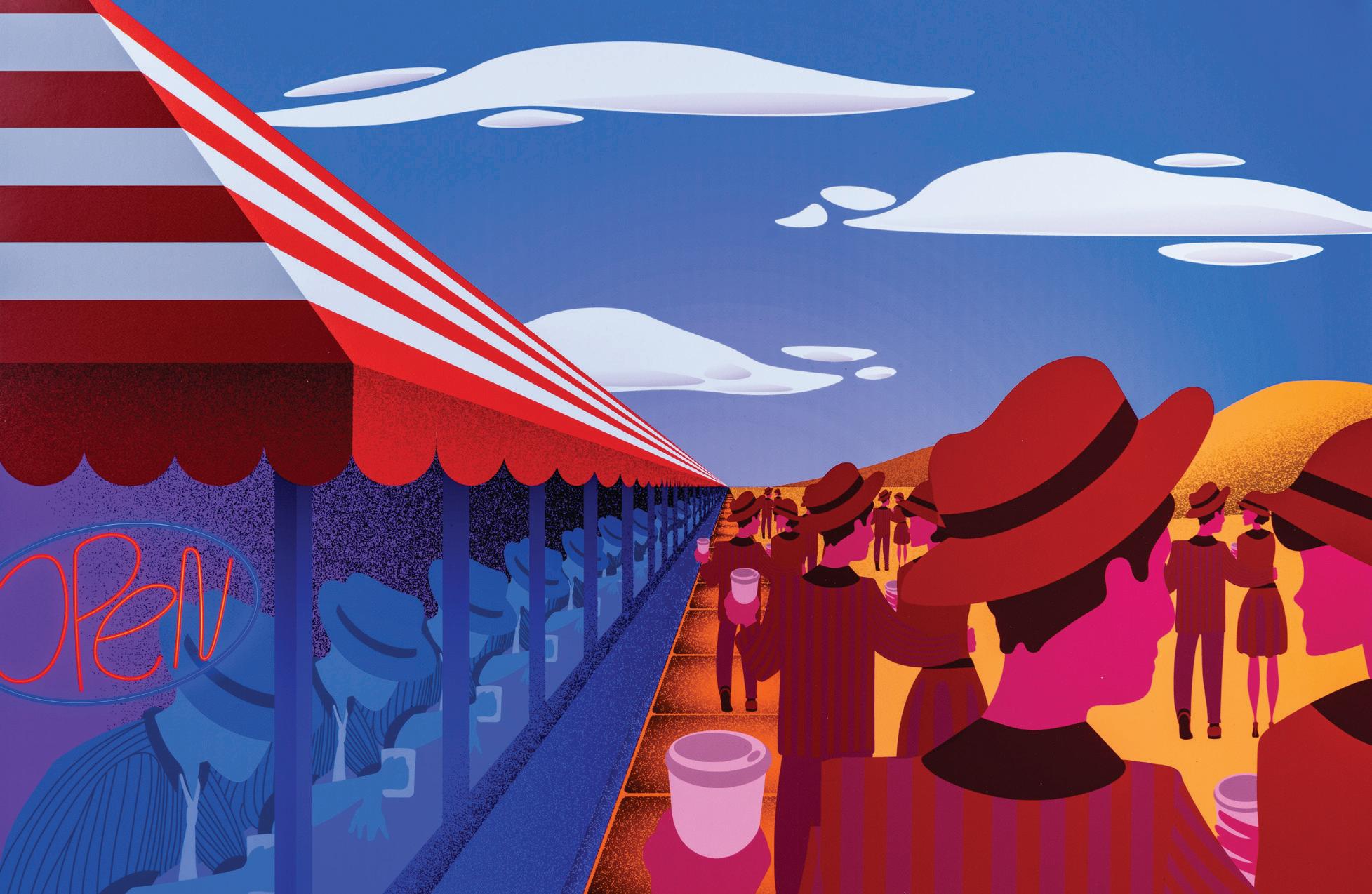

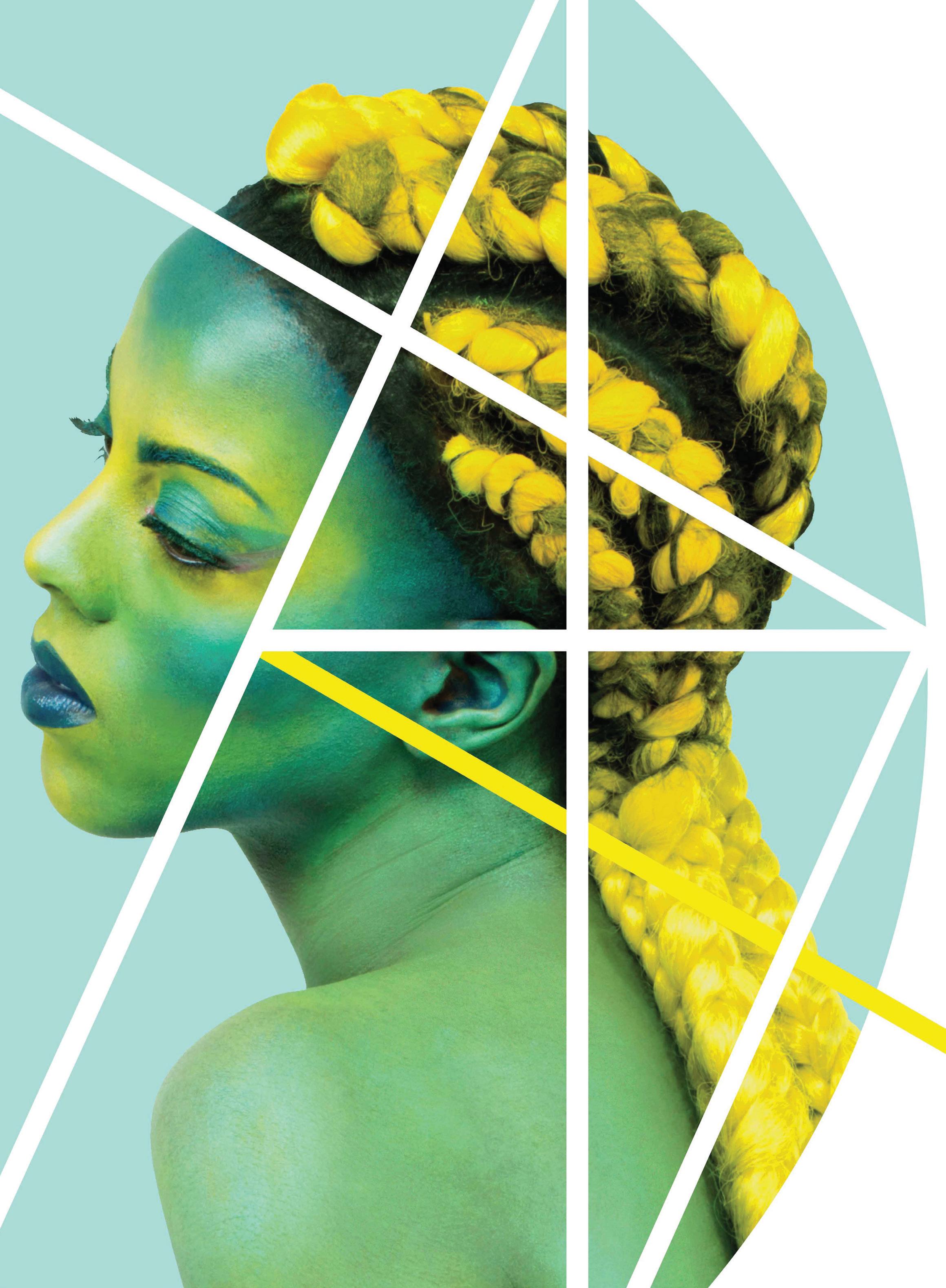




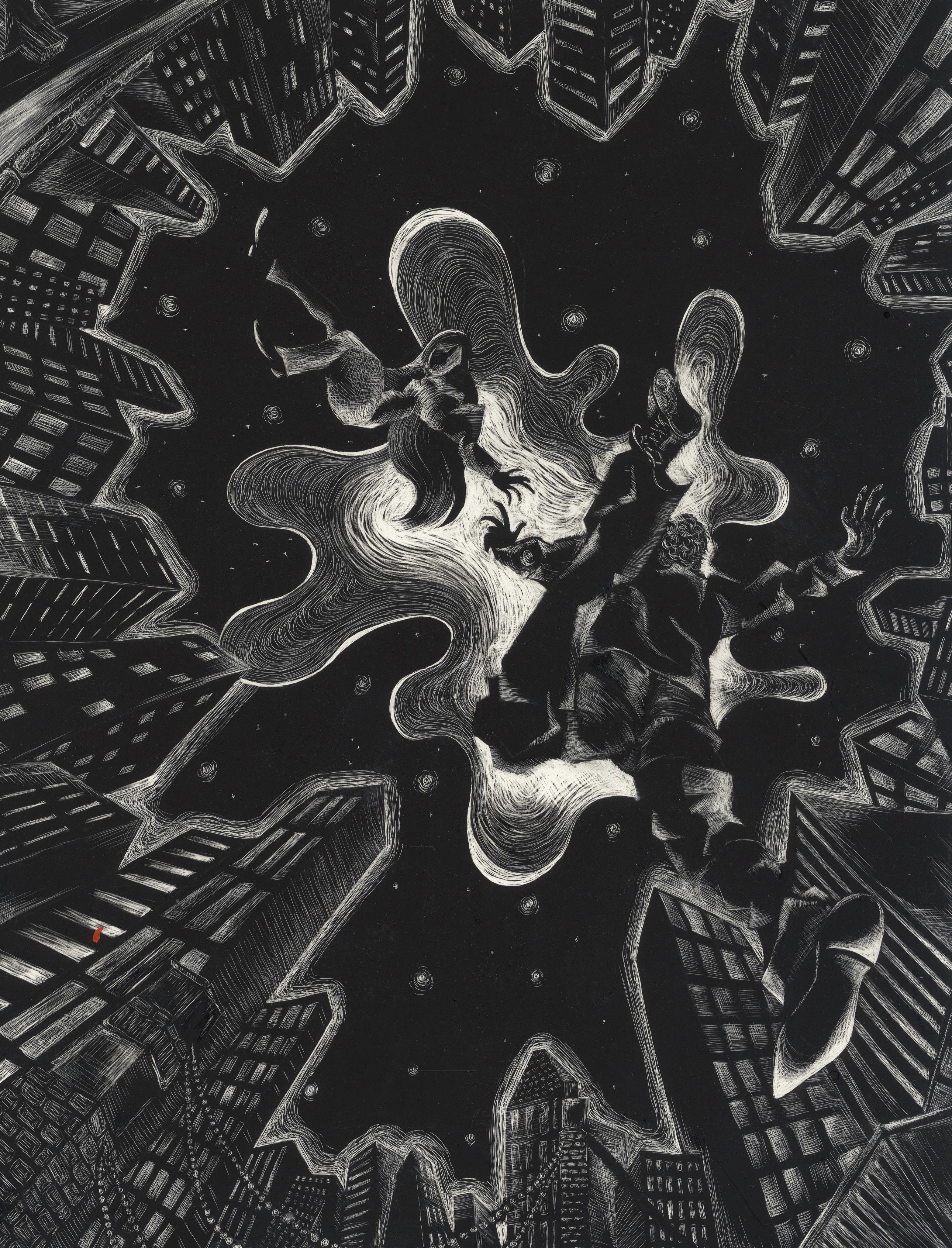




Fine Arts largely influences the information of our contemporary visual imagination. The world is revealed through the hand, mind, and expression of the artist. The contributions of the fine arts are as significant in understanding a culture as knowing its technological achievements. Whether it is Jewelry, Painting, Drawing, Printmaking, or Sculpture and Integrated Practices, many of the skills learned in studying fine art in college, such as problem solving and conceptual thinking, are the basis for successfully navigating all aspects of life.
At PrattMWP, you will select your Fine Art focus at the end of your freshman year. As a sophomore, you will focus on a curriculum that begins your in-depth immersion into your chosen field of practice. Combining a rigorous studio regimen with a broad education in liberal arts and sciences, students pursue a dialogue of conceptual investigation and making.
The program is ranked first nationally in USA Today by College Factual.
View the Fine Arts curriculum in the Curriculum Section on page 68.


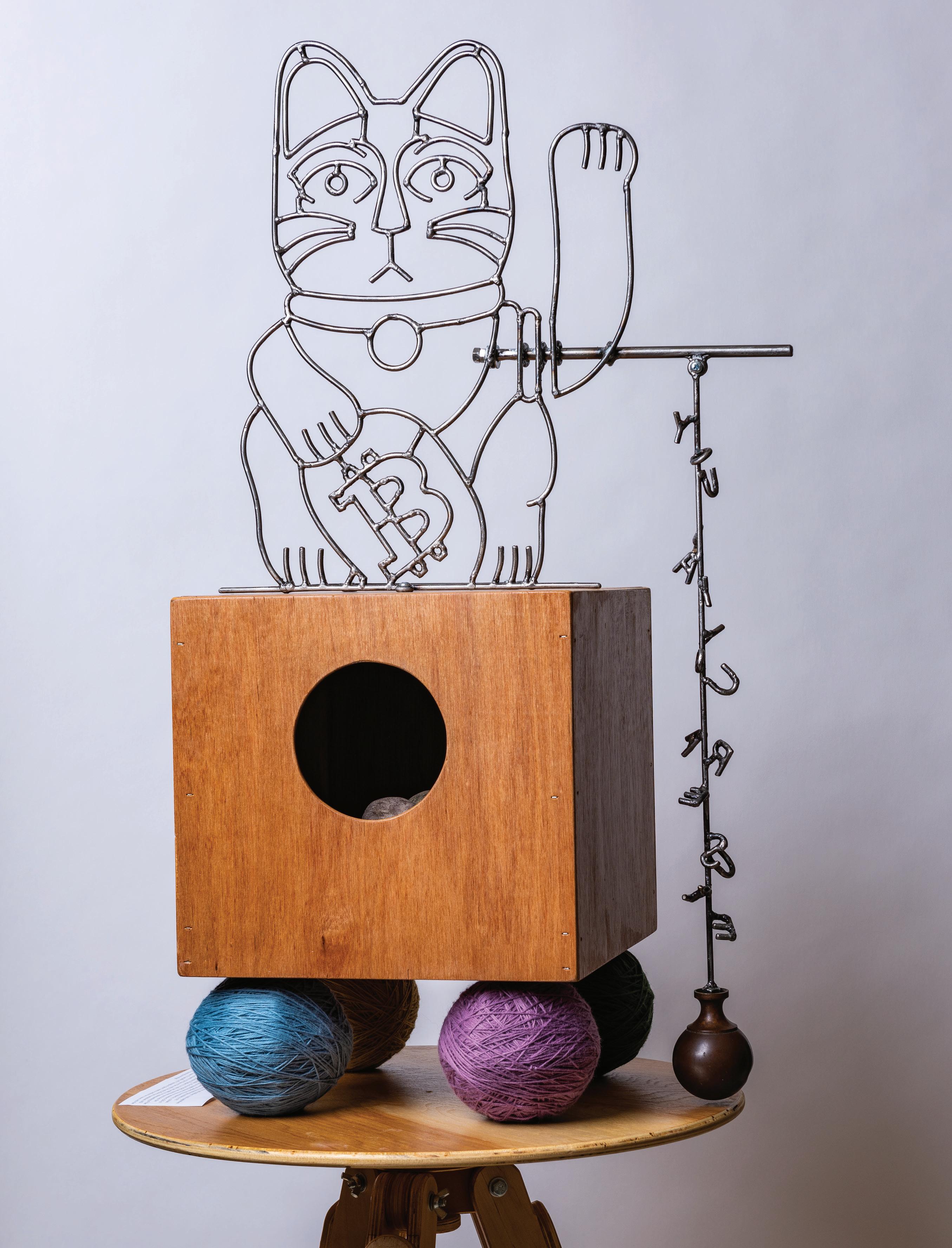

My major is Illustration, but I am also able to make fine art work in the form of painting and printmaking.
“
 Karissa Handrick
Karissa Handrick
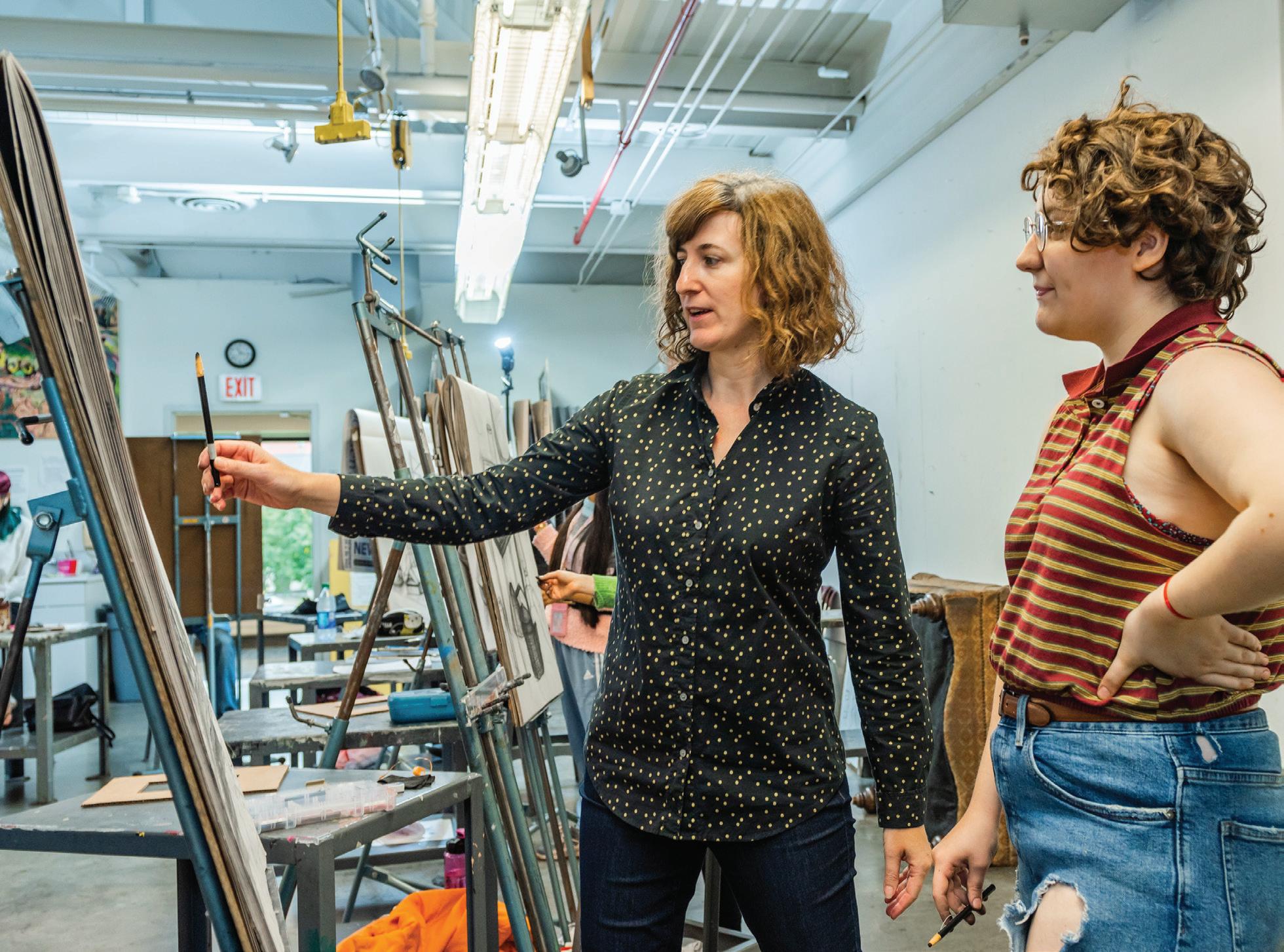
 Kristine Yan
Kristine Yan
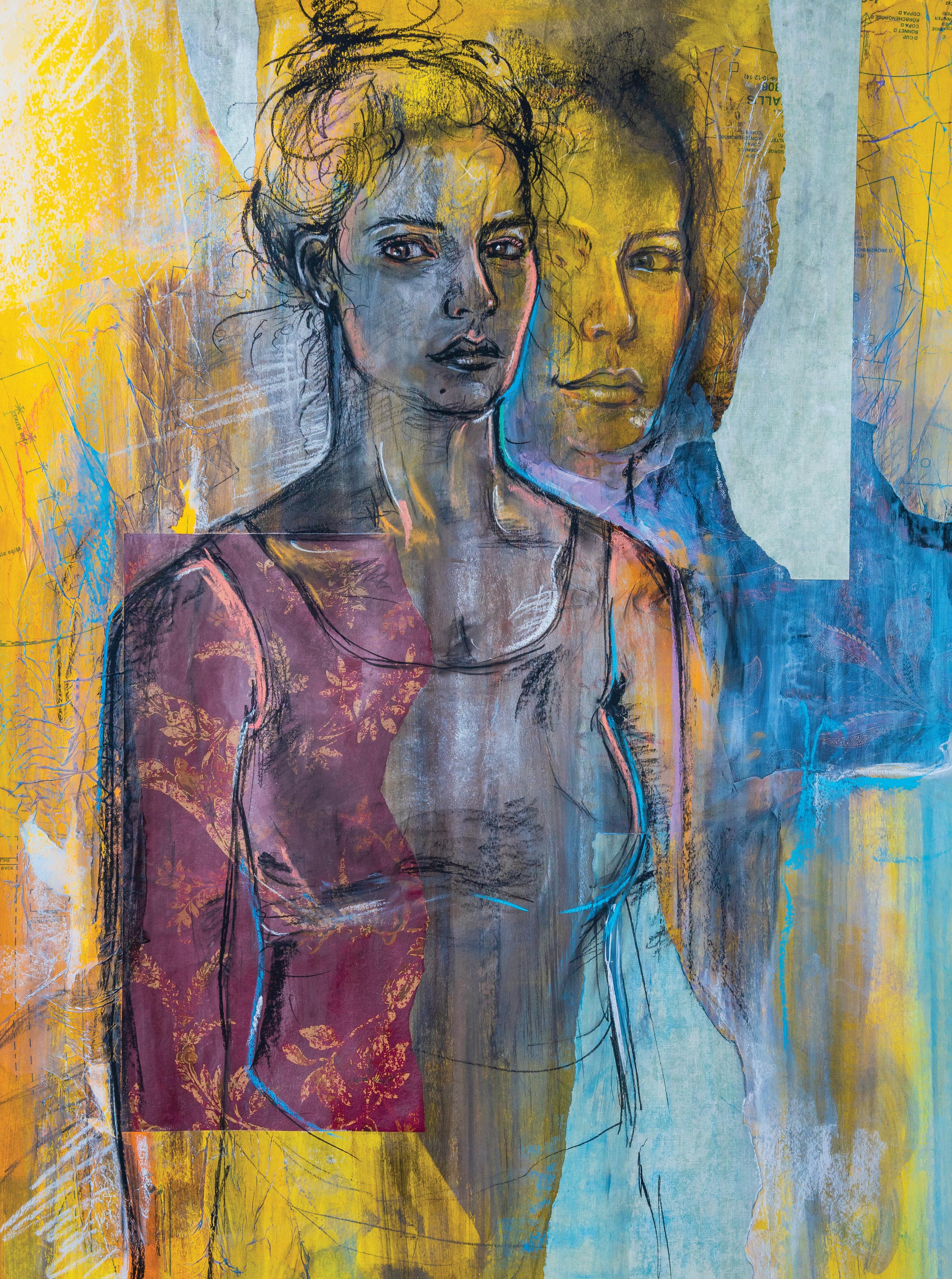
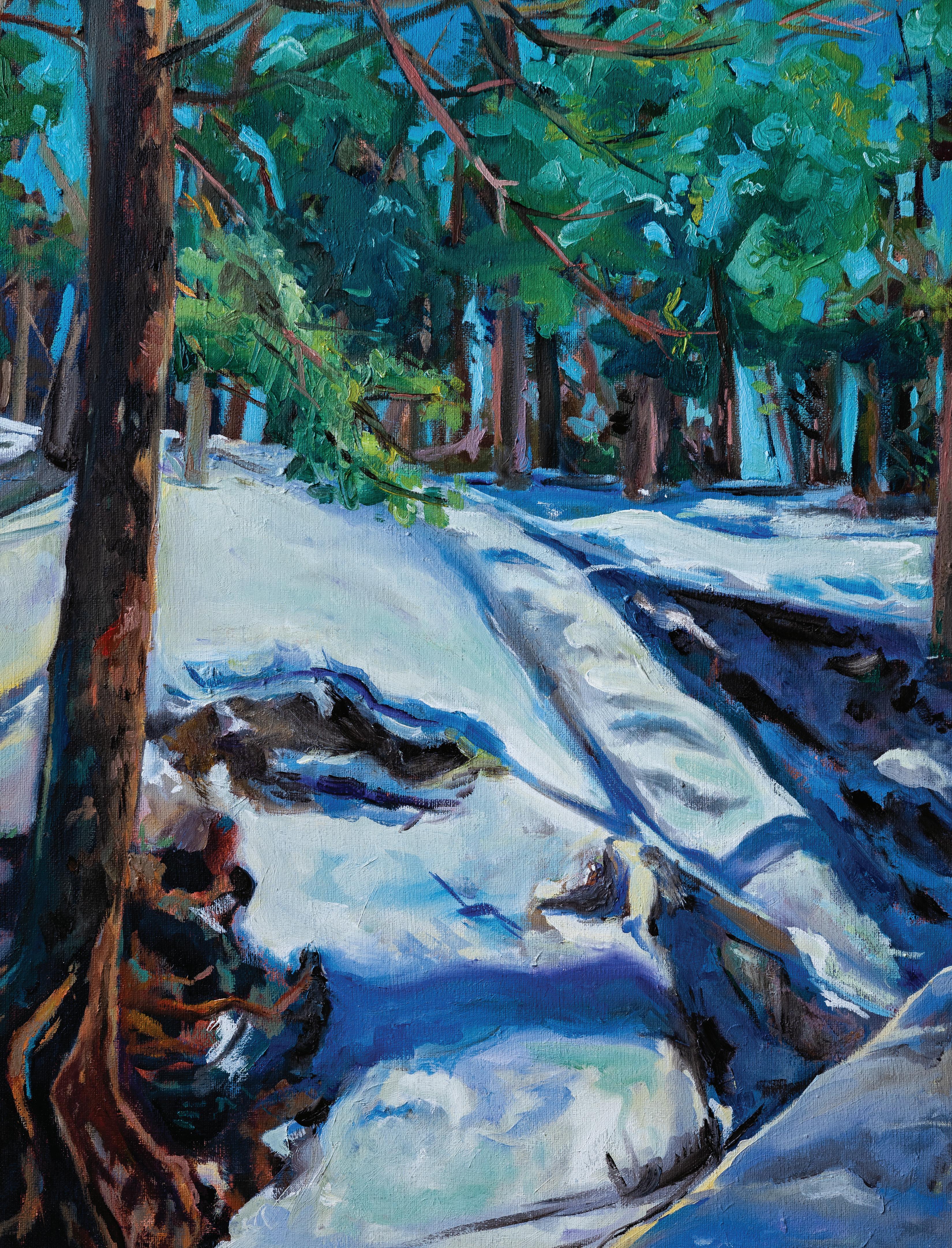 Keira Phillips
Keira Phillips
 Audrey Doyle
Audrey Doyle
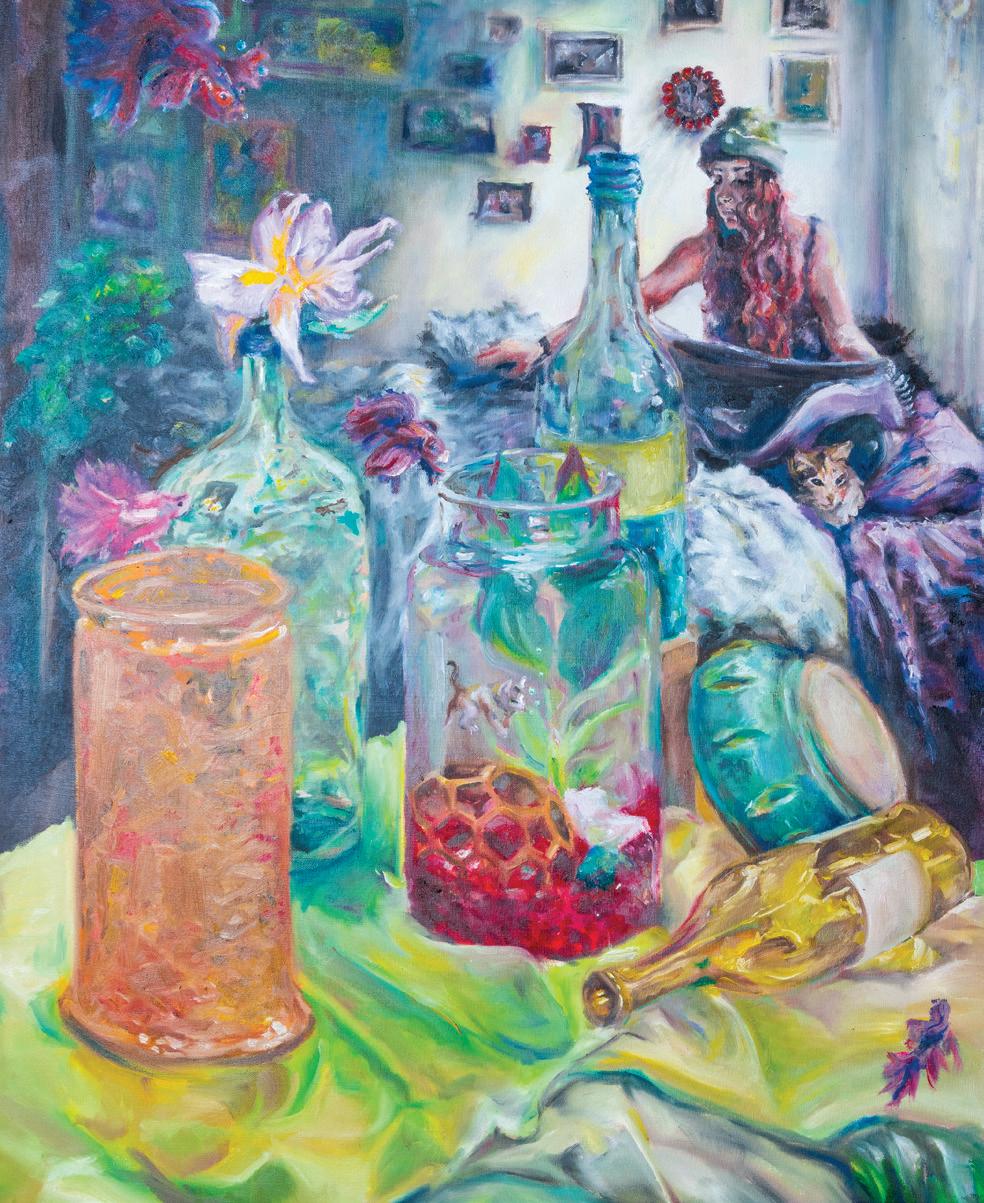
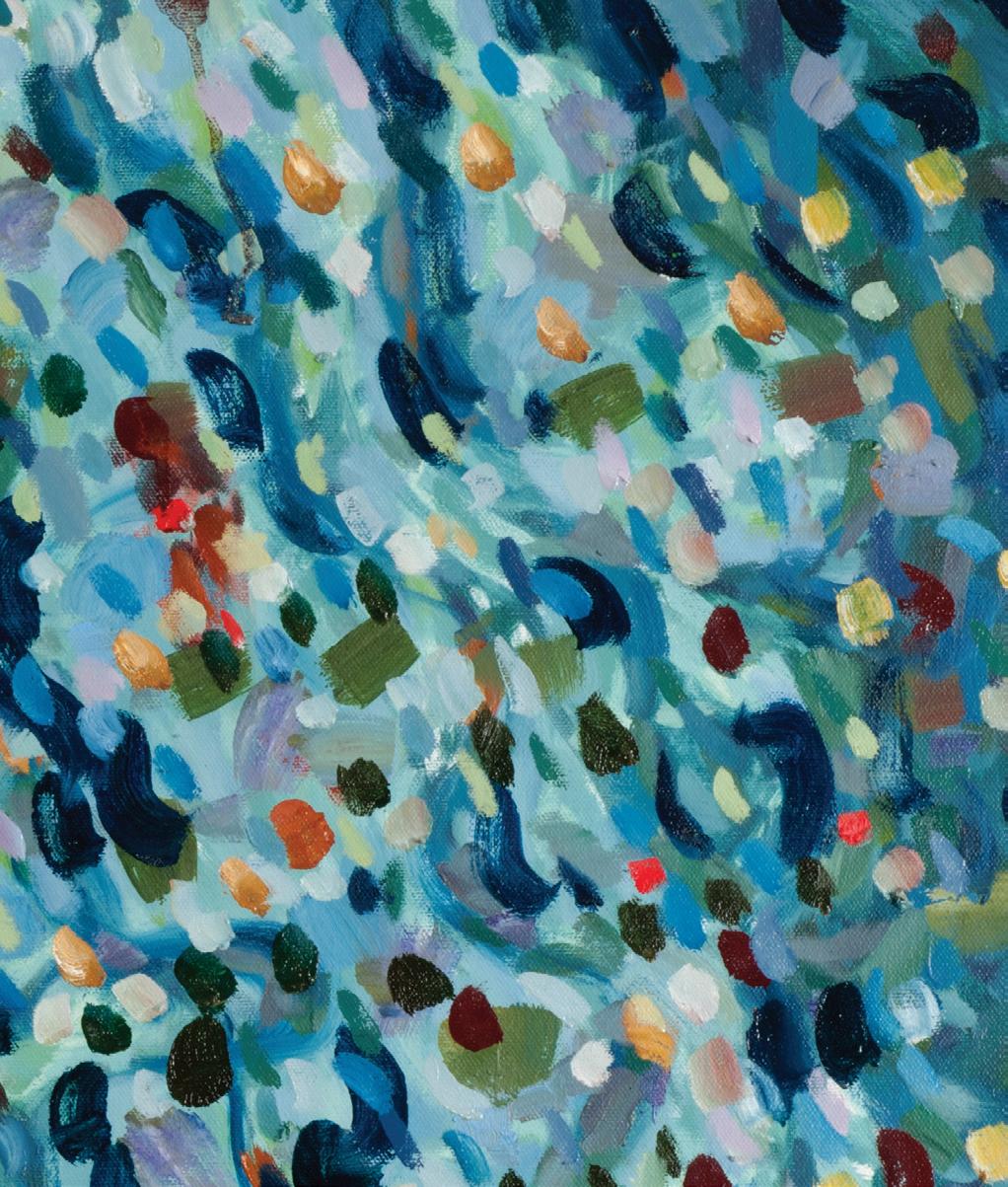
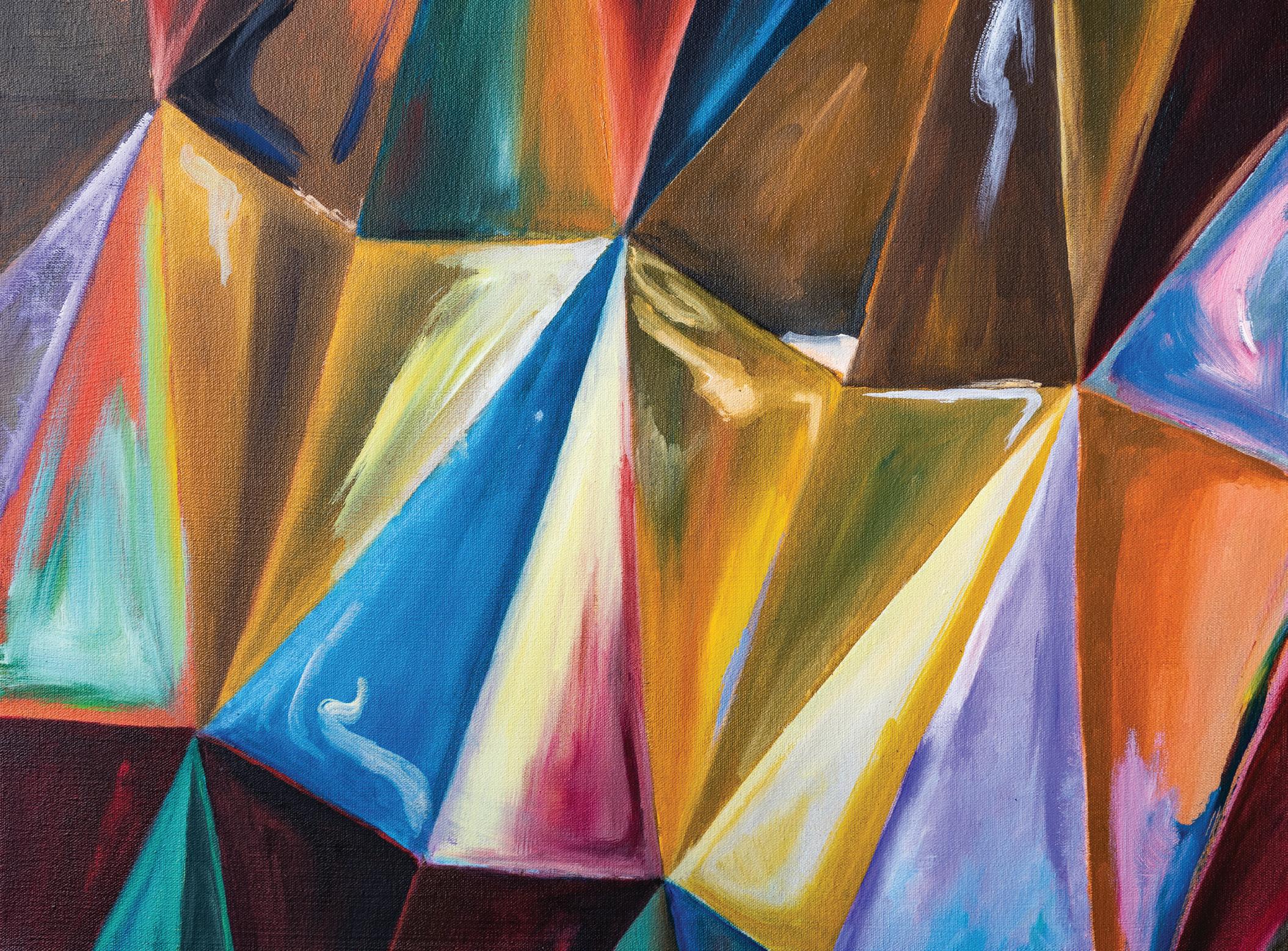 Casey O’Connor
Katana Groce-Thompson
Casey O’Connor
Katana Groce-Thompson
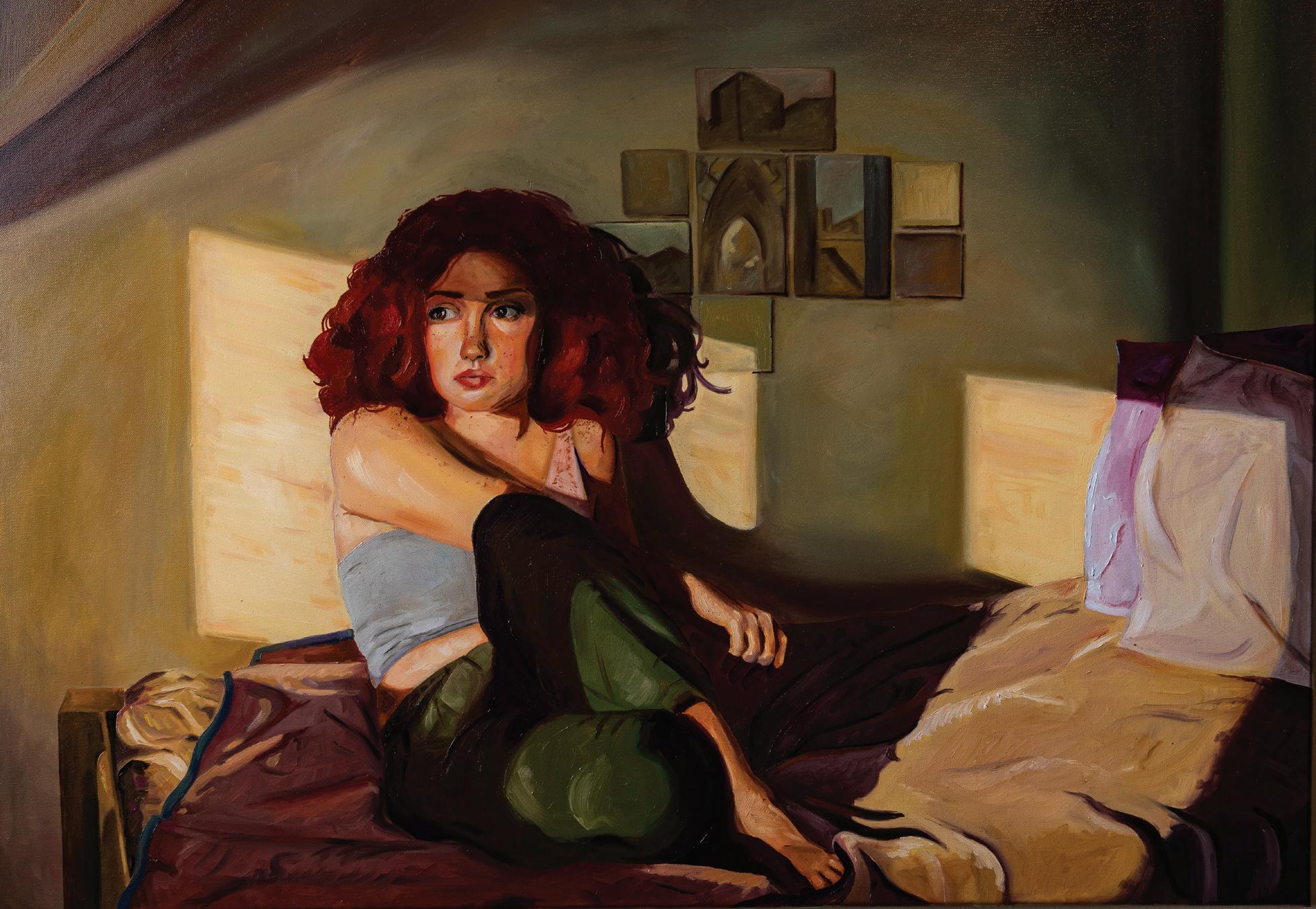
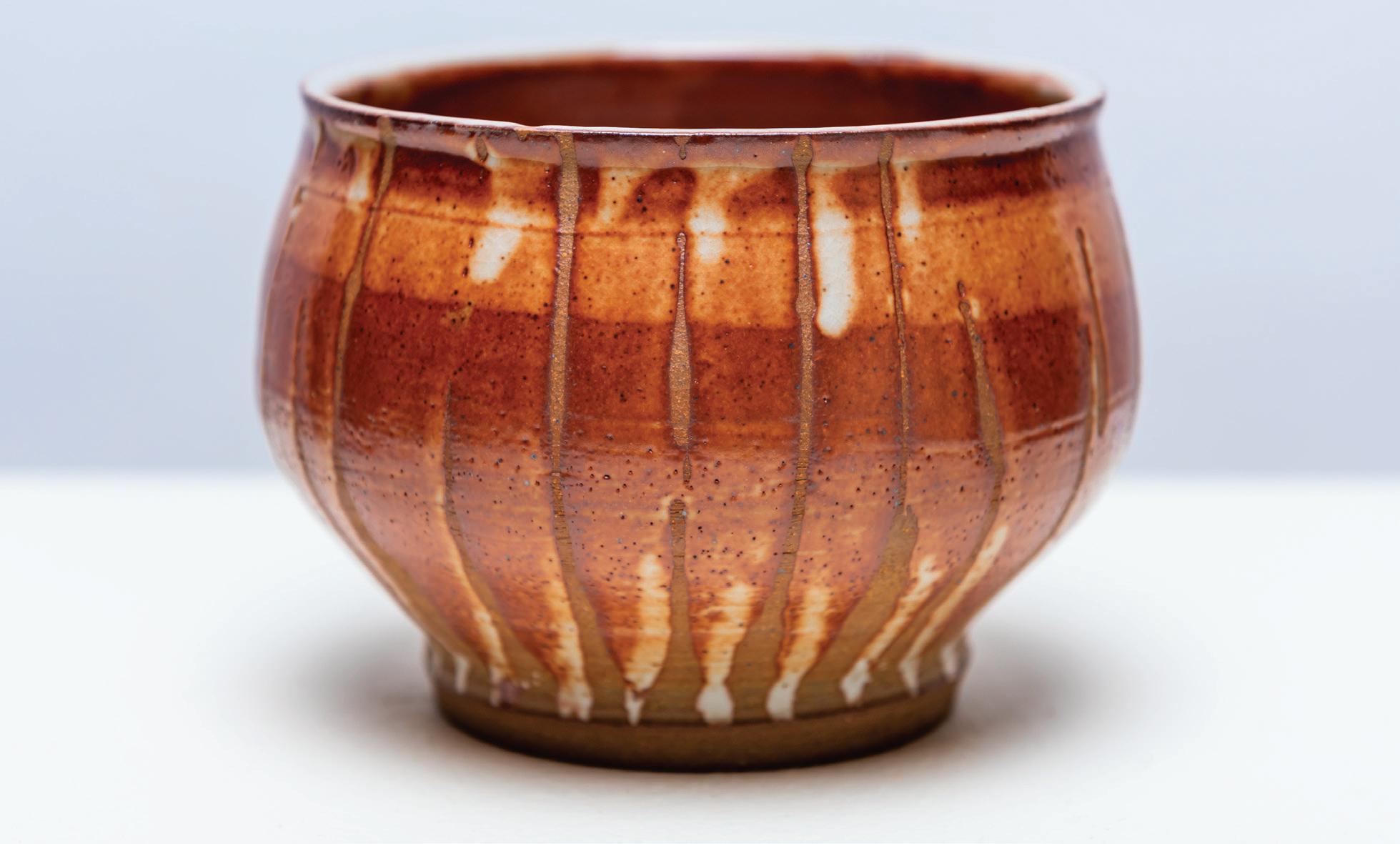


Since the invention of photography in 1839, artists have used this medium to record their visible world, and as a medium for personal expression. New developments in the digital realm have further expanded these possibilities.

At PrattMWP, the freshman foundation year concentrates on the use of traditional 2- and 3-dimensional media to develop and expand your visual thinking through a critical practice of methods and processes of creativity. You will be introduced to the traditional—or analogue medium—of black-and-white photography. In the second year, black-and-white photography and its use as a vehicle for artistic expression is further explored with the introduction of color and digital photography. Film and video classes are also included, as well as the study of the history of photography.
You will acquire a comprehensive understanding of the artistic and professional options inherent in the field of photography, mov ing from a highly structured program in the sophomore year to a more self-determined program in the senior year in which individual interests will be emphasized. This approach is intended to facilitate the transition from student to independent artist/professional. The program is ranked fifth out of 127 colleges nationwide (top five percent) offering film, video and photographic arts by College Factual.
View the Photography curriculum in the Curriculum Section on page 71.
Katie D’Avella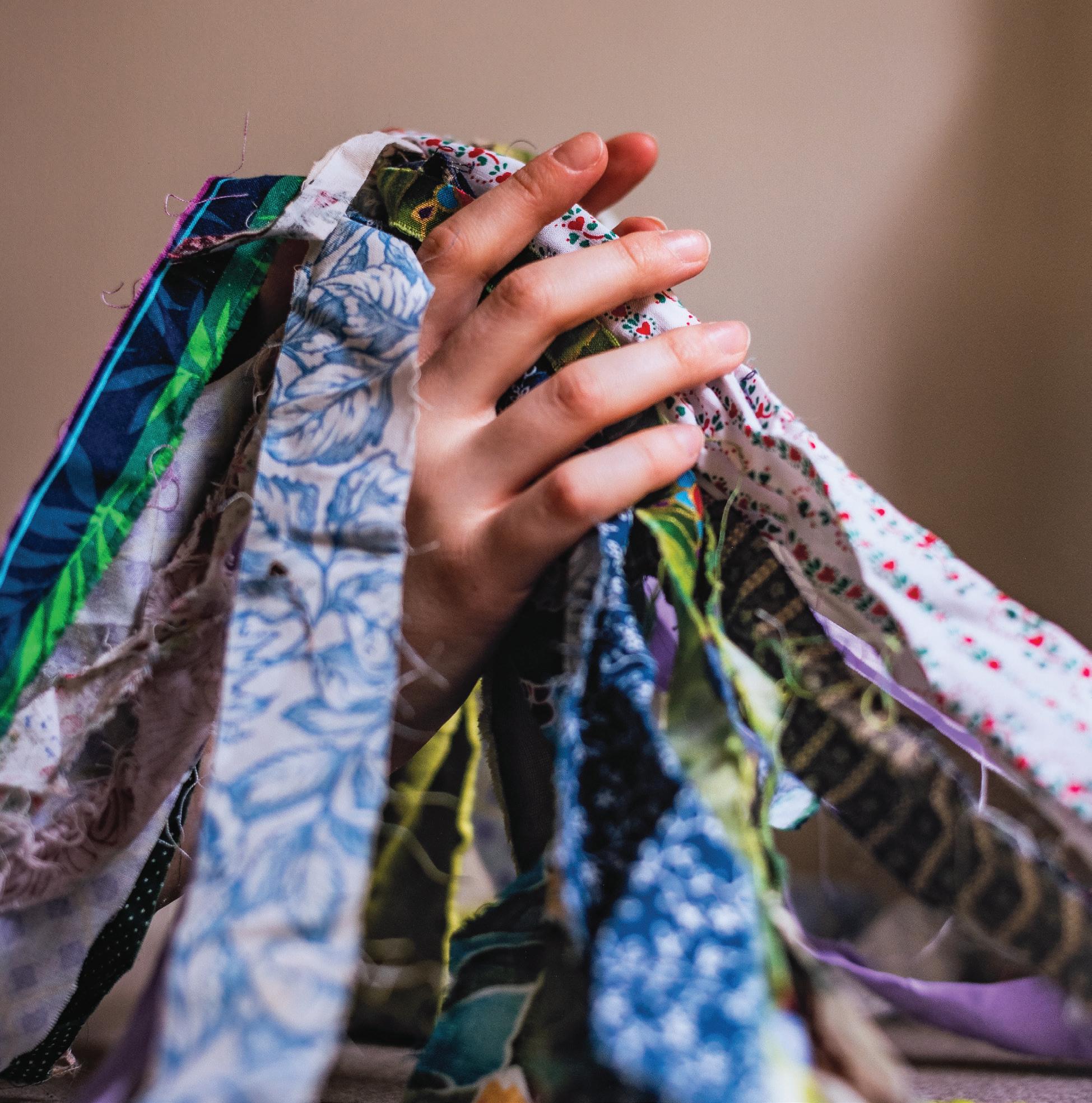
Being here forced me to find my drive, and my art changed with that discovery.
 Kaytlin Bronson
Kaytlin Bronson


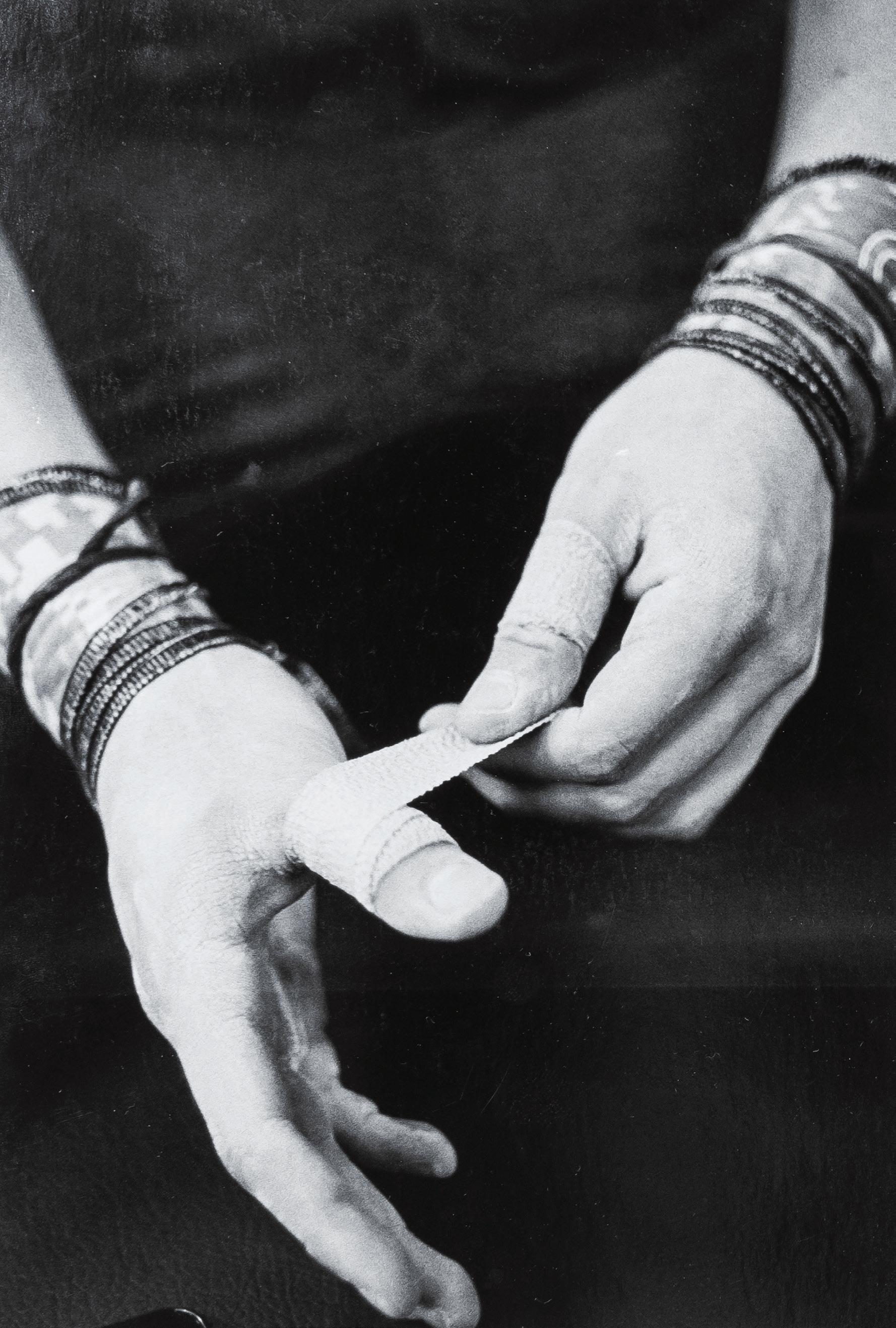
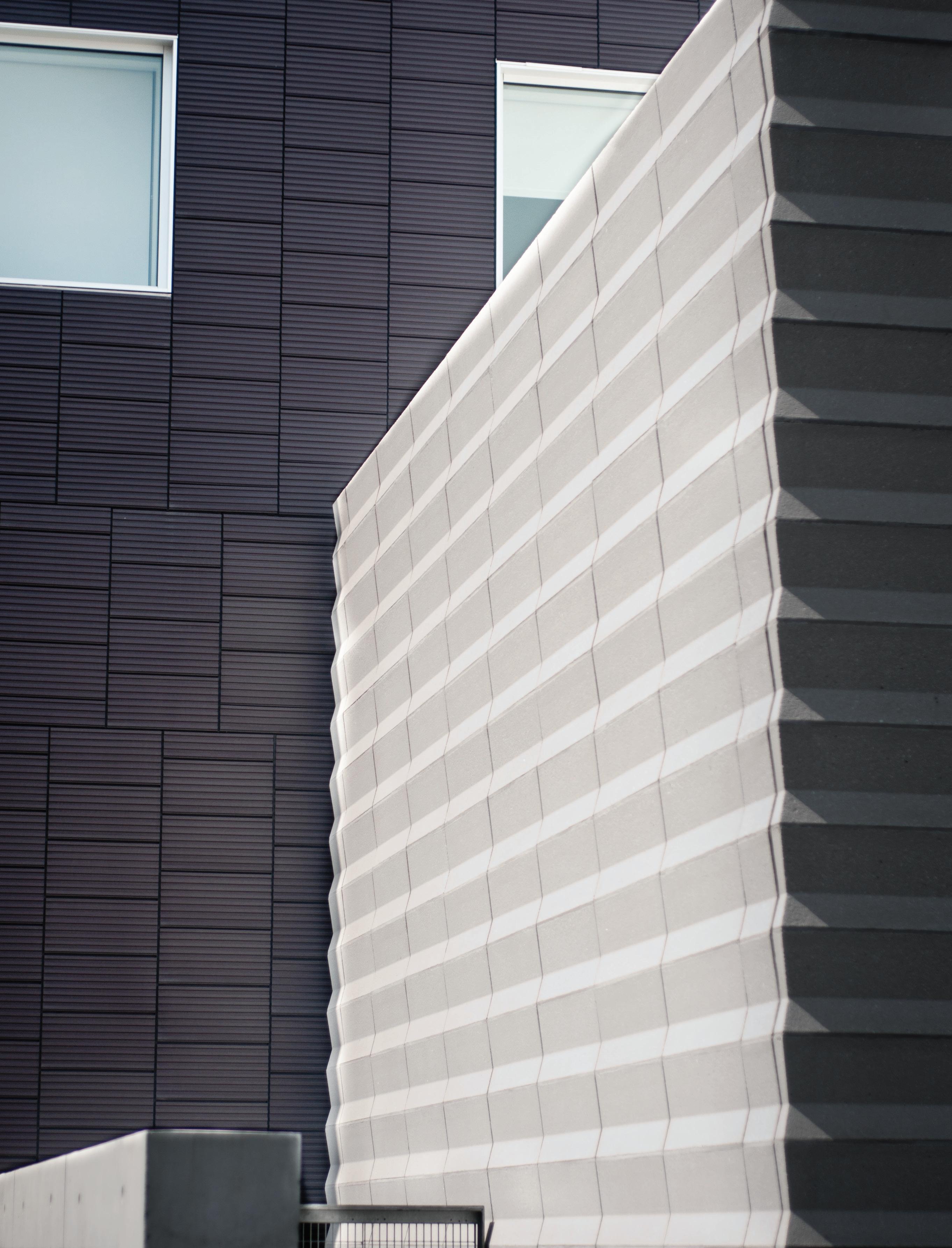
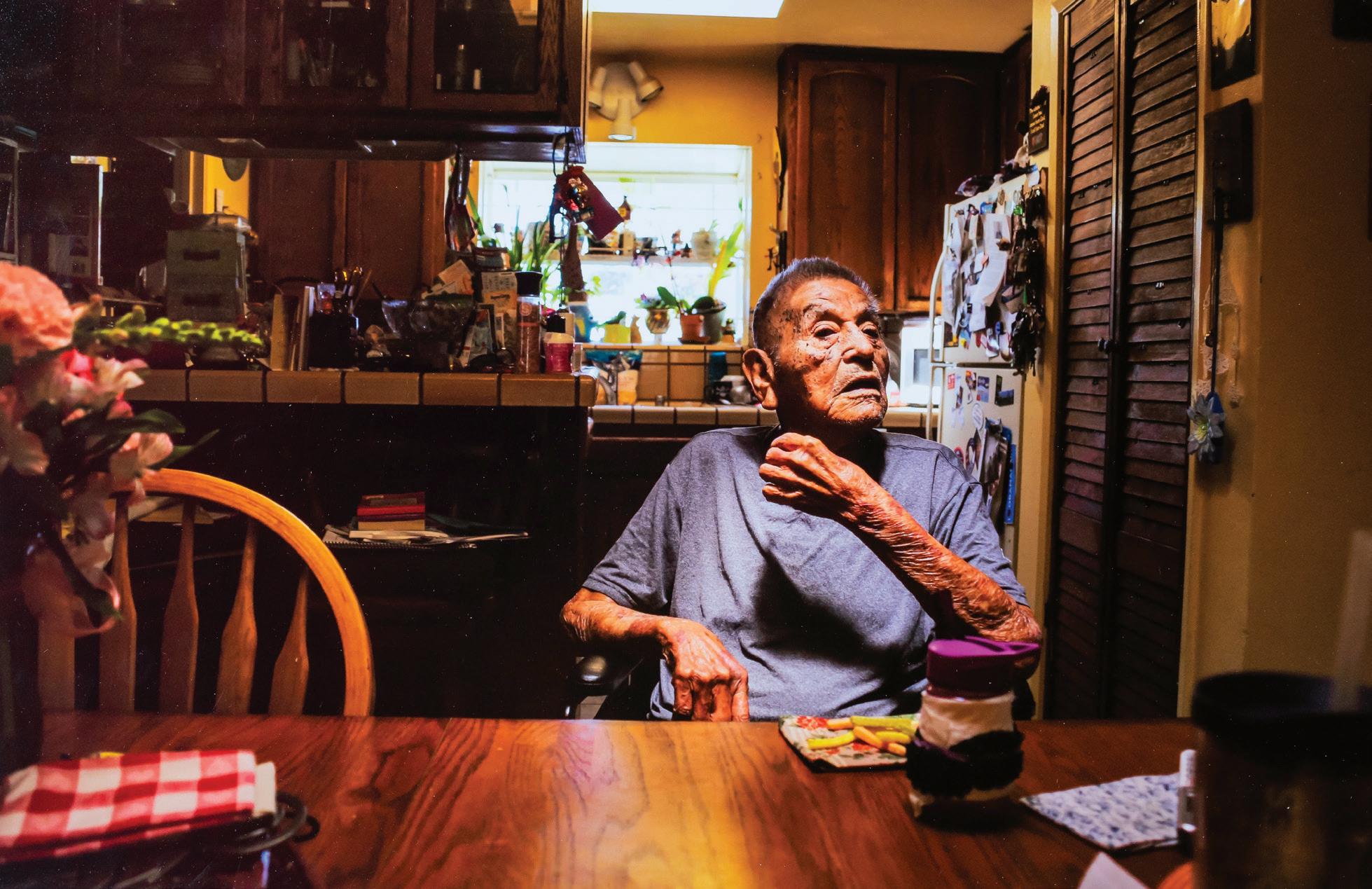

At PrattMWP, we owe our outstanding reputation to a faculty of professional artists and designers. Works created by our distinguished faculty members are widely shown in public exhibitions and are held in private collections throughout the U.S. and abroad. Our instructors have served as guest artists, advisors and lecturers at many colleges and universities throughout the world. Our adjunct instructors are considered among the best in their fields. In the classroom, faculty members share their valuable insights into the world of art and your future as a successful artist. You will find instructors who personally stimulate your creativity and help build new skills.
Daniel Buckingham Professor, Sculpture
M.F.A., Alfred University B.F.A., Tulane University
Daniel exhibits his work throughout the US and abroad. His large-scale public commission, Tower of Bells is located in the Park of Women and Children, Quito, Ecuador. He traveled solo by bicycle for eight years exploring more than 60 countries. This enriching journey has become a major resource for his artistic practice and his understanding of the human condition. Daniel enjoys listening to jazz and blues music and has served as a board member for Sculpture Space Inc. in Utica, NY.
Associate Professor, Drawing, Painting and 2D Design
M.F.A., The Art Institute of Boston at Lesley University
B.F.A., The School of the Art Institute of Chicago
Chris has 20 years of experience in painting and drawing. He has taught and lectured for PrattMWP, Mohawk Valley Community College, Empire State College, and the Kirkland Art Center. He makes work that is a reflection of his internal state, exploring humor, melancholy and often an inspiration from nature and or culture.
Ted Ford Assistant Professor, Art History
M.F.A., Visual Arts, Vermont College of Fine Arts
B.A., University of Colorado, English Studies at l’Ecole des Beaux arts, Paris; and The School of the Art Institute, Chicago Ted began at PrattMWP as an adjunct profes sor of Art History in 2004, and joined the fulltime faculty in 2016. He has travelled widely in England, France, Italy and Greece. His focus of research is the intersection of visual culture
and the history of ideas. In addition to teach ing art history, Ted continues making paintings and sculpture. His works have been shown in NYC, Washington, D.C., and Upstate, NY.
Chris Irick Professor, Jewelry M.F.A., University of Massachusetts, Dartmouth
B.F.A., Texas Tech University
Chris joined the full time faculty at PrattMWP in 2000 and regularly lectures on her work and conducts visiting artist workshops at colleges and universities across the US, most recently at Maine College of Art and University of Wyoming. Her work has been featured in more than 40 magazine and book publications, more than 100 national and international exhibitions, including a solo exhibition at the National Ornamental Metal Museum, and is included in the permanent collection of the Smithsonian Institution. She is currently interested in finding ways of capturing the elegance of bird flight on a static piece of jewelry, making use of historical and contemporary technologies to create the illusion of movement.
Cindy Buckley Koren Professor, Communications Design M.A.L.S., Empire State College B.F.A., University of Buffalo
After establishing her career in editorial and advertising design with clients including AT&T, the U.S. Open, and Runner’s World Magazine, “Cindiana” changed focus to pursue her pas sion for cultivating young creative talent and inspiring positive social change. As the founder of the {meetinghouse} creative collaborative and as a featured speaker at TEDx Utica she strives to challenge the status quo by promot ing meaningful education.
Originally from Philadelphia, Gregory currently resides in upstate New York, where he has been a Professor of Painting and Drawing at PrattMWP since 1990. He has exhibited in various locations in the US including the Everson Museum, the Albany Institute of History and Art, the Schweinfurth Memorial Art Center and the Stanley Center for the Arts. Lawler is a well-established New York State artist, actively working and exhibiting for over 25 years. His paintings hang in collections throughout Maine, New York, Connecticut, Pennsylvania, North Carolina and California.
Andrew Mullally Assistant Professor, Printmaking, M.F.A., University of Iowa B.F.A., Northern Illinois Univeristy Andrew Mullally is a Printmaker who joined the faculty in 2021, and has an extensive exhibition record exhibiting both nationally and inter nationally. His work addresses climate change, deforestation, extinction and ecological crises. Andrew has recently been part of the faculty or a technician of Printmaking at several colleges in the Chicago region including Columbia College Chicago, Harold Washington College, Elmhurst College, and Elgin Community College.
Professor, Drawing and Painting, Academic Chair
M.F.A., Yale University School of Art B.F.A., Cleveland Institute of Art Ken has been actively lecturing and exhibiting his art throughout the northeast for more than 25 years. He serves a dual role as Professor of Drawing/Painting and Chair of Academic Affairs. He came to PrattMWP after serving as Director of Art for the Stamford Museum and Nature Center in Stamford, Ct., organizing numerous exhibitions and researching the museum’s permanent collection. He has also held positions at the Albright Knox Art Museum in Buffalo, NY and the Visual Studies Workshop in Rochester, NY.
Associate Professor, Drawing and 2D Design M.F.A., University of Massachusetts, North Dartmouth B.F.A., Painting, Arizona State University Claudine’s paintings and drawings have been exhibited nationally at various venues including the Vessels Gallery, Dedee Shattuck Gallery, Danforth Museum of Art, Cotuit Center for the Arts, Carroll and Sons, Morehead State University, and The Painting Center in New York City. She has taught at the University of Massachusetts, Dartmouth, Mount Ida College, and The Community College of Rhode Island. Her work is inspired by natural forms, myth, and archetypal experience.
Associate Professor, Communications Design B.A., The College of Saint Rose A.A.S., Mohawk Valley Community College
Leah is a working, award-winning profes sional graphic designer and photographer who executes compelling visual solutions for clients in digital, print, and photography in her creative entrepreneurship. Certified as a woman-owned business in New York State, her work extends from non-profit organizations, universities, and start-ups to high-end home décor companies. She taught as an adjunct and award-winning visiting instructor for six years prior to joining the faculty as a full-time member in 2021. She has an enthusiastic and professional approach to design instruction. Leah is continuously inspired by art, design, nature, travel, food, gardening, interiors, and music. She is an advanced pianist and is studying Italian. Leah enjoys leading a natural lifestyle and is passionate about integrating design into many areas of her life.
Associate Professor, Illustration
M.F.A., Savannah College of Art and Design B.A., University of Central AR
Beth is an illustrator with six years of experi ence teaching and 10 years of illustration and design experience. She works in children’s book and editorial and enjoys playing with the integration of traditional and digital art.
Associate Professor, Photography M.F.A., M.A., The University of Iowa B.F.A., Murray State University
Recent solo and two-person exhibitions include Where the Great Lakes Leap to the Sea at The Shed Space in Brooklyn, NY and Fish Hotel at Vanderbilt University’s Space 204. Her work has also recently shown at Whitespace Gallery, Roman Susan Gallery, Wedge Projects, and The Midwest Center for Photography. Her work has been featured by several online publications including Don’t Take Pictures Magazine, Light Leaked AINT-BAD magazine, Vulgaris magazine, and PhotoEmphasis and was featured on the cover of Iranian literary magazine, Dastan. Sarah currently serves as the Assistant Artistic Director of the New York State Summer School of the Arts: Media Arts
Sandra Stephens, Ph.D.
Associate Professor, Time and Motion Arts Ph.D. Institute for Doctoral Studies in the Visual Studies M.F.A. School of Visual Arts B.A. SUNY Stony Brook
Sandra creates video and video installation works to explore issues related to cultural and individual identity and has exhibited nationally, throughout museums and galleries in the US including the Museum of Latin American Art, the Frost Art Museum, the Portland Museum
of Art, and internationally in various locations including Circulo de Bellas Artes in Madrid, Triennale di Milano in Milan, Centre de Cultura Contemporania in Barcelona and AtelierHaus/Galerie ZeitZone in Berlin. She has also curated various shows throughout the US and is currently working on Conversation Exchange, a series of two-person exhibitions that create a platform for cultural exchange between artists based in the Caribbean and those within the diaspora where artists pres ent their own work, appropriate each other’s work, and collaborate together.
Megan Boulerice Literary & Critical Studies/Telling Tales: Narrative and Meaning in the Humanities M.A., SUNY Brockport
Sarah Burns Process and Production B.F.A., College of Saint Rose Doreen DeNicola Typography and Info Design B.A., New Jersey City University
Tina Dillman
Fine Arts Seminar I, New Genres M.F.A., San Francisco Art Institute
Holly Dobbins, Ph.D. Ecology/Culture, Identity, Power/Making/ Faking Nature Ph.D., Syracuse University
Jim Gifford, Ph.D. Weimar Film and Culture Ph.D., Syracuse University, American Literature
Valerie Graziano
Literary & Critical Studies M.S., SUNY Cortland, Reading/Literacy
Kassandra Gustin Themes in Art & Culture M.A., Syracuse University, Museum Studies
Christina Hopkins Youth in the City/From Studio to Classroom M.A., SUNY Oswego
Marye Ianno Themes in Art & Culture/History of Communications Design Master of Classical Studies, SUNY Albany
Elissa Johnson Climate Change Science/Science & Society M.S., University of Vermont
Yulia Levkovich
Visualization/Representation, Light/ Color/Design M.F.A., New York Academy of Art
Zach Lewis
Intensive English/Introduction to Public Speaking and Interpersonal Communication B.A., Utica College
Sam McManus M.A., Education, Utica College
Michael Peckham
Digital Prototyping A.A.S., Sequential Art
Dave Roberts General Psychology M.S.W., SUNY Albany
Adrienne Sacks
Fine Arts Seminar M.F.A., California State University
Jacqueline Santoro, Ph.D. Child and Adolescent Development Ph.D., Drexel University
Thomas Sblendorio Digital Prototyping A.A.S., Digital Animation
Christina Sharp
History of Communications Design/ Typography and Information Design B.F.A., SUNY New Paltz
Carlie Sherry
Light/Color/Design M.F.A., Syracuse University
Aray Till Research, Analysis, Process B.F.A., Communications Design Pratt Institute
Ian Till
Visualization/Representation/Concept B.F.A., Industrial Design, Pratt Institute
Sean Usyk
1 Year Visiting Instructor
Image as Communication/Dynamic Imagery M.F.A., Illustration, Academy of Art University San Francisco
Career development is a process that starts long before you arrive on campus. Choosing a major to study while in college also means choosing a path towards a career. The foundation year offered at PrattMWP provides you with experience in different areas within the arts so that you can choose the major that suits you best.
After you relocate to Pratt’s main campus in Brooklyn, you have access to its career services office, where you work with an advisor specific to your major. Pratt Institute’s Center for Career and Professional Development (CCPD) assists students and alumni with internships, residency and job placement. CCPD helps you with resume and cover letter trainings and networking opportunities. The advisors work with you to navigate the path from college to career with clarity, competence, and confidence. They stay abreast of changing trends and employer needs, and they guide you into an easy transition from college into the work environment, maintaining relationships with employers and internship providers nationally and internationally.
Check out Pratt’s Job Placement page, and see how well Pratt students do after they graduate: https://www.pratt.edu/student-life/center-forcareer-professional-development/recent-graduate-outcomes/
Pratt alumni can be found in public and private schools, museum education, exhibition design, curriculum planning, arts administration, publishing, special education programs, early childhood education, senior centers, and community arts programs.
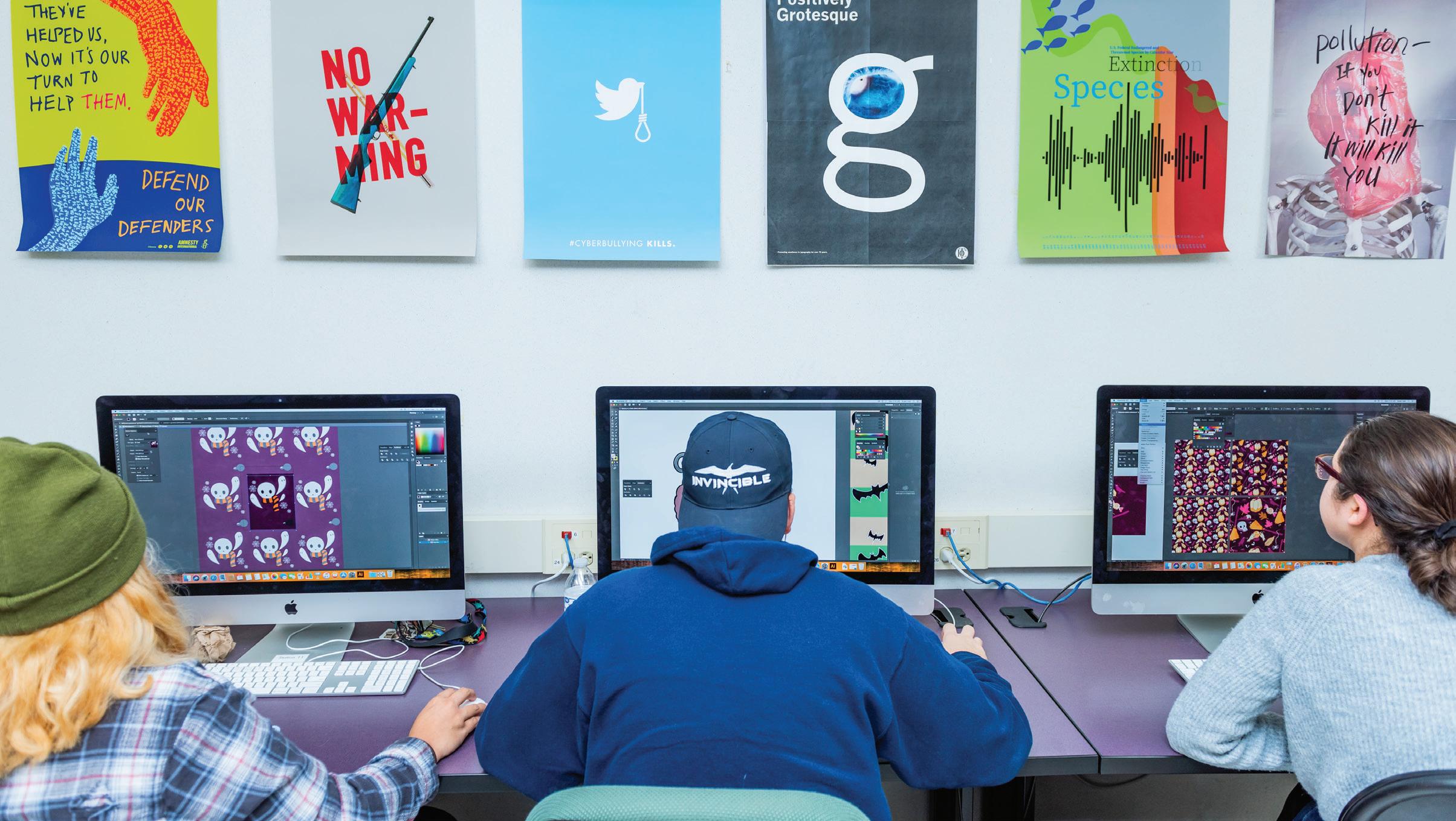
Art Teacher (Elementary/Secondary) College and Art School Professor Community Arts Programs Museum Art Education Programs Art Historian
Art Supervisor or Administrator Art Therapist
Starting Salary Range: averaging $30,000- $50,000
Painting, Drawing, Printmaking, Jewelry, Sculpture and Integrated Practices
The field of fine arts is usually a dual career field for those who wish to pursue production, exhibition and sale of their artwork while supporting themselves at the same time. The Center for Career and Professional Development Office
at Pratt Institute lists more than 4000 jobs annually, offering career counseling and job referrals for those entering this field.
Arts Administrator
Art Buyer/Consultant Art Exhibit Coordinator
Art Handler
Art Historian
Cartoonist
Ceramic Artist Commercial Printer Commissioned Portrait Painter Conservator Courtroom Artist Creative Director Critic Curator Custom Woodworker Display Designer Exhibition Designer Fine Artist
Forensic Artist Foundry Worker / Welder Furniture Designer Gallery Director Jewelry Designer Metal Artist Mosaic Artist Motion Picture Sculptor/Modeler Museum Staff
Print Production Manager Print Shop Owner Professor Silkscreen Artist Sculptor
Starting Salary Range: vary by career
Graphic Design, Illustration Careers within the communications design field vary from freelance work, entrepreneurship to employment by major consumer advertising agencies in major cities across the globe. Most fields within communications design allow for a flexible career option.
Advertising Director Art Director Branding Manager Book Illustrator Cartoon Artist Creative Director Editorial Illustrator Graphic Designer Illustrator Logo Designer Medical Illustrator Package Designer Professor Technical Illustrator Web Designer
Starting Salary Range: averaging $30,000- $50,000
Photography offers a wide range of jobs—both full-time and freelance— a career within photography requires flexible, high energy individuals who are team players. Competition is intense for “glamorous” positions. Some alumni choose to follow a fine arts path and exhibit their work rather than pursuing a commercial career.
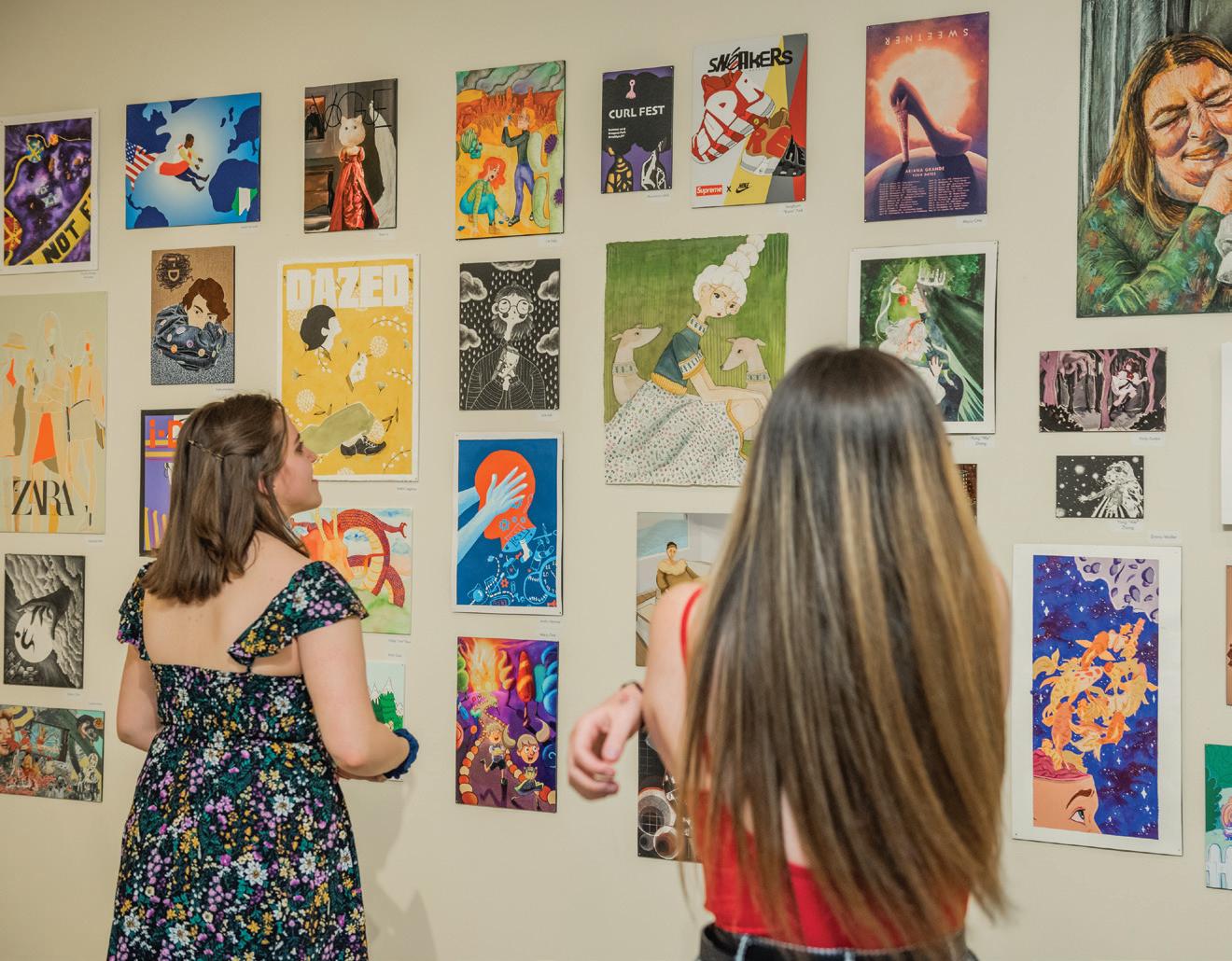
Occupations Art Director
Corporate Photographer Documentary/Travel Photographer
Editorial Photographer Event Photographer Fashion Photographer Fine Art Photographer Film/Video Production Still Photographer Gallery Assistant Medical/Science Photographer Photojournalist
Photo Archivist Photo Editor
Photo Researcher Photo Technician Photographer’s Assistant Portrait Photographer
Product Photographer Professor/Teacher Stock Photographer

General Education Elective: see page 73 for course descriptions
FDC-140 Visualization/Representation
FDC-160 Light Color Design I
FDC-150 Space Form Process or
FDC-180 Time and Movement*
HAD-111 Themes in Art and Culture I
HMS-101A Intro to Literary and Critical Studies I
PHOT-105 Black and White Photography (Photo majors only)
FDC-141 Visualization/ Representation/Concept
FDC-161 Light Color Design II
FDC-150 Space Form Process or
FDC-180 Time and Movement*
HAD-112 Themes in Art and Culture II General Education Elective PHOT-210 Digital Photography (Photo majors only)
* FDC-180 Time and Movement is required for all majors except for Photography majors.
FDC 140 | 3CR
In Foundation, drawing is the process of creating structures on the page that are analogies to structures both in the world and the imagination. The practice of drawing is a means of investigation to develop visual thinking and spatial and structural awareness. Students gain proficiency in the drawing process and develop analytical and expressive fluency in the language of the mark. Figure drawing is a critical practice to realize complex arrangements of parts as a unified whole with vitality, empathy and move ment. In studio practice and extended projects students develop a range of abilities to visualize and communicate three-dimensional information on the two-dimensional surface.
FDC 141 | 3CR
Visualization/Representation/Concept builds on and extends the concepts and skills of the first semester. Students learn to use value in conjunction with line to achieve a synthesis of form, space, composition, and content. Projects will increase in ambition and the development of concept will be addressed through increased emphasis on student agency, analysis, iteration, evaluation, and group critiques. The course is designed to address the range of formal issues, processes, and material practices students will encounter as they move into the more specialized areas in the school.
FDC 150 | 3CR
Space, Form, and Process introduces the student to the fundamental principles and dynamics of the physical world. Students will work with a range of materials and develop an understanding of their character and appropriateness for particular solutions. The training of the eye [observation], mind [analysis] and hand [realization] will result in compre hension and sensitivity to the threedimensional experience. Pragmatic application will provide context, connections and meaning. Project based learning will parallel cognition of fundamental principles. Students’ work will demonstrate the ability to analyze and articulate principles, materials and relationships.
FDC 160 | 3CR
In Light, Color, and Design Lab the student is immersed in the experience of light, sensitized to color and its attributes, and familiarized with the elements, principles, and process of design. Through a series of cumulative
and interwoven exercises, students explore how color and design are interlinked and apply this understanding to projects in a wide range of media. Skills and concepts mastered in this semester allow students to conceive and create work that applies color and design with purpose.
FDC 161 | 3CR
Light Color, & Design Studio is a workshop to develop ideas independently and collaboratively through an extended studio process to create authentic new work that applies the elements, principles, and relationships of light, color, and design to communicate purpose and intent. LCD Studio follows and builds on the work of LCD Lab. Through applying their knowledge to new challenges, students grow in conceptual ability, visual awareness, initiative, and self-knowledge, informing their lives and their future studies.
FDC 180 | 3CR
Time and Movement introduces the student to the fundamentals of ordering information in time. Students will create, acquire, manipulate, animate, choreo graph, and distribute digital content across multiple platforms and outputs. The course begins with constructing the illusion of movement with sequences of still images and moves through various modes of filming and editing sound and moving images from the linear to the interactive. The student will learn the basic and fundamental principles of animation and motion design, digital photography and videography, sound design, and interactivity. Students will have a basic proficiency in the tools needed to create time-based work and will understand ideas of order and interaction. In a world where increasingly everything is moving and interactive, these skills and concepts are essential for all artists and designers.
You will learn through studio work, group discussions, lectures, seminars, individual consultations and exposure to special exhibitions and the renowned collection of the Museum of Art.
Studio Core Concentrations: Communications Design, Drawing, Painting, Photography, Printmaking, Sculpture and Integrated Practices.
ADE-201 Youth in the City Studio Core Studio Core General Education Elective General Education Elective
ADE-200 From Studio to Classroom SS-391 Child and Adolescent Development
HMS-201A Intro to Literary and Critical Studies II Studio Core Studio Core
Studio Core: Communications Design
COMD-250 Typography & Info Design
COMD-241 Image as Communication COMD-242 Process and Production
Studio Core: Drawing
DRWG-205/211 Drawing I or Life Study I
DRWG-323 Drawing Materials and Methods
DRWG-206/212 Drawing II or Life Study II Painting or Printmaking Elective
Studio Core: Painting
PTG-205 Painting I
PTG-206 Painting II
DRWG-205/211 Drawing I OR Life Study I
TECH-507 Painting Processes
Studio Core: Printmaking
PRNT-205 Print I
Printmaking Elective Printmaking Elective Drawing or Printmaking Elective
Studio Core: Photography
PHOT-105 Black and White Photography
PHOT-210 Digital Photography
PHOT-211 Intermediate Digital Photography
PHOT-205 Sophomore Critique
PHOT-220 Large Format Photography
SCU-205 Sculpture I SCU-206 Sculpture II TECH-519 Woodworking TECH-507/527 Ceramics or Casting/Moldmaking Drawing, Painting, or Printmaking Elective
From Studio to Classroom ADE 200 | 3CR
This course draws on each student’s studio core and considers ways that artistteachers can adapt studio competencies to an educational setting. Through fieldwork observations and research, students will identify the concepts, skills, techniques, materials and language specific to each studio core. Students then begin to adapt, translate, and make studio learning acces sible for the diverse abilities and interests of individual learners and groups of learners. This course includes 25 hours of fieldwork in a K-12 setting. Students must leave one day free in their schedules for school visits.
New York City’s neighborhoods and institutions serve as a lens through which to examine how educators, social activ ists, artists, and policy makers frame, debate and negotiate racial, economic and social inequalities among the city’s youth.
The course challenges the deficit model approach to addressing inequality and in doing so questions assumptions about the purposes of education within the context of an ongoing struggle for democratic rights and opportunities. Through an institutional study of a school and its
neighborhood, students explore youth, fam ily, and community assets, leadership and agency. Students analyze and synthesize evidence, take into account different viewpoints and perspectives, and apply their findings to professional practice.
Theories of development from infancy through adolescence are critiqued through readings in psychology and literatire, formal observations, and personal experiences. Learning and environmental factors such as gender, race, disability, and economics in the home, school, and communit are in cluded in the discussion. Students consider language acquisition and literacy devel opment, sexuality, and cultural identity development.
See the Pratt bulletin and graduate catalogue at pratt.edu/request for course descriptions.
Students have the option of pursuing a BFA/ MS Degree in Art and Design Education at Pratt’s main campus. By matriculating to the Pratt Brooklyn campus in your junior year and completing both degrees at Pratt, you can reduce the required time and cost in a program totaling 159 credits. Applications must be submitted to the department chair by February 1 of your junior year. Students in the B.F.A./M.S. program will not be awarded a B.F.A. degree nor recommended for certifi cation until the program is completed and both degrees are awarded. Course work for the degrees can be completed in five years which may include summers. You will learn through studio work, group discussions, lectures, seminars, individual consultations and exposure to special exhibitions and the renowned collection of the Museum of Art.
General Education Elective: see page 73 for course descriptions
COMD-240 Research, Analysis and Process
COMD-241 Image as Communication
COMD-242 Process and Production
HAD-365 History of Communications Design
General Education Elective
COMD-250 Typography and Information Design
COMD-251 Dynamic Imagery
COMD-252 Digital Prototyping
HMS-201A Intro to Literary and Critical Studies II General Education Elective
This course introduces students to the research methodologies and processes that form the foundation of successful communications design. It demonstrates how communication design is shaped by the problem solving phases of learning, identifying, generating and implementa tion and how these methodologies can be applied to the understanding of audi ences, organizing content, developing strategies, and defining purposes.
Image as Communication COMD 241 | 3CR
The Image as Communication course is an in-depth investigation into the use of the image as a tool for transmitting messages and telling stories. Students will explore the use of visual rhetoric, composition, editing, context, sequenc ing, scale and other design fundamentals, all in the service of a concept or narrative.
COMD 242 | 3CR
This course introduces students to the production process of print-based media. Through a number of weekly short assignments students will explore and apply a variety of both analog and digital processes and presentation techniques. These assignments will function as an introduction to a range of design tools using both traditional and emerging technologies. Students will be tasked to determine, step-by-step, how best to execute and present a design solution. In addition to professional standards in publication software, focus will be on demonstrating the potential of combining different tools and techniques into the designer’s workflows.
COMD 250 | 3CR
This course focuses on the analysis, management and representation of content in a way that fosters efficient and effective understanding, balanced with attractive or artistic expression. Using self-generated and existing content, students learn the basics of typography, information and interface design in both stand-alone visuals and dynamic, interactive documents. The roles of structure, hierarchy, layering, sequence, editing and navigation of information are explored. Study of the different ways to organize, represent and navigate content provide a thorough ground for advanced typographic, information and interface design as print pieces, websites, apps, map making, wayfinding systems, diagrams, charts and data graphics.
COMD 251 | 3CR
This course focuses on designing motion, animation and time-based experiences for Communications Design. This includes learning the fundamental skills of how to generate ideas in time, how to build a dramatic construction, and how to connect images in a narrative sequence.
Through studio inquiry and problemsolving, students will learn the visual, conceptual, technical and creative strategies required to produce animations, motion graphics, moving typography, promotions and branding for the screen and for multimedia environments.
Students will be encouraged to develop their individual creative ability and support this with a high level of technical skill.
COMD 252 | 3CR
This course introduces students to the tools and production processes involved in the production of time-based and interactive media. Through hands-on lectures and the development of a series of short assignments, students will acquire the skills to naturally incorporate a variety of digital authoring tools and technologies into their workflows, exploring the properties and constraints of designing for digital media. Students will gain the ability to execute design solutions integrating time-based media, dynamic content and interactivity.
You will learn through studio work, group discussions, lectures, seminars, individual consultations and exposure to special exhibi tions and the renowned collection of the Museum of Art.
General Education Elective: see page 73 for course descriptions
DRWG-205 Drawing I
DRWG-211 Life Study
FAU-241 Fine Art Seminar Painting or Printmaking Elective General Education Elective
DRWG-206/212 Drawing II or Life Study II
DRWG-323 Drawing Materials and Methods HMS-201A Intro to Literary and Critical Studies II Sculpture, Jewelry, or 3D TECH Elective General Education Elective
JWLR-205 Jewelry I
FAU-231 Ideation and Conceptualization for Jewelers
DRWG, PTG, PRNT, or SCU Elective DRWG, PTG, PRNT, or SCU Elective General Education Elective
JWLR-206 Jewelry II TECH-223 Lost Wax Casting for Jewelry JWLR-221 Persp. in Jewelry: CAD/CAM Technology HMS-201A Intro to Literary and Critical Studies II
General Education Elective
PTG-205 Painting I TECH-507 Painting Processes FAU-241 Fine Art Seminar Drawing or Printmaking Elective General Education Elective
PTG-206 Painting II HMS-201A Intro to Literary and Critical Studies II Drawing or Printmaking Elective Sculpture, Jewelry, or
3D TECH Elective General Education Elective
PRNT-203 Intaglio PRNT-212 Relief FAU-241 Fine Art Seminar Drawing or Painting Elective General Education Elective
PRNT-205 Print I PRNT-211 Silkscreen HMS-201A Intro to Literary and Critical Studies II Sculpture, Jewelry, or
3D TECH Elective General Education Elective
SCU-205 Sculpture I TECH-519 Woodworking I FAU-241 Fine Art Seminar Drawing, Painting, or Printmaking Elective General Education Elective
SCU-206 Sculpture II TECH-509 Ceramics I TECH-527 Casting and Moldmaking I HMS-201A Intro to Literary and Critical Studies II General Education Elective
Drawing I focuses on multi-dimensional visualization and delineation as well as drawing as a process of perception and projection. Students are introduced to visual structures and concepts in their historical and contemporary contexts.
In Drawing II Students continue to refine their skills in multi-dimensional visualization and Delineation and drawing as a process of perception and projection. The use of digital as well as traditional drawing tools will be explored. Students continue to investigate visual structures and concepts in their historical and contemporary contexts.
In Life Study I, students study the human figure as expressing and reflecting concepts of nature. Approaches to the figure include formal structural analysis as well as the figure used as a medium itself, as an object of representation, and as the embodiment of human consciousness.
DRWG 212 | 3CR
In Life Study II, students continue to explore the human figure as expressing and reflecting concepts of nature. Approaches to the figure include formal structural analysis as well as the figure used as a medium itself, as an object of representation, and as the embodiment of human consciousness.
DRWG 323 | 3CR
Drawing Materials and Methods is required for drawing concentrators and covers the technical aspects of drawing media, including the chemistry of substrates and papers, tools, pigments, paints and finishes and their applications. The course will include discussions, lectures, demonstrations and research assignments.
FAU 231 | 3CR
This course will broaden the student’s awareness of the object-based world while developing conceptual skills through exercises in observation, writing, collecting and presentation. Students will use drawing and rendering as a generative source and critical thinking tool in the design process to facilitate discussion.
The Fine Arts Seminars explore ideas and issues related to the Fine Arts curriculum and professional practice. They address concerns of the studio arising from the social, historical and intellectual conditions of the time. These concerns are formal and philosophical as well as practical. Class discussions cover topics such as events, personalities, exhibitions, writings of artists and critics, values and studio practice. The Fine Arts seminars are required coursework from the sophomore through the senior years.
This fundamental course is an introduction to basic direct metal fabrication techniques used to create small scale, wearable objects using non-ferrous metals. Design development is addressed as an extension of studio work with special attention paid to issues relating to scale.
JWLR 206 | 3CR
This course builds upon the skills developed in Jewelry I. Students learn advanced direct metal fabrication techniques suitable for building smallscale, wearable objects with volume and depth. Precision and craftsmanship are emphasized as students integrate design concepts addressing scale and wearability with more complex techniques.
JWLR 221 | 3CR
This class integrates the development of technical skill in rapid prototyping technologies with the student’s studio practice. Students will actively approach the use of CAD/CAM as a means to an end in relation to more traditional studio processes such as creating molds, jigs, dies and other tools.
Beginning with stamps and seals as signs of personal identity, relief is undoubtedly the oldest printmaking technique. This course will cover wood and linoleum block printing in black and white and reduction and multiple block printing in color. Students will learn these techniques through demonstration and practical application. Weekly assignments and critiques will integrate formal qualities, concepts and technical explorations.
The Italian word intaglio means “to incise.” This course will instruct students in the techniques and processes of intaglio printmaking on copper plates. Students will acquire skills through demonstration and practical application. Assignments and critiques will integrate formal qualities, concepts and technical exploration.
This course will challenge fundamental issues in traditional printmaking: the relationship between image and surface, chance and form, medium specificity, reproducibility, and the validity/potential of digital media. This course explored simple approached to traditional printmaking to develop a vocabulary of printmaking concepts that will broaden and refine the definition of prints and their production.
Silkscreen employs the “stencil” which is historically traced to cave drawings. This course will cover all aspects of Silkscreen printmaking. Techniques will include hand drawn and cut stencil, photographic film, digital separations and photosensi tive stencil making. Students will acquire a basic still set of Silkscreen techniques through demonstration and practical application. Assignments and critiques are designed to develop an integration of formal qualities and concepts with technical explorations.
In Painting I, students will be introduced to a variety of formal approaches to building a painted surface. Investigations will include handling of paint materials, their physical properties and attendant techniques. Assignments will explore color mixing, composition, edge, shape and form.
PTG 206 | 3CR
Painting II continues the previous semester’s investigations of approaches to building a painted surface. Students refine their handling and knowledge of painting materials’ physical properties and attendant techniques. Assignments explore color mixing, composition, edge, shape and form.
SCU 205 | 3CR
This first course in the sculpture studio sequence emphasizes the development of formal perception and projection in three-dimensional space and introduces students to the basic concepts, materials and processes of sculpture media.
SCU 206 | 3CR
Sculpture II builds upon the basic concepts, materials, processes and principles pertinent to contemporary sculpture. Through a series of assign ments over the course of the semester students will explore a variety of traditional and non-traditional materials and techniques, becoming familiar with basic studio and shop practices. Technical demonstrations, presentations, readings, writings, individual and group critiques will provide a forum for the exploration and discussion of sculptural practices and the possibilities made available by such an expansive field.
TECH 507 | 3CR
Painting Processes offers a deep exploration of the technical and practical aspects of painting materials. Methods of instruction will include lectures, demonstrations, student research, and class discussions. Most importantly, students will engage in “hands on” interactions with the materials.
TECH 509 | 3CR
This course explores ceramic processes through the development of form: coil, slab, pinch and wheel; and surface: slips, stains underglaze and glaze. Students will explore basic skill building in clay and develop their conceptual thinking in the medium through content driven class assignments and critiques.
This course introduces students to an array of woodworking and related fabrication techniques and processes. The use of hand, power and machine tools is taught through lectures, demonstrations and hands-on experience. Topics include basic woodworking techniques, safety procedures, wood identification, joinery, construction methods, shaping, turning, and finishing. Assigned and independent projects allow exploration while applying specific processes and techniques. Whether functional or sculptural, the goal of this course is to give students the knowledge to conceive and realize ideas in wood.
Students will learn all aspects of wax working and lost wax casting in a scale appropriate to jewelry. This process will enable students to create metal models and rubber molds for multiple component parts used in fabrication finished pieces of jewelry or small-scale objects.
This course will give students the knowledge and the tools to be able to replicate an object in one material in a different material such as plaster, plastic, cement, clay and other non-metallic materials. Students will be assigned exercises on basic mold-making principles, beginning with piece mold construction, continuing to applications and uses of various flexible molding techniques and ending with the waste mold technique.
You learn through studio work, group discussion, seminars, individual consultations and exhibitions at the world famous Munson-Williams-Proctor Arts Institute Museum of Art.
General Education Elective:
page 73 for course descriptions
PHOT-211 Intermediate Digital Photography
PHOT-220 Large Format Photography
HAD-360 History of Photography
General Education Elective General Education Elective
PHOT-205 Sophomore Critique
PHOT-212 Digital Photography Expanded SS-255 Between Image and Word HMS-201A Intro to Literary and Critical Studies II
General Education Elective
PHOT 105 | 3CR
This is an introductory course in blackand-white photography. The course will introduce basic techniques, including small-camera operation, film exposure and development, and the contact printing, enlarging, and finishing of black-and-white photographs, as well as concept develop ment and image content. Emphasis will be placed on the ability of students to master the technical skills necessary to begin developing their own artistic style and using the medium as a communicative tool. Visual presentations will acquaint students with photographers who have influenced the development of the medium.
This course is the first in a project-andseminar sequence in which students develop a sense of analysis, synthesis, assessment, and self-reflection regarding
their own photographic production, the work of peers, and cultural production at large. This course focuses on approaches to project development and critique. Readings and discussions will examine the dissemination of images and ideas as it relates to the aesthetics and social significance of photography.
PHOT 210 | 3CR
This is an introductory course in digital photography. In this course, students are introduced to color techniques and theories. The course will cover the basics of color photography, including image capture, file management, image processing, and digital printing. Students will gain a broader understanding of photography as an artistic medium through readings, critiques, class discussions, and field trips.
PHOT 211 | 3CR
Expanding upon the photographic techniques and concepts introduced in Digital Photography, students in this course will gain an in-depth understand ing of digital file management; editing and processing; and printing techniques. The discussion of photographic and media artists who use the internet and digitalimaging software will help students understand how these tools are being used today.
PHOT 212 | 3CR
This course introduces students to digital video production in the context of expanded photographic practice.
Students will learn camera operation, lighting and sound recording video and sound editing, and exporting techniques using digital video editing software
Assignments, readings, screenings, and discussions will draw upon the work of artists and filmmakers employing single and multichannel formats.
PHOT 220 | 3CR
This course introduces students to the view camera and its uses. Emphasis is placed on developing a sense of familiar ity with the camera and utilizing its unique potential, such as its ability to correct perspective and render fine detail. Students will additionally learn how the large-format camera’s technical and expressive capabilities differ from those of hand-held cameras.
SS 255 | 3CR
Captions, artists’ statements, essays on their own and others’ work, extended critical essays, theoretical statements about the nature of photography: all of these are forms of writing undertaken by photographers. In this course, we will study the writings of photographers with an eye to understanding the many contexts in which photographers write and the expectations for good writing those contexts create. The course will be both theoretical and practical, in the sense that students will study the writings of photographers in order to understand the various contexts of photographic writing and the ways photographers have responded to them and will develop their own skills in meeting the demands of the good use of words. All readings will be by artists who use Course Description: both photographic images and words to make meaning.
This course is the first in a required two-semes ter sequence. It covers the history of art and architecture in Non-Western cultures and in the West from Paleolithic to the Early Renaissance. Works of art are studied in their social, political and economic contexts along with consider ations about patronage and stylistic influences
This course is the second in the two-semester sequence of required courses. It covers the history of art and design in Western and non-Western cultures from the fourteenth century to the present. Works of art are studied in their social, political and economic contexts along with considerations about the patronage and stylistic influences.
This course is conceived as an introductory survey of photography from its beginning in 1839 through 2014. The material is organized around the motivations of individual photographers and the development of various movements. It includes the study of criticism and emphasizes photographer’s books. The format is interactive and allows for student participation in addition to written work and exams.
This course presents an overview of visual communications from the late-19th century into the 21st century. Key movements, designers, their visual language and changing technologies will be considered within the broader social, political, and economic contexts. Interweaving questions of a contemporary practitioner into this historical narrative will help us consider the role of design in defining— not simply reflecting — the zeitgeist. Rather than emphasizing an evolutionary development of visual communica tions, the lectures and discussions will revolve around a variety of thematic focuses.
This class will help prepare you for HMS-101A. This is a writing-intensive class. There will be a focus on grammar, sentence and paragraph structure, proper pronunciation, and the ability to write a smooth-flowing, well-structured, understandable essay. In addition to writing, this class will also help with ready, speaking and listening.
An integrated skills intermediate-level course that aims to develop all skills in order to build toward academic readiness in reading, writing, speaking, and listening. Students read authentic materials such as essays, novels, magazine and newspaper articles, and textbooks, and work on reading skills such as faster reading, inference, and vocabulary development. They also listen to authentic materials such as films, websites, and lectures (live or recorded) and work on giving effective presentations using PowerPoint, visual aids, or handouts.
This class serves as an introduction to reading and writing about literary texts and critical theo ry, with a concentration on composition, critical analysis, and research. Students are requires to write essays based on the critical analysis of texts across a range of genres. Emphasis is placed on using writing as an extension of the thought and creative process, and as a tool that can be inte grated across academic and artistic disciplines. There will be a focus on mastering the elements of the thesis-centered essay and developing re search skills. Students who earn a C or above will register for HMS-201A in semester 4. Students who earn a C- or below will register for HMS101A again in semester 3. Students must earn a C or better in order to pass this course.
While students continue to practice the critical thinking and writing skills acquired in HMS 101a, emphasis is placed on exploring literature and its relation to the other arts in greater depth, and on developing a writing style character ized by coherency, clarity of expression, and analytical rigor. Students are required to take HMS-201A in semester 4. Students must earn a C or better in order to pass this course.
Please note these courses may vary each semester.
MSCI 223 | 3CR
This is a course in basic astronomy, which will provide an overview of our current understand ing of the universe around us. Topics will include the origin of the universe, galaxies, stars, planets, interstellar matter, black holes, supernovas, space travel, and the possibility (or not) of extraterrestrial life, as well as the observational techniques we use to reveal the universe.
MSWI 210C | 3CR
The science and Society course explores some of the most pressing science issues facing the human condition today. Through lectures, readings, discussions, and writing, the class will explore such issues as climate change, alternative energy, genetic engineering, emerging infectious diseases, and the overall forecast for the human condition in the next several decades. Students will gain an appreciation of how science can inform policies that will shape our society, and will recognize the limitations of our current knowledge in prediction how modern technology will shape the human condition in the future.
MSWI 270C | 3CR
Like any other organism, humans rely on their environment-most prominently the living part of that environment-in order to survive. But unlike any other species, humans have the ability to re-shape the diverse environments they inhabit in profound, fundamental, and potentially destructive ways. This course explores how living ecosystems function and how that
functioning provides the resources required by both individual humans and the societies we form. It also considers how we have transformed our environment in ways that can threated both our won health and the health of the ecosystems upon which human civilization depends. Many scientists suggest that we have entered a new geologic epoch,the anthropocene; this course explores ways in which the “age of humanity” can become a sustainable-rather than apocalyptic-episode in evolutionary history.
SSWI 210T | 3CR
Psychology is a study of human mental processes, behavior and activities. This course is designed to familiarize students with major areas of psychology and provide them with knowledge of key psychological theories. The course covers basic topics of psychology such as origin of human knowledge, emotional and mental development, behavior in groups, psychological disorders and their treatment.
SSWI 222G | 3CR
This course explores a wide range of philosophical conceptions of nature and examines how these theories have influenced the way we treat our environment, animals, and each other. We will consider, among other things, whether nature is dead, if there was ever such a thing as wilderness, whether we can restore or improve nature, and if so, who should have the power and authority to do so. Readings are selected from a variety of fields in the social sciences and cultural studies.
SSWI 228TP | 3CR
The course introduces students to different modes of critical inquiry from the fields of modern political and social theory, gender and sexuality studies, postcolonial studies, and critical race studies. Students learn the theoretical foundations of concepts such as critique, ideology, power, subjectivity, freedom, and resistance and discuss their political relevance for understanding gender, class, and race relations, as well as the histories of capitalism, colonialism, and migration.
SSWI 242G | 3CR
This course looks at the significance of cultural materials-architecture, painting, decorative arts, writing, ritual, and religious practices-in establishing and maintaining the power of rule.
We will focus on two different regions of the world, between 1300-1800, in order to understand the development and consolidation of
governing power in the modern world. Historical comparisons will enable students to gain skills in identifying and analyzing expressive forms of power, forged through a range of cultural practices. Throughout the course, students will use these insights to critically assess the use of contemporary cultural materials for power-mak ing in our world today.
Writing intensive course devoted to the questions: What does the term ‘narrative’ mean, why does it matter to culture and knowledge, and what do we do when we tell stories?
Students will read and write about myths, stories and historical accounts, and study classical and contemporary theories of meaning, language, communication and authorship. Supplementary material will be drawn from work in poetics, linguistics, history, psychology, media and social science. The role of narration in film, music and the visual arts will also be considered.
This class comparatively examines how sexuality and gender intersected with politics to shape modern societies. We will address the global dimensions of sexuality, but our readings will primarily focus on developments in Asia, Europe, Latin America, the Middle East, and North America. Our weekly discussions will revolve around several interesting themes including gender-role construction, theories of sexual identity, state regulation of sexual behavior, and rise of LGBTQ emancipation movements. After discussing the significance of these themes on the local level, we will then examine them within large cultural, social and transnational contexts.
This interdisciplinary course explores the concept of gender. This is approached through the lens of feminist and post-structuralist thinkers that address the establishment and subversion of sex and gender categories and hierarchies and their cultural manifestations, especially in the arts. The course will cover a range of topics form 20th and 21st century gender, queer, and Tran’s theory, including gender binaries and spectrums, empowerment and subversion in popular culture, genes, hormones, biology, and contemporary trans activism.
Combining the study of film, history, social movements, psychopathology and art, ‘Weimar Film and Culture’ presents a portrait of Germany at its moment of greatest cultural crisis: between WWI and Nazism, between artis tic experimentation (the Bauhaus, Neue Sachlichkeit, Expressionism and proletariat culture) and conservative reaction. Weekly screenings feature classic silent and early sound films from directors like Fritz Lang and F.W. Murnau, with stars like Louise Brooks, Asta Nielsen, Emi Jannings and Peter Lorre.
Human civilization is threatened by its own success at a level not seen in recorded history. The threat, climate change, is well understood scientifically, technically, and economically. Al though now penetrating the cultural realm, the political response remains woefully inadequate. This course will use the techniques of science to promote a deep understanding of the nature and urgency of the threat, preparing students to take part in the struggle against climate change that will occur in their lifetimes. The course will be based largely on reports of the intergov ernmental Panel on Climate Change (IPCC), augmented by recent literature findings.
This course is a history of the creation and de velopment of seven major religious, philosophi cal, and spiritual traditions that transformed the ancient world from China to Greece during the Axial Age (c.800-200 BCE). Students will ex amine scriptures and seminal writings that pro vided the founding truths of Buddhism, Jainism, Confucianism, Taoism, and Greek philosophy and science, and that enriched and deepened the older Hindu and Hebrew traditions.
PrattMWP College of Art and Design functions as an Extension Center of Pratt Institute and is accredited by the National Association of Schools of Art and Design,11250 Roger Bacon Dr. #21,Reston, VA 20190, 703-437-0700. Pratt Institute is a coeducational undergraduate institution with graduate degrees offered at the Brooklyn campus, which is chartered and empowered to confer academic degrees by New York State. The certificates and degrees conferred are registered by the New York State Education Department. Pratt, and PrattMWP serving as an Pratt’s Extension Center, are accredited by the Commission on Higher Education of the Middle States Association of Colleges and Schools, 3624 Market Street, Philadelphia, PA 19104, 212-662-5606.
PrattMWP attracts highly motivated, talented students from a variety of backgrounds. Applications are welcome from all qualified students, regardless of sex, gender, race, color, religion or creed, marital status, age, sexual orientation, status as a veteran, political beliefs, disability, citizenship, genetic information, or national or ethnic origin. The Admis sions Committee bases its decisions on a careful review of all credentials submitted by the applicant. Although admission standards at PrattMWP are high, extraordinary talent may sometimes offset a lower grade point average or test score.
If a student is not accepted, this decision is neither a negative reflection on the student’s chances for successful completion of similar studies at another institution, nor does it preclude the student’s eventual admission to the Institute.
The Office of Admissions is open weekdays from 8:45 a.m. to 4:45 p.m.
Students who visit PrattMWP choose to study at PrattMWP, it’s that simple. The vast majority of students who visit our campus decide to attend PrattMWP. Whether you are a senior in high school applying to PrattMWP or an underclass man exploring your options, we invite you to visit campus and see our modern, spacious studios and residence halls, view the quality of our student work, as well as chat with our esteemed faculty and staff.
Campus tours are available on Fridays at 10 a.m. and 2 p.m. Students also have the option of having a portfolio review after a campus tour. Tours take approximately 60 to 90 minutes. Please allow an additional thirty minutes for an optional portfolio review. You may schedule online at mwpai.edu/admissions, by phone at (800) 755-8920 or by email at admissions@mwpai.edu.
Families are encouraged to visit the MWPAI Museum of Art after a campus tour, free of charge. The Museum of Art is open Tuesdays- Saturdays, 10 a.m. –5 p.m. (First Fridays until 8 p.m.) and Sunday 1 p.m. – 5 p.m. The museum is not open on Mondays.
First-year applicants to PrattMWP must apply through the Common App at commonapp.org, where they may select PrattMWP in Utica, using Pratt Institute’s application. You may apply to Pratt and/or PrattMWP at the same time. Transfer applicants must apply using Pratt Institute’s online application at pratt.edu/ apply, where they may also select Pratt and/or PrattMWP.
If you have already applied to Pratt in Brooklyn and want to activate your application at PrattMWP, simply email apphelp@pratt.edu.
November 1: High school applicant early action deadline (non-binding)
January 5: High school applicant regular decision deadline
February 1: Transfer applicants
If you are applying for early action, all required application materials must be submitted by the November 1 deadline. If you are applying regular decision (January 5), all materials must be submitted by January 5, except for high school transcripts, which may be sent up to two weeks after January 5.
Transfer students must submit all materials by February 1.
Failure to submit all required documents by the deadlines can result in a delayed admissions decision. Early action decisions are sent at the end of December and beginning of January, and regular decisions, as well as transfer decisions, are sent by April 1.
Although we prefer that all documents be submitted electronically, mailed materials should be sent to:
Pratt Institute Office of Undergraduate Admissions 200 Willoughby Ave Brooklyn, New York 11205.
1. Online Application at Common App (online required) with a fee of $50; the international application fee is $90.
2. Official high school transcripts. If you took the GED, you must submit official scores in addition to transcripts.
3. Pratt and PrattMWP are test-optional for high school applicants, however, students for whom English is a second language must still submit test scores (see details at mwpai.edu).
4. Portfolio: A visual portfolio is required for all majors. See details online.
5. Two letters of recommendation are required.
6. Essays: First-year applicants must submit both the Common App essay as well as the Pratt essay, both parts of the online application.
See mwpai.edu for details on application requirements and how to check your application status once you’ve applied.
• Online Applications a fee of $50 for domestic applicants and permanent resi dents and $90 for international applicants. Applicants must apply using Pratt Insti tute’s online application at pratt.edu/apply. If you intend to apply with an application fee waiver, see mwpai.edu for details.
• High School Transcripts: all transfer students except those who have com pleted 48 college credits or more must submit high school transcripts from all high schools attended.
• College Transcripts: transfer students must submit transcripts from each college attended.
*International college transcripts
international students are asked to submit an evaluation of their post-secondary (college) transcript(s). See mwpai.edu for details.
• Test scores are required for applicants whose first language is not English.
• Two letters of recommendation are required.
• Portfolio: a visual portfolio is required for all programs. See instructions online.
Mailed materials (transcripts and optional recommendation letters) should be sent to:
Pratt Institute Office of Undergraduate Admissions 200 Willoughby Avenue Brooklyn, NY 11205
Information about selecting a major, recommended high school course work, home-school applicants, AP and IB cred its, and details about required materials for permanent residents are at mwpai.edu.
Questions? e-mail admissions@mwpai. edu or call (800) 755-8920
PrattMWP is committed to helping students explore all financial aid options, so they can afford the private art school education they deserve. Financial aid at PrattMWP is awarded on the basis of financial need and the merit of your admissions application. Need is determined through specific application requirements and a complex needs analysis. The student and family’s contribution is considered in light of income, assets, household size and benefits, however debt-to-income ratio is not taken into consideration. The student is expected to pursue aid available from the federal and state governments and other outside scholarship sources. Through a working partnership of federal and state governments and institutional funding, PrattMWP is able to maintain an effective financial aid program in a time of escalating costs.
Prospective students can use PrattMWP’s online Net Price Calculator to estimate the cost of their education. The calculator will help estimate a student’s merit scholarship and additional financial aid eligibility.
Students will be asked to grade their portfolio, indicate their high school GPA, standardized test score and provide family income and household information. See https://www.mwpai.edu/admissions/ financial-aid/net-price-calculator/
1. FAFSA (studentaid.gov/fafsa)
All students must first complete the Free Application for Federal Student Aid (FAFSA) to be considered for federal, state and institutional financial aid.
Students will be able to file a 2023-2024 FAFSA as early as October 1, 2022.
tion: Students will report income infor mation from an earlier tax year.
For example, on the 2023-2024 FAFSA, students and parents will report their 2021 income information, rather than their
2022 income information. This allows stu dents and parents to easily transfer their income tax information into the FAFSA using the IRS Data Retrieval Tool. Stu dents should submit their FAFSA no later than March 1, PrattMWP’s recommended filing deadline. Completing the FAFSA by this deadline will ensure your financial aid review is completed in a timely manner. Filing past this deadline may jeopardize your consideration for scholarships, grants or campus-based aid eligibility.
FAFSA FEDERAL SCHOOL CODE: 002798
After successful transmission of your FAFSA application, you will receive an email message directing you to the HESC website to complete the New York State Student Aid Payment Application (tap.hesc.ny.gov).
First time users will need to create a HESC username and PIN. The application should be completed by May 30th, Prat tMWP’s recommended filing deadline.
Students will receive confirmation from HESC once their application has been completely processed. If additional information is needed to complete the ap plication, a Request for Information Form will be received from HESC.
NYS TAP CODE: 0615
Students may be required, by the federal government, to provide additional paper work to PrattMWP, so information sub mitted on their FAFSA can be reviewed.
Verification of family income, house hold size and asset information may be required. Forms such as tax returns, W2s and various verification worksheets may need to be provided to the school.
PrattMWP will notify all students selected for the verification process by e-mail.
Verification paperwork should be returned to the school by May 15th, so financial aid eligibility can be finalized.
Once all applications and additional verification paperwork has been submitted to the school, the Financial Aid Office will mail the student their financial aid award letter. Any revisons to the award letter will be emailed to the student.
Students are considered for several types of financial aid, including scholarships, grants, work study and federal student loans. Stu dents do not need to apply for each type of financial aid separately. All types of aid for which the student qualifies will be included in their financial aid award letter. Stu dents should return a signed copy of their financial aid award letter to the Financial Aid Office by June 1st, so their financial aid can be finalized and applied to their student account.
No separate application is required to be considered for a PrattMWP Merit Scholarship. Scholarships are based on the merit of a student’s required application materials. Students must maintain a cumu lative 2.5 GPA or higher after their first year to maintain their scholarship for sophomore year. Merit scholarships will be reevaluated upon relocation to Pratt Institute, and are determined based on the student’s cumulative GPA after the first semester of their sophomore year at PrattM WP. The student’s cumulative GPA must be a 2.5 or higher to be considered.
Awarded to students based on merit and financial need. Students must maintain satisfactory academic progress. There is no separate application for these scholarships.
Awarded to students that show additional financial need after all other financial aid has been awarded. Award amounts vary based on financial need.
A state grant awarded to New York State residents attending college full-time. Awards are based on a student’s financial need. Applications can be completed at tap.hesc.ny.gov.
Determined based on the student’s financial need and awarded only to students that have not earned a prior bachelor’s degree.
This grant is awarded to students that show exceptional financial need. Funds are limit ed and awarded on a first-come; first-serve basis.
Work study is offered to students that show financial need. Students are given the op portunity to maintain a part-time job while on campus. Students work approximately 5 hours a week at NYS minimum wage.
Pay checks are issued to students every two weeks based on hours that they have worked. Funds for this program are limited, and not all students will be eligible. These funds are not applied directly to tuition and fees. Satisfactory academic progress must be maintained. Students will no longer be eligible if their semester GPA falls below a 2.0.
Offered to students based on their financial need. Recipents are not required to start repayment until 6 months after they graduate or stop attending. Interest does not start accruing until the student grad uates. Maximum loan amount offered to first-year: $3,500 and sophomores: $4,500. As of July 1, 2022, the interest rate is fixed at 4.99 percent. Loans are subject to a 1.057 percent origination fee.
Offered to students regardless of their financial need. Recipients are not required to start repayment until 6 months after they graduate or stop attending. Interest begins to accrue immediately after the loan has been disbursed. Maximum loan amount ranges from $2,000 to $10,500. As of July 1, 2022, the interest rate is fixed at 4.99
percent. Loans are subject to a 1.057 percent origination fee.
All federal student loans are assigned to a federal loan servicer after disbursement. The loan servicer will assist the student with the loan repayment process and options. Students can access all of their loans and servicer information at StudentAid.gov.
Six months after ceasing at least half-time enrollment (6 credit hours), the borrower must make arrangements with the federal loan servicer to begin repayment. Standard loan repayment is 10-25 years, depending on the chosen loan repayment plan. A list of available student loan repayment plans can be found at StudentAid.gov.
Recipients may repay all or part of their student loan at any time without penalty.
Offered to parents that need assistance paying for their student’s college tuition and expenses. The loan requires a separate application process, including a credit check. Parents have the option to begin repayment 60 days after the loan has been disbursed, or when the student has graduated or stopped attending. Award amounts vary up to the student’s cost of attendance. As of July 1, 2021, the interest rate is fixed at 7.54 percent, and all loan amounts are subject to a 4.228 percent origination fee.
A student’s financial need is calculated by tak ing the difference between the overall cost of attendance at PrattMWP, and the amount the government expects the family to contribute to their child’s education (Expected Family Contribution-EFC). The EFC is generated upon completion of the FAFSA.
Cost of attendance is an estimated total of all the expenses a student will incur while attending PrattMWP for one academic year. The Cost of Attendance includes tuition, fees, room, meal plan, books, supplies and personal expenses.
Determined using a formula created by the U.S Department of Education, the EFC is based on information indicated on the student’s FAFSA. The student’s EFC is for warded to the school and used to calculate a student’s financial aid eligibility. The EFC is a measure of the family’s current financial state, and is not an actual estimate of what the government perceives a family can contribute to their child’s education.
A student’s eligibility for most financial aid programs is based on financial need. To de termine a student’s financial need, a FAFSA application must be completed.
All federal and state financial aid programs require that a student:
• Have a high school diploma or equivalent, General Equivalency Diploma (GED).
• Be enrolled in a college degree program
• Be a U.S. Citizen or an eligible noncitizen.
• Have a valid Social Security number
• Not be in default on an existing federal student loan.
• The student’s cumulative Grade Point Average (GPA) must not fall below a 2.0 to maintain satisfactory academic progress.
• Students receiving institutional, federal or state financial aid, and who drop below 12 credits during any semester will be subject to reductions in their financial aid package.
• Students must maintain a 2.5 cumulative GPA in order to maintain their PrattMWP Merit Scholarship for sophomore year.
The Financial Aid Office will periodically review the GPA and number of credits com pleted by each financial aid recipient using his or her academic transcript. Cred its completed include only those for courses with a final grade of A through D.
A student that fails to meet the below academic standards will not be considered in good standing and their financial aid will be revoked. A student’s transcript will contin
ue to be evaluated after future semesters. If the student meets the minimum standards they may reapply for financial aid.
Students are eligible to appeal if exten uating circumstances played a factor in their academics. An appeal must be made in writing to the Financial Aid Office and include an explanation of the circumstances that may have affected the student’s ability to meet the academic requirements.
Number of Credits Attempted
& above
of
stances that have affected your academic progress. Further information regarding the certification for New York State aid can be obtained by contacting the Financial Aid Office.
Students that reside outside of New York State may qualify for financial aid grants from the state that they reside in.
Additional information can be found online at nasfaa.org/state_financial_aid_pro grams
Total Credits Earned Cumulative GPA Required
& above
The chart below lists New York State standards of degree progress for determining TAP eligibility based on New York State criteria.
• Students must have completed at least the required number of credits listed; and • Must have achieved the minimum GPA. Both of these requirements must be met before certification can occur.
Cum Completed Term GPA Credits
Application forms are available at all Veterans Administration offices, active duty stations, American embassies or online at va.gov. Completed forms are submitted to the student’s nearest VA office.
The Financial Aid Office provides a list of outside scholarships search engines at mwpai.edu./admissions/financial-aid.
Designed to help students meet their college costs after all other aid has been awarded.
There are several student loan providers that offer students the opportunity to borrow loan funds, however a cosigner is usually required.
For purposes of certification, credits earned both at PrattMWP and at all previous colleges and universities are taken into account. If you do not meet the requirements, you may apply for a waiver. A waiver may be granted only once on the undergraduate level.
A waiver may be granted only after you have met with the Financial Aid Director.
To receive a waiver, you must be able to provide documentation of unusual circum
The following approximate costs are in effect at the time of publication. They are subject to change by action of the Board of Trustees. The Institute reserves the right to change regulations at any time without prior notice; it also reserves the right to change tuition and fees as necessary.
Tuition and fees are payable in full at the time of registration.
Credits 1 to 11: $1,244.00 per credit
Credits 12 to 18: $37,320.00* annually
Credits 19+: $37,3250.00 plus $1,244.00 per credit in excess of 18 credits
* International students pay an additional $1,000.00 annual tuition charge
(Price includes both fall and spring semesters)
Housing: $9,664.00
Meal Plan: $6,958.00 includes 19 meals per week
Approximately $2,200.00 per year
Approximately $1,500.00 per year
Tuition bill balances are due in full by the stated due date. This includes having all financial aid—including Parent loans and alternative loans—verified. If a balance remains after financial aid is processed the remaining balance may be paid utilizing one of the following methods.
PrattMWP offers several tuition payment methods:
• Online one-time payments (Nelnet) (electronic check & credit/ debit card)
• Monthly Payment Plan (Nelnet)
• Payments by Mail (check & money order only)
• Payment in Person (cash, check or money order)
Online one-time payments – Nelnet
PrattMWP has partnered with Nelnet Cam pus Commerce (Nelnet) to process online one-time payments by electronic check (e-check) or credit/debit card.
Electronic check Nelnet is a fast and secure method to electronically pay your tu ition bill. An e-check payment can be made from a checking or savings account with no additional fees.
Credit/Debit card payments – Nelnet Visa, MasterCard, Discover and American Express are the accepted credit/debit card types. Credit/debit card payments are subject to a convenience fee charge from Nelnet. This fee is disclosed at the time the transaction is initiated.
Log in to online.campuscommerce.com/sign in/4NR0T to make your one-time e-check or credit/debit card payment.
PrattMWP offers a monthly tuition payment plan to parents and students who would like to finance their education throughout the academic year. The tuition payment plan allows you to divide your educational costs into easy-to-handle monthly payments rath er than paying for the entire semester in one lump sum. No interest is charged through out the academic year, however, there is an annual enrollment fee to participate. The student’s remaining education for the fall and spring semesters are divided into 10 monthly payments (5 payments for fall term and 5 payments for spring term). Log in to www.mycollegepaymentplan.com/mwpai to get additional information and set up your payment plan. Enrollment in the payment plan and the first payment for the fall se mester should be completed by July 13th.
Payments of the balance due may be mailed to the following address: PrattMWP – Student Accounting 310 Genesee St Utica, NY 13502
All checks are to be payable in US Dollars and made payable to Munson-WilliamsProctor Institute. Include the student name and ID number on the check.
Payments are accepted in person in the Stu dent Accounting office located in the Philip Johnson Museum Building. Office hours are from 9:00 am to 12:30 pm and 1:30 pm to 5:00 pm, Monday through Friday.
Flywire is the preferred payment method for remitting international payments to PrattMWP. Students and parents can make international payments with real-time currency conversion. This service provides 24 hour support in multiple languages. Students are able to track the progress of their payment throughout the transfer process. Learn more about PrattMWP Flywire at http://mwpai.flywire.com
$75 Freshmen Orientation Fee (first year/fall semester only)
$75 Sophomore Commencement Fee (second year/fall semester only)
$50 Application Fee
$300 Enrollment deposit (Non-refundable)
$200 Housing deposit (Non-refundable)
$120 Parking (includes fall and spring term)
$1,627 Student Health Insurance (includes fall and spring/ summer terms. Subject to change; may be waived with proof of other health insurance coverage)
$1,334 Full-time students (includes fall and spring term)
$667 Part-time students (includes fall and spring term)
$814 Full-time students (includes fall and spring term)
$407 Part-time students (includes fall and spring term)
$50 After deadline, but before the first day of semester/session
$75 Between the first day and the first 15 academic days of each session/semester
$150 For registration approved after the first 15 days of each session/semester
$250 Cancellation Fee (assessed to students who register for a space in a class but do not attend or formally withdraw)
$10 For returned checks under $100 in face amount
$50 For returned checks
$100-$500 in face amount
$100 For returned checks over $500 in face amount 1.25 percent interest fee per month, assessed on all delinquent accounts one month or older
Students who want to withdraw must fill out the official withdrawal form and submit it immediately to the Office of the Registrar.
Tuition refunds are determined by the date that the Add/Drop Form or Complete With drawal Form has been signed by the Registrar.
For all students, the following course with drawal penalty schedules apply:
PrattMWP Refund Policy: Full Refund
Withdrawal prior to and including the opening day of term.
85 percent Tuition Refund
Withdrawal from the second through seventh day of the term.
70 percent Tuition Refund
Withdrawal from the eighth through fourteenth day of the term.
55 percent Tuition Refund
Withdrawal from the fifteenth through twenty-first day of the term.
Withdrawal after the twenty-first day of the term.
Institutional scholarships and grants will be pro-rated if the student has not incurred full tuition charges.
Students receiving Title IV funds that withdraw from the college may have to return a portion of their financial aid. This includes students who withdraw during the semester and receive financial aid for educational expenses.
Calculation of Title IV assistance earned: To calculate the amount of Title IV assistance earned by a student, the school must first determine the percentage of Title IV assistance the student earned. Prior to the 60 percent point of the term, the percentage of assis tance earned is equal to the percentage of the enrollment period that was completed as of the day the student withdrew. If the student’s withdrawal occurs after the 60 percent point, then the percentage of assistance earned is 100 percent. That earned percentage is applied to the total amount of Title IV grant and loan assistance that was disbursed (and that could be disbursed) to the student, or on the student’s behalf, for the pe riod of enrollment for which it was awarded.
Excess funds returned by the school or student are credited to the outstanding Title IV loan balances for the student or made on the student’s behalf for which a return of funds is required. Excess funds must be credited to the outstanding balances in the following order:
1. Federal Direct Unsubsidized Loan
Federal Direct Subsidized Loan
Federal Direct PLUS Loan
Federal Pell Grant
Federal SEOG
Other Title IV assistance for which a return of funds may be required.
Individual fees are not refundable after the first day of the term. Refunds for withdraw als are not automatic and must be requested from the Student Accounts Office. Once your request is received, processing takes approx imately 10 working days. Check registration schedules and the academic calendar for the exact liability deadlines each semester. With drawals may not be made by telephone.
Withdrawal from courses does not automat ically cancel housing or meal plans. Pro-ra tion of housing and meal plan charges are calculated based on the date you submit a completed Adjustment Form to the Resi dential Life office.
Credit balances on a student’s account after applying Title IV funds (Federal Student Aid Funds) will be automatically refunded and a refund check will be mailed to the student within 14 days of the latest of any of the following dates:
1. the date the credit balance occurs;
2. the first day of classes of a payment period of enrollment; or
3. the date the student rescinds his or her authorization to apply Title IV funds to other charges or for the institution to hold excess funds.
One copy of each bill will be mailed to a do mestic student’s permanent address on file.
An alternate billing address may be estab lished by the student indicating this address on the completed FERPA Release form that is filed with the Student Accounting Office. Bills for International students are emailed to the email address that is indicated on the Enrollment/Housing Deposit Form.
Due dates cannot be extended because bills have not been received.
The bill for each semester is based on information available before the beginning of the term. Additional charges or adjustments may appear on subsequent bills. Pending financial aid credits will be reflected on registration bills. These credits can include scholarships, grants and student loans. Aid credits may be removed from the account if the student fails to comply with necessary procedures. It is the student’s responsibility to contact the Fi nancial Aid Office when problems or delays occur in application of financial aid credits.
For those students who have registered: Fall semester bills are mailed during the month of June with full payment due in July. Spring semester bills are mailed in Decem ber with full payment due the first week of January.
Due dates cannot be extended because bills are not received. If you do not receive a bill, you may contact the Student Accounting Office prior to the due date to ascertain the amount due. Consult the annual Academic Calendar for exact payment deadlines.
A late payment fee is assessed each semes ter on all bills remaining unpaid, in whole or in part, after the due date for the semester.
The Institute charges a processing fee of up to $100 when a check is returned by your bank for any reason. Any check in payment of an Institute charge which is returned by the bank may result in a late payment charge as well as a returned check charge.
We reserve the right to restrict registration eligibility for students with unpaid balances.
The student will be responsible for all collection costs associated with delinquent accounts forwarded to an outside collection agency because of non-payment.
We strongly recommend that you keep each bill so that you will have an itemized record of charges and credits. If you contest a por tion of the bill, you should pay the uncontest ed portion by the due date and immediately contact the appropriate office to request an adjustment. Adjustments should be pursued and resolved immediately to avoid a hold on your registration or grades.
A student whose Institute bills are overdue will not be allowed to register in the Insti tute, receive grades, transcripts, or diploma, or have enrollment or degrees confirmed until financial obligations are paid in full.
In order to attend any course at PrattMWP, a student must:
1. be formally approved for admission;
2. have a program of courses documented and approved by the school’s Registrar on the appropriate registration form;
3. pay prescribed tuition and fees.
Students are fully responsible for tuition and fees after they complete steps one and two above. If students do not complete step three before the first day of class, their unpaid reg istrations are cancelled and they are subject to the withdrawal penalties in effect at that time. Instructors will not admit students to classes in which they are not officially registered. Credit will not be recorded for a course taken without validated registration.
Registration dates will be determined by the Registrar. Responsibility for a correct registration and a correct academic record rests entirely with the student. Students are also responsible for knowing regulations regarding withdrawals, refund deadlines, program changes and academic policy.
Upon entering PrattMWP, students are issued identification cards which they must present to receive services available to stu dents and to identify themselves to Institute officers as necessary. Persons who cannot or will not produce a student identification card are not recognized as students and are not entitled to student services.
Pratt e-mail and OneKey accounts are assigned to all students who register for classes. OneKey is Pratt’s interactive student portal. It provides access to grades, schedules, graduation and transcript appli cations, and other student and registration-related information. No additional applications or activations are necessary. All student usernames are automatically assigned by the Pratt’s Infor mation Technology Office. The Pratt e-mail address is the only form of authorized elec
tronic communication at Pratt. All official communication sent electronically will be sent to this address. Students and faculty are required to take advantage of this valuable channel for communication.
Entering first-year and readmitted students have a predetermined schedule emailed to their Pratt email address prior to the fall start date. Payment of tuition and fees must be completed by the scheduled date to avoid a late fee.
All entering students are required to participate in the orientation program be fore the start of their initial semester.
Advance registration is held each spring for fall semester and each fall for the spring se mester. Registration information is emailed to students prior to registration.
In order to avoid late fees, all registered students who plan to continue in subsequent semes ters are required to register in advance of that semester. Failure to register in advance will result in a late fee and will severely jeopardize students’ chances of obtaining the academic course schedule they desire.
Students who do not complete payment during their designated registration periods are subject to late payment fees. The amounts and timing of these fees are described in the Tuition and Fees section of this bulletin and the PrattMWP Calendar. Registration or rein statement after the first 15 days of a session or semester requires a written appeal.
The program for which the student registers is the course of study the student must follow. No change of course(s) or section(s) is recognized as official by the Institute unless:
• registration has been fully processed,
• registration has been validated by the Finance Office,
• written approval(s) for change of registered program(s) is obtained from the Registrar.
No new registrations, voluntary course additions, or section changes are permitted beyond the second week of the semester.
It is the responsibility of the student to report an official withdrawal from any course/sec tion or any decision on the part of the student not to attend any registered course/section by filing a properly completed Drop/Add form with the Registrar. Students who do not officially withdraw from a registered course receive an F or NR (no grade) for the course.
Students who stop attending a course without having officially filed the Drop/Add form during the published refund periods will not be eligible for a retroactive refund.
Failure to attend classes and notify the instructor or failure to make or complete tuition payment does not constitute an official withdrawal.
Students may withdraw from a course during the first seven weeks of the fall or spring semester. When the withdrawal form has been submitted to the Registrar’s Office, a WD designation is entered on the student’s academic record. No course withdrawal will be accepted after the seventh week.
WD grades earned via the official withdraw al procedure may not be changed.
Official complete withdrawal must be reported on a complete withdrawal form and signed by the student. Withdrawal forms, available in the Registrar’s Office, must be presented to that Office after the necessary signatures have been obtained by the student. Students who withdraw without securing approval for a leave of absence (see below) or whose leave of absence has expired without renewal and who are subsequently readmitted will be bound by program and degree requirements in force during the aca demic year in which they are readmitted.
If you are in good academic standing and have paid your Institute account in full, you can request a leave of absence by completing a “Leave of Absence Form.” Leaves are granted for up to one academic year, with extensions possible. If you return at the end of an approved leave, you don’t need to apply for readmission.
Students who take a semester or more off without an official leave of absence must apply for readmission. Applications for readmission are available from the Office of Admission and require approval by the following offices: Financial Aid, Bursar, Admissions, Registrar, Dean, Student Life. You should allow two to three weeks for processing, so apply early to avoid late registration and late payment fees.
Students are responsible for reporting per sonal data changes to the Registrar’s Office. Consult the Registrar’s Office for procedural details on reporting these changes.
Grades may be obtained online through your OneKey account (pratt.edu/mypratt/) and are available approximately one week after the last day of the semester. Instruc tions on how to obtain official transcripts can be found at mwpai.edu/student-life/official-transcripts/
Letter Grades that Affect the Academic Index
The student has consistently demonstrated outstanding ability in the comprehension and interpretation of the content of the course. (Numerical Value: A = 4; A- = 3.7)
The student has acquired a comprehensive knowledge of the content of the course.
(Numerical Value B+ = 3.3; B = 3; B- = 2.7)
The student has shown satisfactory understanding of the content of the course.
(Numerical Value: C+ = 2.3; C = 2; C- = l.7)
The student lacks satisfactory understand ing of course content in some important respects. (Numerical Value: D+ = 1.3; D = 1)
The student has failed to meet the minimum standards for the course.
(Numerical Value: 0)
Given for either unreported withdrawal from a course or an unreported grade. All NR designations must be resolved by the end of the following term or the grade is changed to a failure with a numerical value of 0.
A designation given by the instructor at the written request of the student and available only if the student has been in regular attendance, has satisfied all but the final requirements of the course and has fur nished satisfactory proof that the work was not completed because of illness or other circumstances beyond the student’s control. The student must understand the terms necessary to fulfill the requirements of the course and the date by which work must be submitted. If the work is not submitted by the understood date of submission—not ex ceeding the end of the following term—the Incomplete will be converted to a failure, with a numerical grade value of 0.
NOTE: The highest grade acceptable for recording is A (4) and not A+, and D (1) is the only grade preceding F (0) and not D-.
Students must register for courses they plan to audit indicating “Auditor only, no credit.” Tuition and fees are the same as for courses which are taken for credit. (No numerical grade value.)
Indicates that the student’s achievement was satisfactory to assure proficiency in subse quent courses in the same or related areas.
The “CR” grade does not affect the student’s scholarship index. The “CR” grade is to be assigned only if the following situations are applicable: the student is enrolled in any course offered by a school other than the one in which the student is matriculated and had requested from the professor at the start of the term a “CR/NCR” option as a final grade for that term, or the instructor has first re ceived approval to award “CR” grades from the Dean’s office.
The student has not demonstrated profi ciency. (See CR for conditions of use. No numerical value.)
R: Course Repeated for better grade (No numerical grade value.)
WD: Withdrawal from a registered class Indicates that the student was permitted to withdraw from a course in which the stu dent was officially enrolled. (No numerical grade value.)
The grade point average, a student’s average rating, is computed by multiplying only those credits evaluated by a numerical value, i.e.,
A = 4.0 C=2.0
A- = 3.70 C-=1.70 B+=3.30 D+=1.30
B= 3.0 D=1.0
B- = 2.70 F=0.0
C+= 2.30
(If unresolved at the end of the following semester, INC = F= 00, and NR = F= 00.)
By adding the results of these calculations and dividing that sum by the total credits evaluated, we compute a GPA.
For example, Numerical Completed Grade Value Credits Total A 4.0
All grades are final as assigned by the instructor. If a student feels that a grade received is an error, or that he or she was graded unfairly, it is the student’s responsi bility to make prompt inquiry of the instruc tor after the grade has been issued. Should this procedure not prove to be an adequate resolution, the student should contact the Dean to arrange a meeting and appeal the grade. If this appeal is unsuccessful a further and final appeal can be made to the Dean. It is important to note that only the faculty member who issued the grade holds the authority to change the grade. If a grade is to be changed, the student must be sure that the change is submitted within the following semester. Petitions for change of any grade will be accepted only up to the last day of the semester following the one in which the grade was given. Other than resolution of an initially assigned incomplete grade or of a final grade reported in error, no letter may be changed following graduation.
The GPA is 30 divided by 15 or 2.00. INC (incomplete) and NR (no record) do not carry a numerical value for the first se mester following the one in which they were given. Thereafter, if unresolved, the INC and NR carry a numerical value of 0.
The following grades do not carry numerical values and are never calculated in the GPA:
Each term is a minimum of 15 weeks; special sessions are of variable length. For courses which are passed, a credit is earned for each period (50 minutes) of lecture or recitation and for approximately one and one-half periods of laboratory or studio work each week throughout the term or the equivalent throughout the sessions. Each credit a student carries requires not less than three hours of preparation per week including lecture and recitation, laboratory and studio work and homework.
A repeated course must be the same course as the one for which the previous final grade was awarded.
The student is responsible at all times for knowing his/her own scholastic standing in reference to the published academic policies, regulations and standards of the Institute.
The continued registration of any student is contingent upon regular attendance, the quality of work, and proper conduct. Irregular attendance, neglected work, failure to comply with Institute rules and official notices, or con duct not consistent with general good order is regarded as sufficient reason for dismissal.
The student is expected to attend all classes unless excused by the instructor. Any unex cused absence may affect the final grade.
Institute polices on academic standing are intended to ensure that all students receive timely notification when they are subject to academic discipline or achieve academic honors. Students subject to academic disci pline are encouraged to take advantage of support services available to them, including academic advisement, in an effort to help them meet Institute academic standards.
Undergraduate students must be registered for a minimum of 12 semester credits in order to maintain full-time status.
Undergraduate students are classified as part-time if they schedule or drop to fewer than 12 credits of registered course work.
a. The school evaluates the academic standing of its students twice during the academic year. The evaluations take place at the end of each major semester (fall and spring).
INX Extended Incomplete
Final grades for credit transferred from other institutions to your Pratt record are NOT computed in the GPA.
Undergraduate students must repeat all required courses in which F is the final grade. With the approval of the advisor, the student may choose to repeat any course in which D is the final grade. The initial grade will be recorded as R (repeat) and only the subsequent grade earned will be averaged in the cumulative index.
Contrary to all other courses at Pratt, stu dents must receive a grade of “C” or better to pass HMS 101A and HMS 201A (Introduction to Literary and Critical Studies I & II).
b. Academic standing is based on cumulative grade point average (academic discipline) and term grade point average (academic honors). Term and cumulative grade point averages are calculated using the guidelines published in this catalog. Beginning with the spring 1992 semester, a student’s GPA above 2.0 will be rounded to one decimal point in evaluating eligibility for President’s List and Dean’s List honors and eligibility for restricted/endowed scholarships. Rounding is not utilized if a student’s cumulative average is below 2.
c. Standard notification letters are mailed to students in the following categories:
• President’s List Honors Recipients
• Dean’s List Honors Recipients
• Academic Probation Standing
• Candidates for Academic Dismissal
d. President’s List Honors Recipients are defined as follows: Students whose term grade point average is 3.6 or higher and who have completed 12 or more credits in that term with no incomplete grades.
e. Dean’s List Honors Recipients are defined as follows: Students whose term grade point average is between 3.0 and 3.5 and who have completed 12 or more credits in that term with no incomplete grades.
f. Students are, without exception, placed on Academic Probation in the first semester that their cumulative grade point average falls in the ranges shown below:
Credits Completed 1 to 23 CGPA 1.500-1.999 24 to 58 CGPA 1.500-1.999
No indication of academic probation will appear on a student’s transcript, but a re cord of probation will be maintained in the student’s academic file.
g. Student Life staff schedules progress meetings as necessary with each student during his or her probation semester.
h. Students are limited to two non-consec utive probation semesters. Students who complete their first probation semester with out achieving the required 2.0 cumulative average are subject to dismissal as described in item (i). If a student has been granted two prior probationary semesters, and his or her cumulative average falls below 2.0 for a third time, that student is subject to dismissal. Students who are dismissed can apply for readmission to Pratt and can seek advice on remittance from the Office of Admissions.
i. Students are subject to academic dismiss al if their cumulative grade point average is 2.0 or less at the end of an academic proba tion semester. Students are also subject to dismissal without prior probation if they do not meet minimum cumulative averages for their grade classification:
Credits Completed
1 to 23 CGPA < 1.500 24 to 58 CGPA < 1.500
j. Extenuating circumstances such as serious medical or personal disorders can lead to waiver of the Academic Dismissal. Probation may be offered to students who complete an “Appeal of Academic Dismissal Form” and obtain written approval from the Dean of the School.
k. Students must make reasonable progress in terms of credits completed each term in ad dition to meeting the standard for cumulative grade point average. These standards ensure that students are making steady progress to ward graduation and can help students avoid excessive student loans. The total number of semesters a full-time student may be awarded financial aid is indicated in the table below.
In order to be considered in good academic standing, and to remain eligible for financial aid, full-time students must meet the following completed credit requirements to start the term shown:
PrattMWP Program
program at PrattMWP in fewer than two years. They will be evaluated for advanced standing based on their portfolio and the similarity of studio courses taken at any previous college.
Upon completion of the PrattMWP program, students will be recognized through a commencement ceremony. To be eligible to participate in the com mencement ceremony students must have completed two years of course work at Prat tMWP and have a cumulative grade point average of 2.0 or higher and have accumulated a minimum of 54 credit hours.
l. Transfer students are evaluated for quan titative standards based on the number of transfer credits accepted.
m. Part-time students have double the time frames shown above to complete their studies. Credit requirements for students who combine full-and part-time studies will be evaluated on an individual basis.
n. Students who are recipients under the New York State Tuition Assistance Pro gram must also meet academic standards mandated by New York state. In addition, any account with the Finance Office and all other obligations to the Institute must be cleared and the student must be free of involvement in any disciplinary action.
PrattMWP students are required to complete the two year curriculum on the Utica campus before they relocate to the Brooklyn campus. Students must have a cumulative grade point average of 2.0 or higher and have completed a minimum of 54 credit hours.
Note: Transfer students are evaluated for transfer credit and may complete the
The success of our offerings is attested to by an active organization of Pratt alumni who keep in touch and return to meet with undergraduates. Pratt helps its graduates and undergraduates through job referrals, information about grants, graduate programs, and other professional matters. Graduates support Pratt by participating as guest lectur ers in their classes, notifying them about em ployment opportunities, and advising them on ways to keep art and design relevant.
Successful completion of the program includes a five-year membership to Mun son-Williams- Proctors Arts Institute, where you can enjoy all the offers of membership, free of cost. Munson-Williams Alumni Memberships include:
• Free admission to all Museum of Art exhibitions.
• Discounts at the Museum Shop.
• Discounts on Art Education Workshops.
• Discounts on School of Art classes.
• Discounts on Film Series admission.
• Discounts on tickets to Performing Arts events.
• Free use of the Munson-Williams Art Reference, Music and Film Library, including borrowing privileges.
• Electronic subscription to the MunsonWilliams Bulletin, the monthly members’ newsletter.
• Reciprocal privileges at many New York State museums.
As a partner in the artistic experience, the Student Life Office provides programs and services that promote students’ person al and professional development; fosters a campus environment that is conducive to student learning; and advocates for and supports students as they meet the challenges of the PrattMWP experience.
Student Activities encourages student participation in social, cultural, educational, and recreational programs. Student activities at PrattMWP are planned by students in conjunction with the Student Activities & Leadership Coordinator. In addition to schoolsponsored activities, Munson-Williams hosts numerous public and private events in which students are encouraged to participate in.
PrattMWP has student clubs and organizations that reflect the interests of the students, and students can easily create new clubs and organizations. All registered groups on campus receive a budget for programming, have the opportunity to reserve the Student Center or other campus spaces for events, and can apply for additional funds from Student Life.
Current groups include:
Black Student Union, Pratt Pride, PrattMWP Programming Board (PPB), Student Government Association (SGA), and Student Gallery Committee.
Pratt Peers play a vital role in the PrattMWP community by serving as Orientation Leaders.
The Connections Leadership Program is an opportunity for students to learn about themselves, meet other like-minded students, and get involved at PrattMWP. The not-for- credit class includes the following topics: communication skills, identity and diversity awareness, organizational skills, decision- making, interview tips, and problem solving.
Students must complete the Connections Leadership Program to apply for most leadership positions at PrattMWP and Pratt Institute, including Resident Assistant and Pratt Peer positions.
*The list of student organizations is dependent on student interest and can change from year to year. For the most up-to-date list of recognized student organiza tions or to start a new organization, see the Student Life webpage at mwpai.edu/student-life.
The Residence Life Office strives to efficiently and effectively coordinate a learning-centered environment for students. The Residence Life Staff takes their role very seriously to guarantee a residence hall atmosphere conducive to studying and work. The Residence Life Staff challenges and supports students to: enhance self-understanding, value community responsibility, and learn from experiences.
PrattMWP is a residential campus and provides an exceptional living experience for students. All students are required to live on campus in the residence halls. This makes for a significantly more meaningful college experience. Students may request to commute through our Commuter Waiver Application. The following requests may be approved: student’s permanent mailing address is less than 30 miles from campus, student is at least 23 years old (21 years old in the sophomore year) by the first day of classes, student is married or has dependent children. All other requests will be reviewed on a case-by-case basis.
Being a member of this community means sharing certain rights and responsibilities with one another. At
PrattMWP, every floor in each residence hall forms its own small community, and each building forms a larger community. Together, everyone is a part of the PrattMWP community.
PrattMWP offers housing in three different residence halls. All of the residence halls are fully furnished, include refrigerators in the kitchenette areas, and are equipped with Wi-Fi.
This three-story building accommodates students in four-person suites. Each suite has one bedroom, a kitchenette, a private bath, and living room. Laundry facilities are located on the first floor of the build ing. Hart Street also offers housing for students who are in need of physical ac commodations, such as the use of an elevator.
This building houses students in two or three-person suites. Each suite has one or two bedroom(s), a living room, kitchenette, and private bath. Laundry facilities are located in the basement.
This four-story building accommodates students in four, five, or six-person suites. All suites have their own bathroom and kitchenette. Laundry facilities and bike racks are located in the basement. Cottage Place also offers gender inclusive housing.
Students looking to commute can contact the Student Life Director at (315) 797-0000 ext. 2183. Students with questions about living on campus can contact the Residence Life Office at (315)797-0000 ext. 2308 or ext. 2221.
All residential students are automatically enrolled in an unlimited meal plan. The provider on campus is Bon Appétit, which offers healthy and accommodating options for students. Bon Appétit strives to meet all student needs, especially in regards to dietary restrictions (i.e. gluten free, vegan). Meals are served in the dining hall located in the Student Center.
The Student Life Office and Bon Appétit are pleased to be able to offer our com muter students the option of purchasing a modified meal plan for dining at the Student Center. As a commuter, you may choose between two options for dining. Each option gives you the choice to select a given number of meals (breakfast, lunch or dinner) during the semester. Students who are interested in a meal plan for com muters can get more information from the Student Life Director at (315) 797-0000 ext. 2183.
Health and counseling services are available for all PrattMWP students.
The full-time Counselor is located in the Meetinghouse and can be reached at (315) 797-0000 ext. 2012. The Counselor provides individual and group counseling sessions. All sessions with the Counselor are free and confidential. The Counselor also engages students in workshops and programs designed to help students adjust to college, alleviate stress, and be successful in the college environment.
A Nurse, who is available in the Student Center, also provides one-on-one health guidance, and office hours will be posted at the start of every semester. All students must have documentation for required vaccinations and a physical exam before starting their first semester.
All PrattMWP students must carry full medical insurance. Students can either enroll in the PrattMWP Aetna Student Health Insurance Plan or carry insurance under their own policy. Insurance must cover the student in the Utica, N.Y. area.
The Student Life Director serves as the primary contact on campus for students requiring accommodations under the Americans with Disabilities Act. Students requiring learning assistance through 504/IEP plans should also contact the Student Life Director at (315)797-0000 ext. 2183 to arrange for accommodations.
We are dedicated to helping students succeed at PrattMWP. The Student Life Director can address academic concerns, including, but not limited to: writing skills, study skills, and time management.
In order to uphold the mission of the PrattMWP program and Munson-Williams, PrattMWP holds its students to high expectations of personal, academic, and artistic behavior. PrattMWP’s conduct process is designed to reflect institutional values. When necessary, student discipline is handled in an educational manner that holds at its core these values. Students can find more information on the conduct process and community standards in the Student Handbook, available on the PrattMWP website under Student Life.
Regular use of the library’s resources is an important part of a student’s academic and personal success. Library staff are available to assist students in finding materials in the collection, compiling bibliographies, using computer equipment and software applications, and accessing print and electronic resources in both group and individualized instruction.
The library’s collection excels in art theory and aesthetics, art biographies, art movements, and scholarly publications on diverse artists and mediums throughout history. Holdings include more than 30,000 fine art books, 2,500 independent and educational films on DVD, 30 art periodical subscriptions, and 2,500 music CDs. The catalog can be searched at www. mwpai.edu/academics/library/. Students are also given access to, and training on, more than 180 full and partial text, image, and video streaming research databases on site.
The library features a special collection of reserved class materials designated by faculty. Interlibrary loan service is also available, free of charge, for materials from outside libraries. The student’s
identification card is also a library card and should be presented when borrowing materials. Items may be borrowed and renewed for generous loaning periods. Fines are owed for items returned late.
Tutoring services are offered in the Writing Lab in the library. Study space is available throughout the library. The lounge may be used for visiting with friends, enjoying snacks and beverages, and watching movies.
Students seeking assistance with research or requesting other supplemental academic assistance can contact the Library Services Director at (315) 797-0000 ext. 2228 or Library@mwpai.edu, or visit the iDesk in person. The library is located on the second floor of the Academic Center and students are welcome to use the collection year-round. Fall and spring semester hours are seven-daysa-week with day and evening access. Extended hours are available during final exam and critique periods.
New International On–Campus Student Check–In: August 23, 2022
New On–Campus Student Check-In: August 25, 2022
New On–Campus Student Orientation: August 25–28
Monday, September 12
Last day to add a class or drop without a WD grade recorded.
Friday, November 11
Last day for course withdrawal.
Friday, July 13, 2022
Last day to enroll with Nelnet monthly payment plan.
Friday, July 15, 2022
First payment due for students who elect to enroll with Nelnet Campus Commerce.
Friday, July 15, 2022
Payment due in full for all students not enrolled with Nelnet Campus Commerce.
Monday, July 18, 2022
Late payment fee of $50 for students not enrolled with Nelnet Campus Commerce or direct pay in full.
Monday, August 29, 2022
Late payment fee of $75 in effect for all students.
Saturday, October 1, 2022
2022 -23 Free Applicaiton for Federal Student Aid (FAFSA) is available at studentaid.gov/fafsa.
Tuesday, August 23
New international on-campus students check-in to residence halls, 9 a.m. to 4 p.m.
Thursday, August 25
New domestic on-campus students check-in to residence halls, 9:30 a.m. to 12 p.m.
Saturday, August 27
Returning students check-in to residence halls, 9:30 a.m. to 1:30 p.m.
Tuesday, December 20
Check-out deadline for students, 12 p.m.
Monday, August 29 Classes begin
Monday, September 5
Labor Day – no classes.
Monday, September 12
Last day to add a class or drop without a WD grade recorded.
Tuesday, October 11
Midterm Break – no classes.
Tuesday, October 25
All midterm grades due to Registrar for recording.
Friday, November 11
Last day for course withdrawl.
Wednesday, November 23 through Sunday, November 27
Thanksgiving Break - no classes
Friday, December 9
Last day of instruction.
Monday, December 12 Study day - no classes
Tuesday, December 13 through Monday, December 19 Final critique and exam week.
Monday, December 19
Last day to change grades from previous spring semester.
Wednesday, December 20
All final grades due to Registrar for recording.
Saturday, December 21 through Monday, January 16, 2023 Winter Break
Prior to and including August 29, 2022 Full refund
August 30 through September 4 85% refund
September 5 through September 11 70% refund
September 12 through 18 55% refund
After September 18 No refund
The above penalties are calculated using the date you submit your completed Withdrawal Form to the Office of the Registrar. No penalty is assessed for undergraduate with drawals when a full-time credit load (12-18 credits) is carried before and after the drop/add.
Monday, January 30
Last day to add a class or drop without a WD grade recorded.
Friday, April 7
Last day for course withdrawal.
Tuesday, December 13, 2022
Last day to enroll with Nelnet monthly payment plan.
Thursday, December 15, 2022
First payment due for students who elect to enroll with Nelnet Campus Commerce.
Thursday, January 5, 2023
Payment due in full for all students not enrolled with Nelnet Campus Commerce.
Friday, January 6, 2023
Late payment fee of $50 for students not enrolled with Nelnet Campus Commerce or direct pay in full.
Tuesday, January 17, 2023
Late payment fee of $75 in effect for all students.
Wednesday, March 1, 2023
Recommended FAFSA filing deadline for 2022-2023 academic year.
Sunday, January 15, 2023
Residence halls open, 12 p.m.
Saturday, March 11
Residence halls close for Spring Break, 12 p.m.
Sunday, March 19 Residence halls reopen, 12 p.m.
Thursday, May 11
Check-out deadline for all students, 12 p.m.
Tuesday, January 17 Classes begin.
Monday, January 30
Last day to add a class or drop without a WD grade recorded.
Monday, March 13 through Sunday, March 19 Spring Break - no classes.
Friday, April 7
Last day for course withdrawal.
Monday, May 1 Last day of instruction.
Tuesday, May 2 Study day - no classes.
Wednesday, May 3 through Tuesday, May 9 Final critique and exam week.
Tuesday, May 9
Last day to change grades from previous fall semester.
Wednesday, May 10 Commencement ceremony.
Thursday, May 11
All final grades due to Registrar for recording.
Prior to and including January 17, 2023 Full refund
January 18 through 23 85% refund
January 24 through January 30 70% refund
January 31 through February 6 55% refund
After February 6 No refund
The above penalties are calculated using the date you submit your completed Withdrawal Form to the Office of the Registrar. No penalty is assessed for undergraduate with drawals when a full-time credit load (12-18 credits) is carried before and after the drop/add.
PrattMWP is located in Utica, N.Y., approximately four hours by car from New York City, Boston, Philadelphia and Montreal. The campus is easy to access from the east or west via the New York State Thruway (I-90), exit 31, or from the north or south via NY Route 12. The closest major airport is in Syracuse, 50 miles to the west. Utica’s historic Union Station, just minutes from campus, is serviced by Amtrak.
Anna Tobin D’Ambrosio President & CEO
Nicole Condon-Shih Dean
Ken Marchione
Academic Chair
Brittany Gaffney Admissions Director
Rayn-Boe Shutler Admissions Counselor
Erin O’Connor Admissions Counselor
Brenda Taylor Financial Aid Director
Renee Mozzetti Registrar
Shannon Hitchcock Schantz, Ph.D. Student Life Director/ Title IX Coordinator
Alexandria Kraeger Residence Life Assistant Coordinator
TBD
Student Activities and Leadership Coordinator Esther Trepiak Counselor
John Murphy Director of Development and Donor Relations
Toni Zarubin
Bursar - Student Accounts
William C. Craine, Chair Chenango County Treasurer
F.X. Matt, III, Vice Chair Founder and Managing Partner The Matt Law Firm, PLLC
Robert Knight, Secretary Professional Photographer Associate Professor of Art Hamilton College
Rev. Sharon Baugh Pastor, Hope Chapel AME Zion Church
Steven J. Brown, DM, FACHE Former Senior Vice President & CEO of Faxton-St. Luke’s Healthcare
Michael D. Cominsky Executive, American Marketing Group
Emma Golden Artist Residency Program Director, The Sam and Adele Golden Foundation Communications Assistant Golden Artists Colors
NYC-based independent curator Instructor at 92nd Street Y
Dietra Harvey Utica Administrator for Empire State Poverty Reduction Initiative, United Way of the Valley and Greater Utica
Christian Heilmann
Retired Vice Chairman, U.S. Trust, Bank of America Private Wealth Managment
Betty Krulik
Private art dealer, appraiser, and advisor, Betty Krulik Fine Art Limited
Generous donors, PrattMWP alumni, and parents have endowed twenty-four scholarships that are awarded to PrattMWP students each year. The awards are based on a variety of criteria, some of which are specific to individual scholarships and may include academic merit, financial need, and quality of portfolio work. The Institute is deeply grateful to these donors who help to support the highest caliber art and design students in our PrattMWP college program.
There is not a special application for these scholarships. Recipients are selected by PrattMWP based on criteria established by the donors.
Margaret Weaver Auert Scholarship
Jane Bair Memorial Scholarship Dr. William L. Boyle, Jr. Scholarship Edward Christiana Scholarship Frank J. and Ann Conte Scholarship Henry F. and Ann E. Coupe Scholarship Adeline E. Coriale Scholarship Frank R. Degni Scholarship Dr. Benjamin V. and Bunny di Iorio Scholarship Eliot Esche Scholarship Elise Jennifer Grasso Scholarship Mary and Alan Gruskin Scholarship Kyser Scholarship
Larkin Family Scholarship
Dr. Tung-Hui Lin Memorial Scholarship Richard E. Morgan Scholarship Esther F. Myers Scholarship Helen S. Murray Art Scholarship PrattMWP Parents Scholarship
PrattMWP’s policy on Human Rights states unequivocally that all members of our community are expected to treat one another with respect and with equality, without regard to race, color, sex, sexual orientation, marital status, age, ethnic or national origin, religion or creed, physical or mental disability or status as a veteran. The policy touches all of us and calls upon us to be fair in all settings, academic and nonacademic. Discrimina tion will not be tolerated at PrattMWP. If substan tiated, an allegation of discrimination may lead to disciplinary action up to and including dismissal or termination from PrattMWP.
Mark Levitt, Esq. Levitt & Gordon Attorneys at Law
C. Sonia Martinez
Chairperson/Executive Director, Mohawk Valley Latino Association, Inc.
John B. Stetson Trustee Emeritus
Richard Griffith Trustee Emeritus
Winifred K. Quin Scholarship A. Louis Shaheen and Ruth L. Shaheen Scholarship Curtis Fred Spinning Memorial Art Scholarship
Anthony J. Spiridigloizzi Scholarship
Women’s Christian Association of Utica, NY Scholarship
Board of Trustees Diversity Scholarship Fund